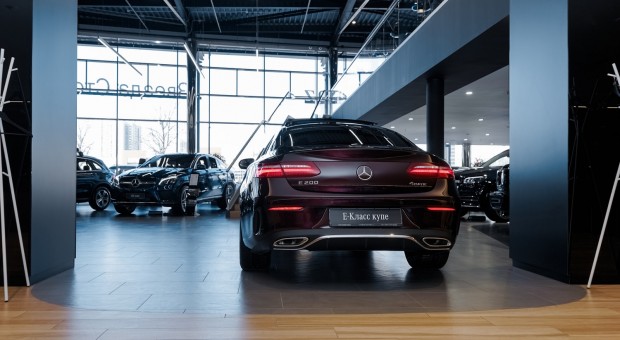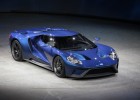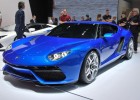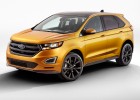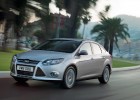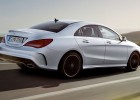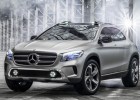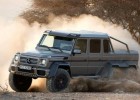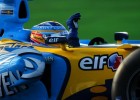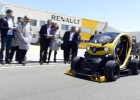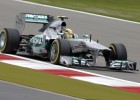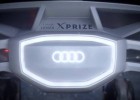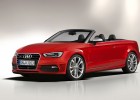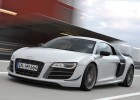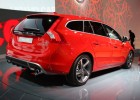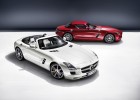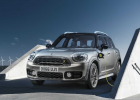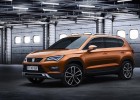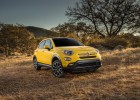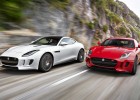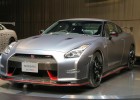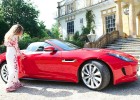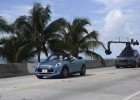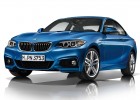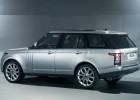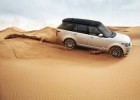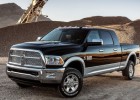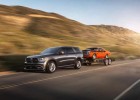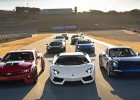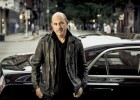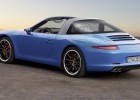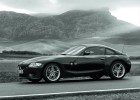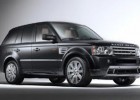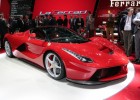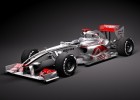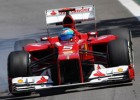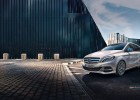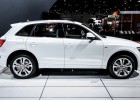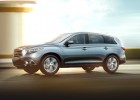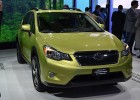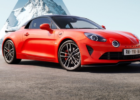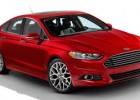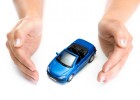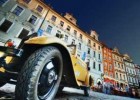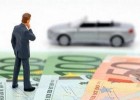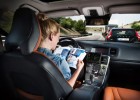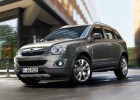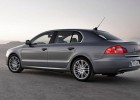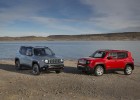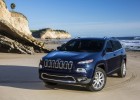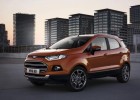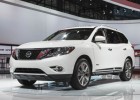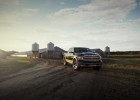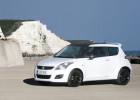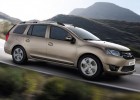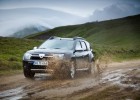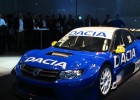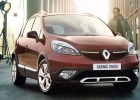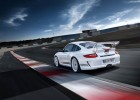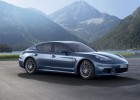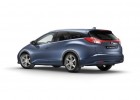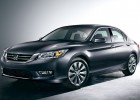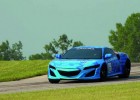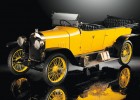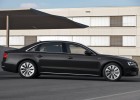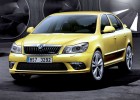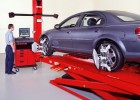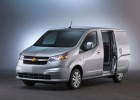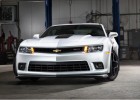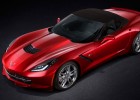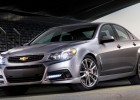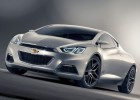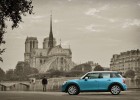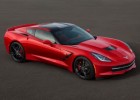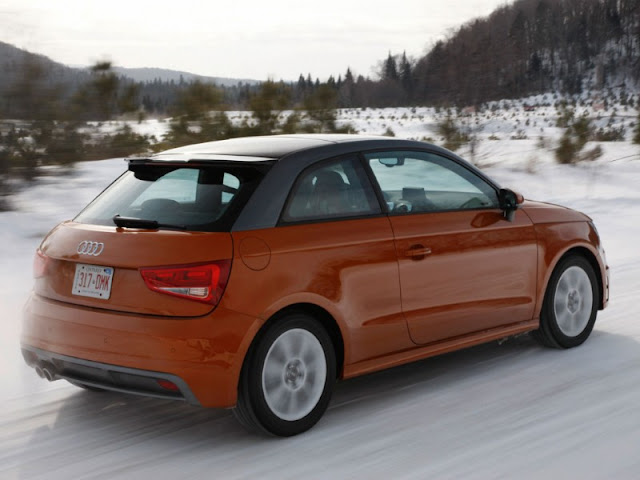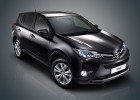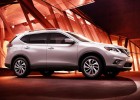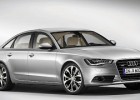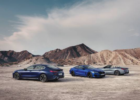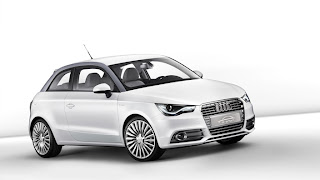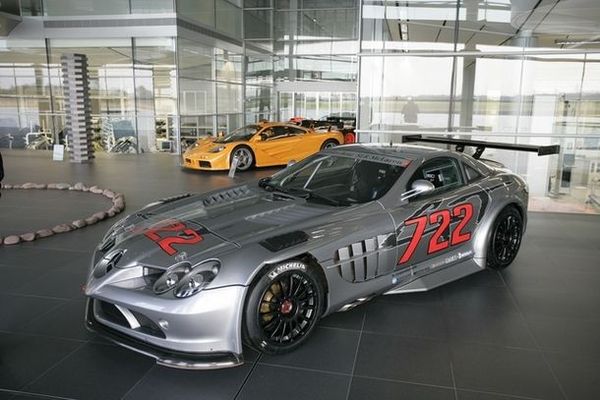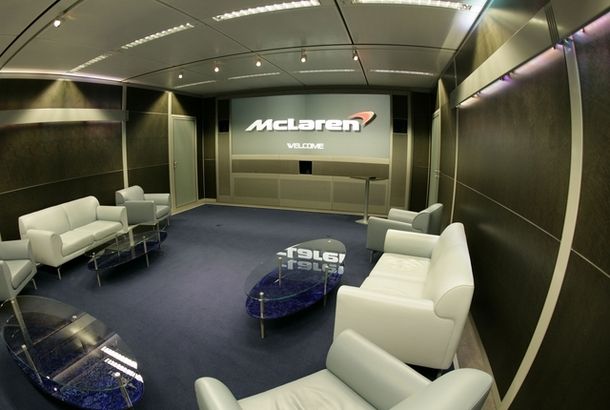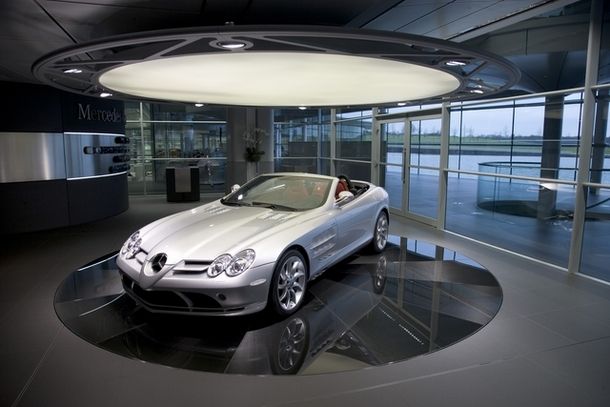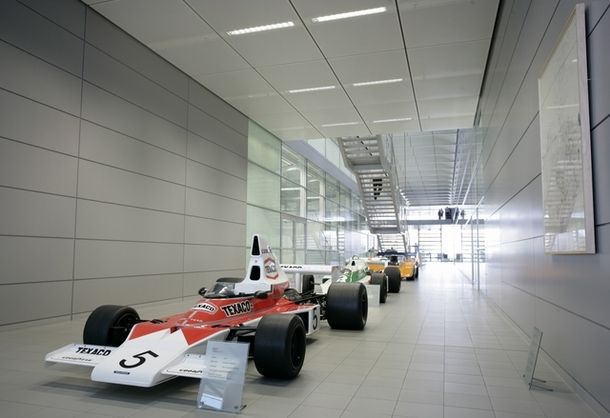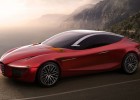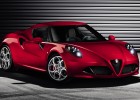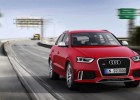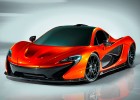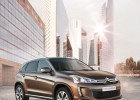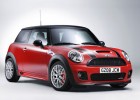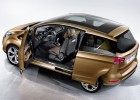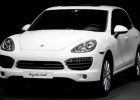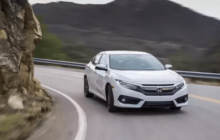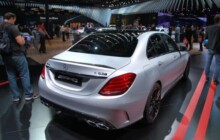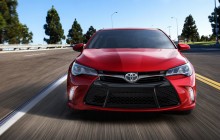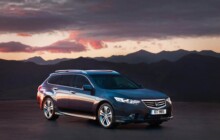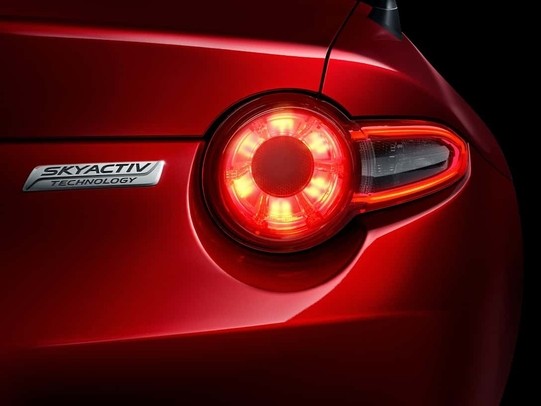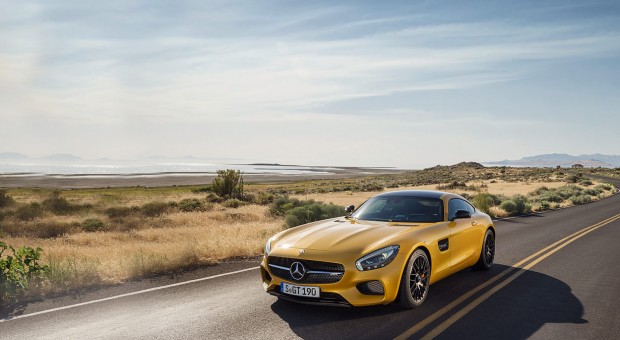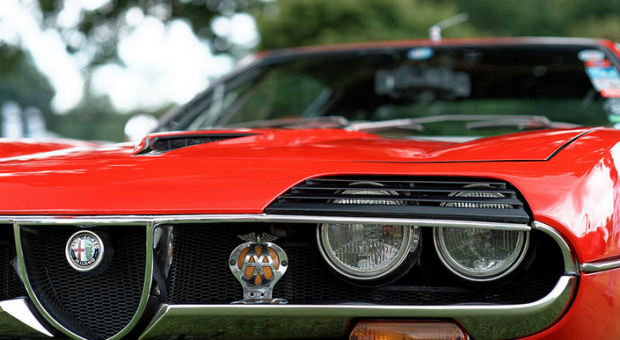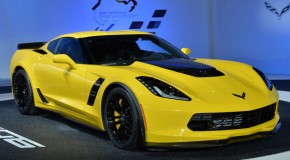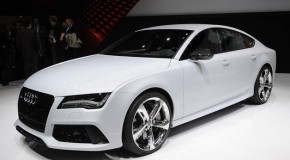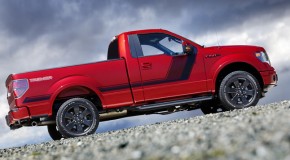2011 Mustang Race – Ford Mustang Club Intro
| Browse our latest car database to discover more cars |
Discover more automotive news & videos
Mercedes-Benz – 125 Years inventor of the automobile!
Happy Birthday, Mercedes-Benz. 125 Years Inventor of the Automobile
At night in the Mercedes-Benz Museum in Stuttgart — a chorus of horns with a difference
| Browse our latest car database to discover more cars |
Discover more automotive news & videos
F1 – Ferrari F150 launch – Shakedown at Fiorano with Felipe Massa
| Browse our latest car database to discover more cars |
Discover more automotive news & videos
Audi – 24 Hours @ Le Mans vs Audi R18
For the ninth time Audi has won the legendary 24 Hours of Le Mans and thus equalized Ferrari##Q##s position in the roll of honor in the French endurance classic.
At the 78th edition of the race, efficiency and reliability were the decisive factors yet again — both are special fortes of the Audi brand which has a reputation of developing highly efficient automobiles.
Audi aims to continue its string of victories at the Le Mans 24 Hours with a completely new LMP1 sports car development. Since its debut in 1999, the brand with the Four Rings has won the world##Q##s most important endurance race as many as nine times with the R8, R10 TDI and R15 TDI models.
In doing so, Audi has equaled this feat in the race##Q##s roll of honor with Ferrari. With the new Audi R18, which was presented at the Audi Sportpark in Ingolstadt on the evening of Friday, December 10, 2010, Audi is aiming for its tenth Le Mans success in 2011.
For the first time since 1999, Audi will contest Le Mans with a closed coupe again. “In the future, aerodynamic efficiency will be even more important at Le Mans than it was in the past,” says Head of Audi Motorsport Dr. Wolfgang Ullrich. “A closed car has clear advantages in this respect.
Our computer simulations have been confirmed in the wind tunnel and during initial track tests.”
Significantly smaller engines than those used before will be prescribed at Le Mans in 2011 as the rule makers aim to achieve a substantial reduction of engine power. By opting for a 3.7-liter V6 TDI unit, Audi retains the diesel concept that saw its first victorious fielding in 2006.
“From our point of view, the TDI continues to be the most efficient technology,” says Ulrich Baretzky, Head of Engine Development at Audi Sport. “There are good reasons why the share of TDI units among Audi##Q##s production models is as high as it is.”
| Browse our latest car database to discover more cars |
Discover more automotive news & videos
Interactive Helicopter Simulator
Leave your car for a while and take the helicopter for a breathtaking experience
| Browse our latest car database to discover more cars |
Only driving safely will not see angels!
Only driving safely will not see angels!
To have a long life, always please drive safely and carefully …
| Browse our latest car database to discover more cars |
Discover more automotive news & videos
Pagani Huayra – Road Test
Pagani has finally revealed its much rumoured and much anticipated successor to the Zonda: Meet the Pagani Huayra.
The Huayra, pronounced h-wire-a, is only the second model to emerge from Pagani, and features a twin-turbo 6.0-litre AMG V12 producing 730bhp and 811lb ft of torque.
Pagani hasn##Q##t released performance figures, but rest assured they will be lightly shattering; that 730bhp AMG V12 – made specifically for Pagani – only has to propel 1,350kg of Huayra, and the tyres are rated to 230mph.
At its heart, the Huayra##Q##s tub is constructed from Pagani##Q##s exclusive carbon-titanium, inside which sits that monster AMG engine and a bespoke seven-speed paddleshift transmission from Xtrac.
The suspension is a race-type pushrod setup, with adjustable Ohlins dampers and aluminium alloy wishbones.
The tech on the Huayra reaches a veritable zenith with four individual computer-controlled flaps on the car##Q##s upper surfaces, allowing the downforce on each corner to be controlled. Yes, programmable downforce in a road-car.
It gets gullwing doors, and the central console inside is machined from a solid billet housing a multi-function screen. As you can see from the pics, the interior is a work of automotive art.
Mr Pagani also reckons the Huayra can achieve 23.5mpg on the combined cycle, which, considering, is surely a miracle.
Source: YouTube
| Browse our latest car database to discover more cars |
Discover more automotive news & videos
2011 Jaguar XKR Supercharged & XKR series review
2011 Jaguar XKR Supercharged review – XKR are only limited editions
XKR Silverstone
Only 107 Silverstone models were made in Phase I (MY2000), and 456 in Phase II (MY2001) in celebration of Jaguar##Q##s return to F1 racing in 2001.
It featured a Platinum paint finish, specific badges and tread plates,a high-performance package (with the same engine as the standard XKR, but improved transmission, steering, suspension and brakes), 20 inch Silver BBS “Detroit” wheels and a custom interior (red-stitched black leather and birds-eye maple wood) .
All possible factory options were included, to the exception of the telephone and the navigation system, which had to be ordered separately. Phase I cars were only for UK, so they all were RHD; Phase two cars were all for export, all LHD except 40 RHD cars for the Japanese market.
XKR 100
Built to celebrate the centenary of Jaguar##Q##s founder, 500 ##Q##XKR 100##Q## coupes and convertibles combined total were made in 2002.
The XKR 100 featured an Anthracite paint finish, Recaro seats, 20 inch BBS alloy wheels, Brembo brakes, and custom interior. This model may be referred to as the XKR-R as well.
The convertible-only Portfolio models were produced in 2004 exclusively for the US market. Of the Portfolio models, 100 featured unique Red paint with matching Recaro sports seats and interior, whilst the remaining 100 had Blue paintwork and interiors.
XKR 4.2-S
In Europe the 4.2-S was unveiled at Geneva on 1 March 2005. This was the last XK to be rolled out that was based upon the original 1996 design.
Features for the 4.2-S included new exterior and interior colours and two distinct veneer options for the instrument panel, polished door treadplates with chequered-flag emblems and embossed, leather-edged floor mats.
The revised white Jaguar badge on the bonnet also feature chequered accents. New 19″ Atlas wheels plus cross-drilled Brembo brake discs, red wheel badges and red brake callipers were also fitted.
XKR-R
Jaguar XKR-R convertibleJaguar also produced a concept car called the XKR-R which was very similar to the production XKR, but boasting a more powerful 450 bhp (340 kW) engine, a manual gearbox, a limited-slip differential and improved handling.
The naming convention is similar to that of the S-Type R special edition. Unlike the S-Type R, it will never be realised on a Mk.1 XK chassis although a model of the same name could appear on the Mk.2 XK later this year.
| Browse our latest car database to discover more cars |
Discover more automotive news & videos
Top 10 best car engines awarded @ Ward’s 10 Best Engines of 2011
Top 10 best car engines awarded @ Ward##Q##s 10 Best Engines of 2011
Dana Holding Corporation (NYSE: DAN) announced today that it is supplying powertrain technologies to seven of the Ward##Q##s 10 Best Engines of 2011. The annual awards were presented earlier this month during the North American International Auto Show in Detroit.
The products Dana supplies to the honored engines help to improve durability, reduce oil consumption, improve engine performance and efficiency, reduce emissions, enhance installation flexibility, reduce part count, and reduce vehicle weight.
Winning engines and the Dana technologies include:
– Audi S4 3.0L TFSI Supercharged DOHC V-6 – cylinder-head gasket;
– BMW 335i 3.0L N55 Turbocharged DOHC I-6 – cylinder-head gasket;
– Dodge Avenger 3.6L Pentastar DOHC V-6 – exhaust system gasket and fuel cooler;
– Ford Mustang GT 5.0L DOHC V-8 – oil pan gasket, cam cover, exhaust system gasket, engine oil cooler, exhaust manifold gasket, and valve stem seals;
– Chevrolet Volt 1.4L DOHC I-4/111kW – battery cooler and thermal bypass valve;
– Volkswagen Jetta TDI 2.0L DOHC I-4 – cylinder-head gasket, exhaust manifold gasket, and exhaust gas recirculation gasket;
– Volvo S60 3.0L Turbocharged DOHC I-6 – fuel cooler and heat shields.
SOURCE Dana Holding Corporation
| Browse our latest car database to discover more cars |
Discover more automotive news & videos
Chevrolet Camaro SS Convertible vs Ford Mustang GT – Professional Road Test
Road & Speed Test: 2011 Chevrolet Camaro SS Convertible vs 2011 Ford Mustang GT
A driving test is a procedure designed to test a person##Q##s ability to drive a motor vehicle and alos to test the car abilities.
A road test generally consists of one or two parts; the practical test, called a road test, used to assess a person##Q##s driving ability under normal operating conditions, and car abilities to confirm a person##Q##s knowledge of driving and relevant results of the tested car. Road test is made only by professional drivers and pilots.
Now, please welcome the new Camaro and Mustang GT – With the all new Camaro Convertible due to hit showrooms soon, we got a hold of one and put it up against it##Q##s Ford rival.
| Browse our latest car database to discover more cars |
Discover more automotive news & videos
Gumpert GT, Lutz Dirty Secret, Top Gear My First Car, Jaguar XK – Spy Shots
Gumpert GT, Lutz Dirty Secret, Top Gear My First Car, Jaguar XK – Spy Shots
The Jaguar XK series (XK8 and XKR) is a grand tourer produced by British car maker Jaguar since 1996.
The car was introduced in Geneva Motor Show on 5 March 1996. It is the replacement of the XJS, and is available as a coupé and convertible.
Currently in its second generation, the XK8 was the first 8 cylinder vehicle produced by Jaguar, when the Jaguar AJ-V8 engine was introduced.
A new Gumpert will hit us at the Geneva Auto Show in two months, we hear it may be a new Grand Tourer. Also, Bob Lutz##Q##s dirty secrets are revealed and new spy shots of the upcoming Jaguar XK facelift.
Check this TV report presented by Derek DeAngelis:
| Browse our latest car database to discover more cars |
Discover more automotive news & videos
BMW Security Vehicles (armoured versions). Training and road fight test
BMW Security Vehicles. Training and road fight test
The BMW 7 Series is a line of full-size luxury vehicles produced by the German automaker BMW. Introduced in 1977, it is BMW##Q##s flagship car and is only available as a sedan or extended-length limousine
On a former soviet military airport, BMW offers its toughest driver training. Here, drivers of BMW High Security Vehicles can develop their driving skills and push the cars to their limits.
BMW also built armoured versions of the 7 series vehicles.
The models have protection levels VR6/VR7. Security features include laminated windows, carbon fibre reinforced armour plating, under body armour, emergency front windscreen exit, lowered door windows, run flat tires.
See it in action! Deep Inside East Germany…
| Browse our latest car database to discover more cars |
Discover more automotive news & videos
Bentley Arnage T – Road Test & Review
Bentley Arnage T – Road Test & Review
The Bentley Arnage is a large luxury car produced by Bentley Motors in Crewe, England from 1998 to 2009.
The Arnage, and its Rolls-Royce-branded sibling, the Silver Seraph, were introduced in the Spring of 1998, and were the first entirely new designs for the two marques since 1980.
Another break from the past was to be found under the bonnet, for decades home to the same 6.75 litre V8 engine, a powerplant which could trace its roots back to the 1950s.
The new Arnage was to be powered by a BMW V8 engine, with Cosworth-engineered twin-turbo installation, and the Seraph was to employ a BMW V12 engine.
The Arnage is over 5 metres (197 in) long, 1.9 metres (75 in) wide, and has a kerb weight of more than 2.5 metric tonnes. For a brief period it was the most powerful and fastest four-door saloon on the market.
In September 2008, Bentley announced that production of the model would cease during 2009.
Jeremy Clarkson strokes his fingers over the motor cathedral that is the Bentley Arnage T before powering it around the Top Gear track in this fantastic clip
| Browse our latest car database to discover more cars |
Discover more automotive news & videos
New 2011 Land Rover Freelander 2 – Commercial
| Browse our latest car database to discover more cars |
Discover more automotive news & videos
Dodge, Chrysler & Jeep Unveils 16 New and Improved Vehicles at the St. Louis Auto Show
Chrysler Group LLC Unveils 16 New and Improved Vehicles at the St. Louis Auto Show
This year auto show goers will have a chance to interact and experience the new designs, interior refinements and improved efficiency of vehicles like the award winning 2011 Jeep Grand Cherokee and Dodge Durango, both finalists for the 2011 North American Truck of the Year.
Fresh from its North American International Auto Show debut, the all-new Chrysler 300 and new Jeep Compass will be seen for the first time outside Detroit.
Dodge:
– 2011 Avenger
– 2011 Charger
– 2011 Challenger 392
– 2011 Grand Caravan
– 2011 Journey
– 2011 Durango
Chrysler:
– 2011 Chrysler 200
– 2011 Chrysler 300
– 2011 Chrysler Town & Country
Jeep:
– 2011 Jeep Compass
– 2011 Jeep Patriot
– 2011 Jeep Wrangler
– 2011 Jeep Grand Cherokee
“St. Louis is an important market for Chrysler Group and we sincerely hope that customers will take the time to experience all of our great new products at the show. I am confident that they will be impressed with how far we##Q##ve come and the amazing value we have to offer,” said Kommor.
The Chrysler Group display at the America##Q##s Center has been completely transformed with 16 all-new and/or redesigned products from the company##Q##s Chrysler, Jeep®, Dodge and Ram Truck brands arriving for the first time at the 2011 St. Louis Auto Show.
“Over the past two years, the product and design teams at Chrysler Group have been working diligently to update our line-up and today the final products are arriving at the St. Louis Auto Show and in dealerships across the greater St. Louis area,” said Jeff Kommor, director of Chrysler Midwest Business Center.
SOURCE Chrysler Group LLC
| Browse our latest car database to discover more cars |
Discover more automotive news & videos
Ford F-150 EcoBoost ‘Hero’ Engine Laid Bare In Front of Live Audience In Final Web Documentary
Ford F-150 EcoBoost ##Q##Hero##Q## Engine Laid Bare In Front of Live Audience In Final Web Documentary
The block, pistons, turbos, crankshaft, valves and other internal parts of the 3.5-liter F-150 EcoBoost “hero” engine are still within rigid factory specifications after enduring testing that simulated 10 years of wear or about 160,000 miles.
In an unprecedented – and high-stakes – public reveal, Ford engineers disassembled the engine for the first time in front of a live audience of nearly 1,000 at the North American International Auto Show (NAIAS) in Detroit.
“I was amazed that, first, the engine looked as good as it did, and second, Ford took the chance of opening it up in front of the public,” said Gary Heinz, coordinator of the Automotive Student Service Education Training program at Henry Ford Community College in Dearborn.
“You know that in a Detroit crowd, there are a lot of auto mechanics who know a good engine from a worn out one,” said Heinz, a long-time engine mechanic who watched the teardown with a group of students.
Heinz said he credits the engine design, the high-quality manufacturing process and the precise tolerances between the moving parts with the low wear found on the components.
Over the past three months, EcoBoost engine No. 448AA performed a series of rigorous events to prove out the new technology##Q##s durability. Specifically, the engine hauled 55 tons of lumber, ran at full throttle for 24 straight hours towing 11,300 pounds, beat competitors##Q## larger V8 engines in an uphill towing competition and completed the world##Q##s toughest desert endurance race, the SCORE Tecate Baja 1000, in Mexico.
Said one spectator: “Ford has a lot of guts to take this apart in public, especially after all that has been done to this engine.”
Ford powertrain technician Chris Rahill has torn down nearly 2,000 engines in his 20-year career at Ford Motor Company. He said the engine he disassembled is not even close to being near the end of its life.
“Given the intense engineering and research and the severity of the durability tests we run that go into all Ford engines, I##Q##m not at all surprised how good this engine looked,” said Rahill. “Everything was within manufacturing specification. Nothing was out of the norm.”
The comparative lack of engine sludge/grime indicates that the engine##Q##s PCV (positive crankcase ventilation) system and the recommended Motorcraft 5W-30 synthetic blend motor oil – available off the shelf – worked in harmony to contribute to clean engine operation.
The PCV system essentially “recycles” crankcase gases back into the intake for reburning, which contributes to improved fuel economy and lower emissions.
In terms of oil consumption, the 2011 F-150 EcoBoost has a 10,000-mile oil change interval and includes an intelligent oil life monitor (IOLM). The IOLM uses actual engine and vehicle operating conditions to more precisely calculate anticipated service intervals, depending on vehicle operating conditions, as follows:
Up to 10,000 miles: normal commuting with highway driving
5,000 to 7,500 miles: trailer tow/high-load driving
3,000 to 5,000 miles: short-trip usage, extreme temperatures
Instead of using a predetermined interval schedule (either by time or mileage), the IOLM tells customers, based on their driving habits and engine operating conditions, when to change the oil through simple communications in the message center.
Intense testing key to durability
The F-150 EcoBoost engine saw its first action on the dyno in July. Engineers punished it in temperature and load extremes simulating a regimen tougher than any customer##Q##s.
“In the initial dyno test, we accelerated real-world mileage or engine cycles,” said Fabien. “We ran at much higher engine speeds and higher torque levels and added in more extreme temperature swings than a customer can possibly do. We can go from minus-20 coolant temperature to 235 degrees within three minutes at peak power.
“Essentially, with these accelerated tests, we can run conditions customers may be able to get into for a short period of time, but we do it for hours on end.”
After the dyno testing, most engines would be ready to be rebuilt or retired, but the EcoBoost torture test was just beginning.
Source: NAIAS & Ford.
| Browse our latest car database to discover more cars |
Discover more automotive news & videos
NAIAS News Flash: The 2011 North American International Auto Show – announced the overwhelming success of this year’s world-premier event
NAIAS News Flash: The 2011 North American International Auto Show
Organizers of the 2011 North American International Auto Show (NAIAS) announced today the overwhelming success of this year##Q##s world-premier event citing increases in international media turn out, vehicles revealed, manufacturer returns for 2011 and already for 2012, as well as public attendance figures. A sampling of unprecedented milestones since the challenged global economy##Q##s effects of 2009 include:
Press Preview attendance of 5,000 international media from 60 countries.
55 new product unveilings, with significant first-time seen “world-wide” reveals.
21,000-plus visitors attended the two-day Industry Preview representing 27 countries (approximately 16,000 attended in 2010).
$2.6 million raised for local children##Q##s charities by a goal-surpassing 10,500 attendees at the annual black-tie gala, Charity Preview.
A second straight year of public attendance increases with 735,370 visitors to NAIAS, which included the breaking of a single-day record from 1993 of 74,900 for a Friday, with 75,327 attending this year. The total attendance for 2010 NAIAS was 714,137.
“The 2011 NAIAS validated all promises made by exhibitors in 2009 and 2010 as the product pipeline is full and vibrant,” said 2011 NAIAS Chairman, Barron Meade. “The ability to rise up from the difficult economic times of the recent past in glowing fashion indicates a positive ripple effect for our local, national and global economies. NAIAS is again proud to kick off a new year by providing a global stage for so many to be spotlighted.”
Meade also noted the economic impact for the region saw another boost as it is estimated between $350 and $375 million was funneled into the local economy from visitors to NAIAS in the form of hotels, transportation, catering and entertainment, a more than $25 million improvement over the 2010 NAIAS.
This year saw the return of Porsche and the announcement that Nissan will be returning in 2012. In addition, while the press conference schedule provided an unprecedented amount of news and coverage, NAIAS leadership is listening to its customers: the manufacturers, the auto suppliers, and the media, and is already planning a two-day 2012 press conference schedule which will best accommodate anticipated news as well as the likelihood of more manufacturer representation.
Bill Perkins, 2012 NAIAS Chairman, indicated the recent show has set a strong foundation for the next, and that exciting updates about the 2012 show will be provided throughout the coming year.
“What sets NAIAS apart and keeps it a global draw from so many influential audiences is its commitment to not rest on its laurels, but to keep building, striving and adapting,” Perkins said. “The work and updates we are hearing from Cobo Center management as to what is planned for Cobo Center for the 2012 show will have people awed and amazed. This was an outstanding year, but I already can##Q##t wait for what is around the corner for 2012 NAIAS.”
Watch for exciting local and national broadcasts from the NAIAS:
Locally, WWJ-TV CBS Detroit, with the Detroit Economic Club and the Detroit Auto Dealers Association, presented a fabulous headline-grabbing “BIG FOUR” event with Oakland County Executive L. Brooks Patterson, Detroit Mayor Dave Bing, Wayne County Executive Robert Ficano and Macomb County Executive Mark Hackel. You can see it as a “Michigan Matters” special airing 11 a.m. on Saturday, Jan. 29, on WWJ-TV CBS Detroit.
The NBC Sports “International Auto Show” special will air Sunday, Jan. 30 from 12:30 – 1:30 p.m. EST. The show will once again bring the excitement of the NAIAS into millions of homes and will include an up-close and personal look at some of the world##Q##s hottest and most fascinating vehicles on display at NAIAS.
Source: NAIAS
| Browse our latest car database to discover more cars |
Discover more automotive news & videos
The 911 Black Edition Campaign "Power of Attraction" – limited edition
The 911 Black Edition Campaign “Power of Attraction”
Black. Strictly speaking, black isn’t a colour at all. It is, in fact, the absence of all colour, of light and, indeed, of anything else.
Black does not reveal all, but keeps the most important things under wraps. It has an allure epitomised by the legendary ‘little black dress’.
Quite simply, it symbolises the power of attraction. The 911 Black Edition. Limited to 1,911 vehicles.
Just Porsche Black Edition! Just amazing!
| Browse our latest car database to discover more cars |
Discover more automotive news & videos
2012 Ferrari FF – New 4WD Ferrari FF (720P HD) Concept Review
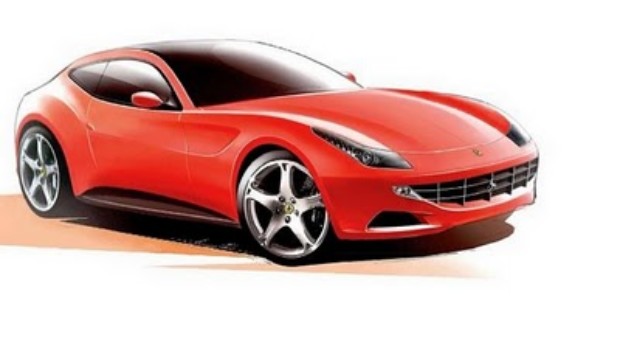
Introducing the New 4WD Ferrari FF
As widely predicted Ferrari revealed its first four wheel-drive model this morning, a revolutionary four-seater, four-wheel drive V12 Ferrari to replace the 612 Scaglietti.
They have named it the FF — an acronym for Ferrari Four (four seats and four-wheel drive) — although we have to assume that Maranello had one eye on the 1970s Jenson Interceptor, which first brought the FF tag to the market (FF stands for Ferguson Formula, after Ferguson Research Ltd., who invented the car##Q##s four-wheel drive system) and coincidentally was also the first four-wheel drive car to reach production
A revolutionary four-seater, four-wheel drive V12 Ferrari: exceptional performance and versatility
Maranello, 21st January 2011 — The official Prancing Horse web site, Ferrari.com, has revealed the first photographs of the new FF, the company##Q##s most powerful, versatile four-seater ever, as well as its first ever four-wheel drive car.
The FF – an acronym for Ferrari Four (four seats and four-wheel drive) – ushers in an entirely new GT sports car concept. A decisive break with the past, the new car represents not so much an evolution as a true revolution.
This new V12 melds to an unprecedented level an extremely sporty, high-performance character with incredible versatility, superb comfort and sophisticated elegance, guaranteeing both driver and passengers an absolutely unique driving experience.
Designed by Pininfarina, the shape and proportions perfectly interpret the FF##Q##s harmonious blend of sporting DNA and extraordinary usability.
The FF features the company##Q##s first ever four-wheel drive system. Ferrari##Q##s exclusive, patented 4RM (four-wheel drive) weighs 50 per cent less than a conventional four-wheel drive system, maintaining perfect weight distribution (53 per cent over the rear axle).
Completely integrated with the car##Q##s electronic dynamic control systems, the four-wheel drive technology delivers record levels of performance on all terrains and in all conditions via continuous and intelligent predictive torque distribution to all four wheels. The FF is also equipped with the latest magnetorheological damping system (SCM3), as well as the most recent development in carbon-ceramic brakes from Brembo.
It has a 6.2L V12 that makes 660HP ! It has 4 seats and a 4RD system that##Q##s the same as a 4WD but lighter.
This is the final design for the car. The few sounds you can listen to are accelerations, launch control, burnout and wheelspin, upshifts (it has a double clutch gear box now) and downshifts !
| Browse our latest car database to discover more cars |
Discover more automotive news & videos
Audi Q7, A8, Audi TT Coupe and Audi A5 Cabriolet earn top marks in the Strategic Vision 2010 Total Value Index
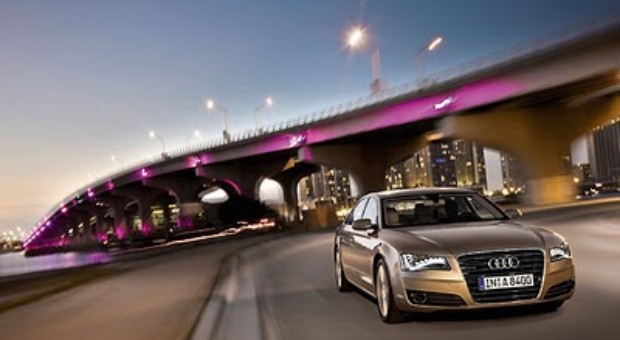
Four Audi models earn top marks in the Strategic Vision 2010 Total Value Index™
– Audi Q7 led the Luxury SUV segment for the third straight year
– Audi A8 named tops in Total Value among Luxury Cars; Audi TT Coupe and Audi A5 Cabriolet also recognized in their segments
– The annual index measures total value from the ownership experience to financial costs
Four Audi models earned the highest scores in their categories, according to the newly released Strategic Vision 2010 Total Value Index.
The Total Value Index measures the total value of a vehicle from the ownership experience to financial considerations, such as fuel economy, resale value and reliability. It’s a comprehensive study that Strategic Vision has issued for 14 years. In the 2010 report, Audi had more segment leaders than any other luxury car manufacturer. For the third consecutive year, the Audi Q7 took the top position in the Luxury SUV category. The Audi A8 won the Luxury Car Category, while the Audi A5 Cabriolet was named the top model among convertibles costing more than $30,000. The Audi TT Coupe turned in the best score in the category for Premium Coupes costing more than $28,000.
“Overall value is a key factor with today’s luxury car buyers,” said Johan de Nysschen, President, Audi of America. “We recognize that future success depends on meeting the short-term and long-term value expectations of our customers.”
“Times are hard and people are working harder than ever,” said Christopher Chaney, Vice President, Strategic Vision. “Increasingly, shoppers will define value as more than the listed residual or resale value numbers, and include ’What am I getting now that I have spent tens of thousands of my hard earned dollars?´”
The Total Value Index was calculated from 111,212 buyers who bought models during September 2009 to June 2010.
The Audi A8 was selected as the Best Luxury Car for 2010, scoring high on in-vehicle technology and standard features, as well as fuel economy and value for money.
“Strategy in understanding customers for this segment is critical in order to compete,” said Strategic Vision President Alexander Edwards. “Like other Audi models, A8 is exceptionally impressive with technically innovative and standard equipment features.”
The Audi TT led the Premium Coupe category due to its fuel economy, perceived reliability and price/deal offered, surpassing the segment average by 50 points. The Audi A5 Cabriolet also represented a significant leadership role within the segment, seen as a substantial value for money vehicle that didn’t sacrifice premium characteristics.
The Audi Q7 led the Luxury SUV segment, earning high scores for technical innovations, perceived value, standard equipment and fuel economy.
Find more information on the Strategic Vision 2010 Total Value Index report by visiting StrategicVision.com | Source: Audiusanews.com
| Browse our latest car database to discover more cars |
Discover more automotive news & videos
Volkswagen L1 Concept diesel-electric hybrid
L1 is a car with two seats placed one behind the other and has a diesel-electric hybrid.
Diesel engine with two cylinders is 0.8 liters, and works in two ways: eco and sports. In eco mode, the engine develops CP/4.000 27 rpm and the engine develops 39CP sports mode.
Nm/1.900 maximum torque to 100 rpm. The electric motor torque can add up to 40%.
Consumption is also reduced due to the fact that the machine table is only 380 kg, body is made of carbon fiber reinforced plastic.
Transmission is automatic 7-speed DSG, and the maximum speed is 160 km / h.
| Browse our latest car database to discover more cars |
Discover more automotive news & videos
Audi confirms driver line-up for new Audi R18
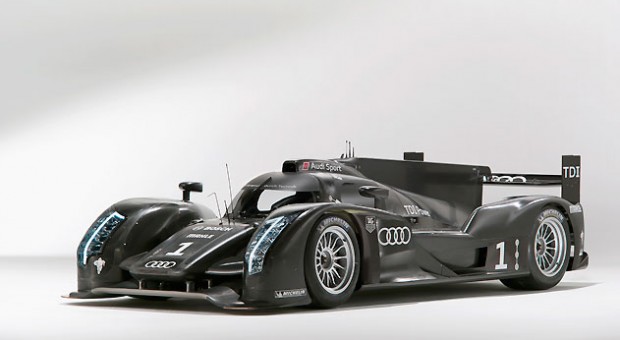
– Unchanged formation for 24 Hours of Le Mans
– 2010 Le Mans winners also race at Sebring
– Bernhard, Fässler, Kristensen and McNish form ILMC core team
Head of Audi Motorsport Dr. Wolfgang Ullrich has managed to sign all nine drivers who mounted the podium after last year’s historical one-two-three Audi finish in the 24 Hours of Le Mans for Le Mans in 2011. The drivers who compete for the Intercontinental Le Mans Cup (ILMC) for Audi are also confirmed.
“Over the last few years we’ve had a very strong and harmonious driver line-up at Le Mans,” says Head of Audi Motorsport Dr. Wolfgang Ullrich. “Any one of our three cars could have won, which explains why it was our aim to compete with an unchanged driver squad at Le Mans in 2011. I’m delighted that we achieved this. Now we can concentrate solely on the development of the Audi R18 and need not integrate any new drivers into the team, which would have been associated with additional work and risks. The schedule to Le Mans is tight enough as it is.”
The three new Audi R18, competing in the 79th running of the endurance classic on 11/12 June 2011, will be occupied exactly as the three R15 TDI that broke the old distance record on the way to claiming the first three finishing positions. The R18 with start number “1” is driven by last year’s winners Timo Bernhard (Germany), Romain Dumas (France) and Mike Rockenfeller (Germany). Le Mans record winner Tom Kristensen (Denmark) once again forms a team with Dindo Capello (Italy) and Allan McNish (Scotland) with whom he triumphed in 2008 at Le Mans. Last year’s second placed finishers Marcel Fässler (Switzerland), André Lotterer (Germany) and Benoît Treluyer (France) share the third R18.
The same Audi Sport Team Joest squad also contests the official Le Mans test day on April 24 and the 6-hour race at Spa-Francorchamps (Belgium) on May 8, which Audi uses as dress rehearsal for Le Mans again this year and in which the technically innovative Audi R18 will celebrate its race debut.
For the opening round of the Intercontinental Le Mans Cup (ILMC) at Sebring (US state Florida) on March 19, Audi Sport Team Joest will compete with two Audi R15 TDI cars modified to comply with the new technical regulations. At the wheel sit current Le Mans winners Timo Bernhard, Romain Dumas and Mike Rockenfeller as well as 2009 Sebring winners Dindo Capello, Tom Kristensen and Allan McNish.
Tom Kristensen/Allan McNish and Timo Bernhard/Marcel Fässler are regular race drivers for the four remaining Intercontinental Le Mans Cup races held after the 24 Hours of Le Mans. If required, Audi can fall back on Porsche “factory” driver Romain Dumas to reinforce its squad at Road Atlanta.
“Due to the clashing dates in the DTM and ILMC it wasn’t easy to form the driver squad,” says Head of Audi Motorsport Dr. Wolfgang Ullrich. “For example, it prevented Mike Rockenfeller from driving a complete season in the R18. But with Porsche ‘factory’ driver Timo Bernhard, Marcel Fässler, Tom Kristensen and Allan McNish for the sport prototypes we have a strong core squad with which we are well placed.”
In addition to the races a comprehensive test program with the Audi R18 is on the agenda for all nine Audi sportscar drivers. The tests will be held in the USA and Europe.
The 2011 Audi driver line-ups
Sebring
Dindo Capello/Tom Kristensen/Allan McNish
Timo Bernhard/Romain Dumas/Mike Rockenfeller
Spa, Le Mans
Dindo Capello/Tom Kristensen/Allan McNish
Timo Bernhard/Romain Dumas/Mike Rockenfeller
Marcel Fässler/André Lotterer/Benoît Treluyer
ILMC after Le Mans
Tom Kristensen/Allan McNish
Timo Bernhard/Marcel Fässler
| Browse our latest car database to discover more cars |
Discover more automotive news & videos
Ford Focus Electric offers customers environmentally friendly options throughout, which, coupled with advanced engine technology, deliver zero-emissions driving in an all-around green vehicle
The environmentally friendly reach of the Ford Focus Electric goes beyond its zero-emissions motor.
Focus Electric combines recycled and renewable materials, green technologies and innovative manufacturing processes to make the car green from bumper to bumper.
“An electric vehicle is already considered a green vehicle, but Ford wanted to go a step further by looking at ways to make the materials inside the Focus Electric more eco-friendly as well,” said Carrie Majeske, product sustainability manager, Ford Motor Company. “Using recycled or renewable materials in lieu of petroleum-based materials allows Ford to minimize the amount of virgin materials used in the Focus Electric.”
The Focus Electric is not only green in areas where customers expect it to be, but also in places they might not, like in the seat cushions. Soy-based foams, which are used on more than 20 Ford vehicles, will be used in Focus Electric, with seat cushions shaped from 8 percent soy-based content.
A material called Lignotock also is used behind the cloth on the door. Derived from 85 percent wood fibers, this lighter application results in a weight reduction and provides better sound-deadening benefits compared to conventional glass-reinforced thermal plastics.
“One of the more impactful things we are doing is finding a way to increase the use of recycled materials in resins. We have a strategy that specifies the use of a large quantity of post-consumer recycled material in a range of plastic applications,” said Majeske. “Pop bottles and milk jugs eventually become part of components like underbody shields, wheel arch liners and air cleaner assemblies.”
By using more recycled content in resins, Ford can further reduce the amount of oil-based plastics in vehicles. This also cuts down on overall oil consumption. Applications of the post-consumer plastics also include carpets, roof lining and replacement bumpers.
Ford, Detroit Edison and Xtreme Power are teaming up to establish one of Michigan’s largest solar power generation systems and electric vehicle charging stations at Michigan Assembly Plant in Wayne, Mich., where Focus Electric will be produced.
Ford will work with Detroit Edison to install a 500-kilowatt solar photovoltaic panel system, which will be integrated with a 750-kilowatt energy storage facility that can store 2 million watt-hours of energy using batteries – enough to power 100 average homes for a year.
Several new and innovative production processes at the plant will help make the vehicle even greener. For example, a new three-wet paint process applies all three coats of finish in sequence before oven curing, ensuring high-quality paint finish and a significant reduction in energy use.
With charging playing a major role in Focus Electric ownership, Ford also looked to make the vehicle’s home charging stations greener.
Jointly developed with Leviton, a leading North American producer of electrical devices, Ford is offering a charging unit that has an outer shell made from up to 60 percent post-consumer recycled material
Source
| Browse our latest car database to discover more cars |
Discover more automotive news & videos
Audi Launches Eco-Friendly Auto Show Initiative With Digital Collateral
Audi has extended its commitment to technological innovation and environmental stewardship by giving auto show attendees the ability to have electronic brochures of Audi##Q##s 2011 lineup delivered instantly to their mobile phones as an alternative to printed copies. The program officially launched during public days at the North American International Auto Show in Detroit.
Audi has dramatically increased its focus on environmental awareness as seen in its revolutionary TDI clean diesel product line and its e-tron electric supercar. The move to digital distribution is expected to reduce the amount of printed material handed out at shows by up to 90% by the end of the 2010-2011 season. It##Q##s also expected to have a considerable impact on the printing, shipping and distribution costs associated with delivering brochures to millions of attendees over the course of the auto show season.
Digital Collateral is providing the technology platform, which enables visitors with smartphones to scan special, 2-dimensional “QR” barcodes that have been placed next to each model on the show floor. Scanning a code adds that model##Q##s brochure to an online library that can be viewed right from a phone, or from any computer after the show. Visitors without smartphones can send free SMS text messages to populate their libraries- so anyone capable of sending a text can make use of the platform. The service is complimentary, requires no pre-registration, and visitors##Q## personal information is never revealed.
“Audi has always sought to deliver a superior experience through superior technology. Digital Collateral##Q##s software allows us to reach more consumers more efficiently, while simultaneously reducing the costs and environmental impact associated with delivering the information our customers want,” said Scott Keogh, Chief Marketing Officer, Audi of America. “We look forward to finding new ways to use the Digital Collateral platform as the season progresses.”
“Digital Collateral is thrilled to partner with Audi for the 2010-2011 trade show season,” said Jaxon Repp, CEO of the Denver-based startup. “Audi customers are accustomed to having the very best technology at hand when they drive, and Digital Collateral is dedicated to making the most of the technology they have in their hands when they##Q##re at the show. Mobile marketing is only as impactful as the message you deliver, and the product brochures, videos, and websites we##Q##ll be delivering on behalf of Audi truly set them apart from everyone else at the show.”
Audi will continue to offer this service at major auto shows throughout the rest of the 2010-2011 season in the U.S.
| Browse our latest car database to discover more cars |
Discover more automotive news & videos
Truck accident on highway in Canada
An 18-wheeler truck in Canada crashes through a highway median into oncoming traffic.
The driver who recorded the accident has an amazing feel and avoid the truck. The driver avoids tragedy.
| Browse our latest car database to discover more cars |
Discover more automotive news & videos
About car logos
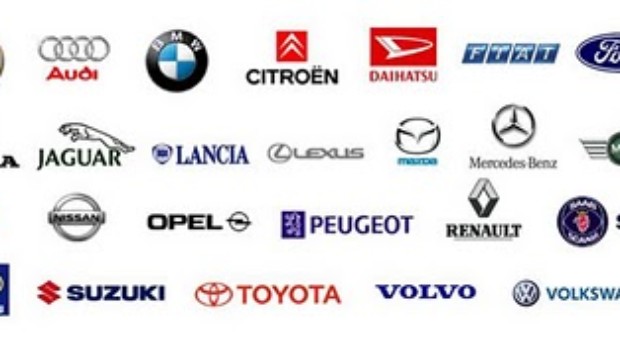
Indeed, we care about and for cars more than we care for ourselves. And often, the first thing we care about is the brand, symbolized by the logo.
Some of these car logos are famous throughout the world, instantly recognizable at a moment’s notice. The Mercedes Benz three-pointed star, the Ferrari prancing horse, the Chevrolet bow-tie – they represent the brand wherever there products are found. Here, we present the not-so-well-known stories behind some of these well-known logos, in no particular order. We have intentionally not included logos that are self-explanatory, such as those that include the name (or initial) of the brand – Ford, Honda, etc.
1. Mercedes Benz: Two German car manufacturers, Benz & Cie. and Daimler Motoren Gesellschaft, merged in 1928 giving rise to Daimler Benz Co. The famous three-starred logo was originally designed by Gottlieb Daimler in 1909, and subsequently featured on Daimler Benz cars. After Daimler’s death, his partner, Wilhelm Maybach, took over the company and sold many Daimler cars to wealthy businessman Emile Jellinek, who later bankrolled development of a new line of cars named after his daughter Mercedes. Hence, the name. The logo is supposed to represent the brand’s “domination of the land, the sea, and the air.”
2. Ferrari: The famous Cavallino Rampante or “prancing horse” logo has its origins in a chance meeting between company founder Enzo Ferrari and Countess Paolina, mother of Count Francesco Baracca who had been an ace of the Italian air force and used to paint a horse on the side of his planes. The Countess asked Ferrari to paint a horse on his cars for luck. The black color was used to symbolize grief at Baracca’s death in action while the yellow color represented his birthplace of Modena.
3. Chevrolet: The Chevrolet bow-tie logo is one of the simplest, yet most well-known corporate symbols in the world. It was first used in 1913 and there are conflicting stories on its origin. While one theory goes that it was inspired by a wallpaper pattern seen by co-founder William Durant, another says that it represents a Swiss cross in a homage to the origins of the other co-founder Louis Chevrolet. Incidentally, Durant had founded General Motors before he was forced out and established Chevrolet.
4. Dodge: The brand has a new logo since this year, but most people still identify it with the “ram’s head” logo. The logo first appeared as a hood ornament in the 1930s. The ram was chosen for its ruggedness, something Dodges have always tried to portray. In fact, so popular did the logo become that Dodge trucks began to be called Rams. Today, it is still used for the spun-off Ram brand.
5. Buick: Not many know that Buick is the oldest American automobile manufacturer. Founded in 1899 by David Dunbar Buick, it was later acquired by William Durant and became the centerpiece of the General Motors conglomerate. The logo was originally a single shield representing Buick’s ancestral coat of arms. In 1960, the single shield was replaced by a trio in red, white and blue representing the three cars then in the Buick stable – the LeSabre, Invicta, and Electra.
6. Maserati: This Italian luxury car manufacturer was established in 1914 by the five Maserati brothers Alfieri, Bindo, Carlo, Ettore, and Ernesto, in the town of Bologna. The trident logo was designed by an artist and is based on a sculpture in the Fontana del Nettuno (Fountain of Neptune) at Bologna. Neptune is the Roman God of the Seas and is represented with a trident in his hand.
7. Mitsubishi: The Mitsubishi brand of cars is member of a larger conglomerate that began life as a shipping firm in 1914 and is named after the Japanese words for three diamonds (“mitsu” meaning “three” and “bishi” meaning “water caltrops,” also rhomboidal like diamonds). Consequently, the origin of the logo becomes clear.
8. Subaru: The name of the company is actually the Japanese translation of the Pleiades star cluster, which also means “to gather together.” Subaru is a division of Japanese transportation conglomerate Fuji Heavy Industries (FHI). The name refers to the five companies that joined forces (Fuji Kogyo, Fuji Jidosha Kogyo, Omiya Fuji Kogyo, Utsunomiya Sharyo and Tokyo Fuji Sangyo) to form FHI. The logo represents the cluster.
9. Mazda: The company derives its name from the Persian God Ahura Mazda as well as the name of the founder Jujiro Matsuda. The stylized “M” logo, also known as the “owl” logo, represents Mazda stretching its wings for the future. It may also represent Ahura Mazda, who is often depicted by a flying sun-disk.
10. Audi: The company’s name is based on the surname of the founder August Horch, meaning listen – which, when translated into Latin, becomes Audi. Horch had originally founded Horch Automobil-Werke, from where he was forced out before founding Audi in 1899. In 1932, Audi merged with Horch, DKW, and Wanderer, to form Auto Union. The Audi logo of four intersecting rings represents this merger. Its resemblance to the Olympic logo caused the International Olympic Committee to sue Audi in 1995.
11. Pontiac: GM may have declared its intent to phase out the Pontiac brand by the end of 2010, but its arrowhead logo continues to be highly visible on American roads. The brand was named after Native American leader Chief Pontiac who led a struggle against British occupation in the 18th century. While the earliest Pontiac logo depicted by a Native American chief’s headdress, it was updated in 1957 to the currently used American Indian red arrowhead design, also known as the “Dart.”
12. BMW: Rounding off this list is drivers’ favorite BMW. The abbreviation stands for Bayerische Motoren Werke AG (Bavarian Motor Works). The two-layered circular BMW logo, also described as a roundel, has been interpreted to represent a spinning propeller, considering the company started as a manufacturer of aircraft engines. The white and blue colors represent the official flag of Bavaria, a state in Germany where BMW originated.
John Kendrick Bangs (1862-1922), American author, editor and satirist.
Related External Links
| Browse our latest car database to discover more cars |
Sexy insurance advertising campaign
The advertisement completely change the symbolism of car commercials
| Browse our latest car database to discover more cars |
Discover more automotive news & videos
Technical Car Improvement – Technical revision of the cars: Things to have in mind
What##Q##s Wrong With My Car? – Troubleshooting Problems
Technical revision is made annually to a car – or as implied in contract terms or the dealer terms / your personal consultant. The costs of technical revisions may be between 100$ and 5,000$ depending on the problems diagnosed and what kind of parts must be replaced!
First, a technical revision involves a correct analysis to the proper vehicle, in terms of electronics and mechanical.
It is adviceable to do the technical revision in time – to avoid problems – chain of parts and mechanisms where there is a unworkable system in the parameters (engine, suspension components).
Technical inspection is performed using computer systems (the tests) and mechanical / manual check (validation) in the direction subassemblies.
If the problem is not diagnosed and repaired, (analyzed), check and displays the results provided by the sensors. Software tester can not always identify the problem claimed by the owner of the car.
The analysis and revisions to take into account – the last exchange made, levels of fuel and supplies to be used and replaced.
We recommend that you write a book to note any change – parts or supplies – keeping the car##Q##s history if you do not have a book service.
As you can see what has changed, what needs to be changed or not do not forget to take into account the investment in the car.
The check on the power engine with tester (through the trip computer) and also each electronic component:
Internal components of the machine:
# Indicators and sensors onboard
# Headlights, indicators
# Position lights, signals, fog lights and remote sensors
# Alarm system, central locking, interior lights and indicators
# Heating, cooling system (climatronics)
# The onboard computer # and error messages returned
# Mirrors
# Other electrical / electronic components
Engine Components:
# Do the compression test
# Check their equivalent mileage and trip computer / display
# Level and spark parameters
# State files
# Status of the battery / electric motor (starter)
# How to load and the electrical / mechanical
# Timing belt kit and water pump roller
# Alternator belt
# Checking the box steering fluid, brake fluid, coolant and windshield liquidity
# Check the condition freon
# Belts and hoses must be intact
Liquid supplies engine components:
# Concentration of antifreeze
# Oil Leaks
# Change the air filters periodically, fuel, oil and pollen
Direction of the mechanical components:
# Status of the steering joints (rod ends, bolts, connecting rods and anti-roll direction, bushings, etc.)
# Check and make steering angle
# Check convergence and camber
# Check the variables of the brake pads and brake discs
I hope these tests and checks will be useful to consider it appropriate for your needs. We are waiting for your comment(s) – useful to develop this guide – for new drivers!
| Browse our latest car database to discover more cars |
Discover more automotive news & videos
All about Audi quattro drive (models & technologies)
The quattro models from Audi
More than 30 years after the introduction of quattro drive, today Audi is the world’s leading premium-segment manufacturer of passenger cars with permanent all-wheel drive. The current model lineup includes more than 120 quattro variants; several models are available exclusively with all-wheel drive. From 1980 through the end of 2010, Audi produced roughly 3.7 million cars with quattro drive. In addition to the volume models, the S and the RS models also play an important role here.
Production models
The first Audi with permanent all-wheel drive debuted at the Geneva Motor Show on March 3, 1980. It was simply called the Audi quattro and advertised its rugged character with a new, chiseled body. Its turbocharged five-cylinder engine developed 147 kW (200 hp) and 285 Nm (210.21 lb ft) of torque from 2,144 cc displacement. This made the quattro, which is referred to today as the Ur-quattro (original quattro), a very fast sports car, accelerating from 0 to 100 km/h (62.14 mph) in 7.1 seconds on its way to a top speed of 222 km/h (137.94 mph).
Beginning in 1982, Audi gradually added additional all-wheel drive models to the first quattro. The first TDI with quattro powertrain, the A6 2.5 TDI quattro, followed in 1995. The compact Audi models – the A3 and TT lines – have also been available with permanent all-wheel drive since 1998. Today Audi offers the quattro drive in every model series from the A3 upward.
The Audi Q5
The Audi Q5 features quattro drive as standard. The performance SUV combines the dynamics of a sports sedan with a highly variable interior. The tailgate and the engine hood are made of lightweight aluminum. The body integrates a large proportion of high-strength and ultra-high-strength steels, which reduce the weight and improve rigidity, vibrations and crash safety.
Interior space is generous, and the luggage compartment’s base capacity of 540 liters (19.07 cubic ft) can be increased to 1,560 liters (55.09 cubic ft) by folding down the rear seat backs. Audi offers a sliding rear bench seat and a folding seat back for the front passenger’s seat as options.
Audi offers the Q5 with a choice of six engines: three gasoline engines and three TDI units. The torque of the gasoline engines is further boosted by the Audi valvelift system, which switches the valve lift in two stages. The Q5 recovers energy during braking regardless of the engine installed. The range begins with the 2.0 TFSI quattro with 132 kW (180 hp) and ends with the 176 kW (240 hp) 3.0 TDI quattro. A six-speed manual transmission is standard with the four-cylinder engines; the seven-speed S tronic is available as an option with the most powerful four-cylinder gasoline and TDI engines. The dual-clutch transmission is standard with the 3.2 FSI and the 3.0 TDI.
The chassis also contributes to the sporty character of the Audi Q5. The optional Audi drive select manages the engine’s throttle response, the steering characteristic and the shift points of the S tronic. Audi offers adaptive damper control and dynamic steering as additional system modules. The Audi Q5 also holds its own in rough terrain: the electronic stabilization program (ESP) and anti-lock brake system both have an offroad mode.
The Audi A7 Sportback
Audi is once again breaking new ground in design with the Audi A7 Sportback, whose lines convey aesthetic athleticism and elegance on a grand scale. Measuring 4.97 meters (16.31 ft) in length, the five-door model is an Audi in a new top form. Its low, dynamically drawn roofline lends it the character of a coupe. Optional LED headlights up front accentuate its distinctive appearance; LED tail lights are standard.
Audi offers the A7 Sportback with a choice of four powerful and cultivated V6 engines: two gasoline and two TDI units. They produce between 150 kW (204 hp) and 220 kW (300 hp), and their efficiency sets new standards in the vehicle class.
The new 3.0 TDI with 150 kW (204 hp), which will be available somewhat later, consumes on average just 5.3 liters of fuel per 100 km (44.38 US mpg), corresponding to CO2 emissions of just 139 g/km (223.70 g/mile). All engines feature a recuperation system, innovative thermal management and a start-stop system.
The standard automatic transmissions also play a role in the high efficiency of the Audi A7 Sportback. Audi offers two different transmissions: The convenient multitronic sends engine power to the front wheels, the sporty seven-speed S tronic to all four wheels. The quattro permanent all-wheel drive system is paired with the crown-gear center differential and torque vectoring. A sport differential at the rear axle is available as an option.
Chassis
The chassis, too, combines sporty precision with luxurious comfort. The A7 Sportback rolls on large wheels measuring from 18 to 20 inches in diameter. The links are made of aluminum; the newly developed power steering features an electromechanical drive. The Audi drive select dynamics system is standard and can be supplemented by the optional adaptive air suspension. Dynamic steering will be available somewhat later.
The sinewy sportiness of the exterior carries over into the interior of the A7 Sportback, where all of the details document the care with which Audi builds cars. High-quality new materials, such as layered wood veneers, indulge the senses. The front seats are available with optional ventilation and massage functions.
The five-door coupe combines supreme long-distance comfort with a sporty character. The excellent vibration behavior is the result of painstakingly tuning all components, systematic hydraulic damping in the axle and drivetrain bearings, and the extremely stiff body. Comprised primarily of aluminum and high-tech steels, it is extremely lightweight and very safe. The long rear hatch opens to reveal a large luggage compartment.
The A7 Sportback offers a new level of technical intelligence with logical, self-explanatory ergonomics. The optimized MMI operating system comes standard; among the optional equipment is a head-up display. The groundbreaking MMI touch operating system combines a hard drive navigation system with the convenience of touchpad input.
The online services provided in collaboration with Google connect the five-door Audi coupe to the Internet via the online Bluetooth car phone. A UMTS module pulls images and information from Google Earth up on the monitor and integrates them with the navigation route. A WLAN hotspot provides contact to mobile devices on board, such as an iPad.
The top navigation system works closely together with the many optional driver assistance and safety systems in the A7 Sportback. It provides the route data to the control units for the headlights, the automatic transmission and the adaptive cruise control with stop & go function. This enables these systems to recognize complex scenarios. In many cases, the Audi pre sense safety system can reduce the severity of accidents and their consequences. The new Audi active lane assist helps the driver to keep the A7 Sportback firmly on course, and the park assist system – also new – relieves the driver of the chore of steering when parallel parking.
The Audi A8 and the A8 L
The A8 and the long-wheelbase A8 L are at the front of the luxury class. The Audi flagship boasts a lightweight aluminum body, powerful and highly efficient engines, the improved MMI operating system and a luxurious interior.
The elegant and distinctive body is an aluminum Audi Space Frame (ASF). It is roughly 40 percent lighter than a comparable steel body while also impressing with high rigidity and excellent vibration comfort. It earned Audi the Euro Car Body Award, the world’s most important award for innovative car body design. The LED headlights are another high-end solution.
The A8 is available with four direct-injection V6 and V8 engines: two gasoline units and two TDI units. The entry-level engine is the 3.0 TFSI with 213 kW (290 hp); the engine with the greatest torque is the 4.2 TDI with 258 kW (350 hp). A second variant of the 3.0 TDI will follow at a later date. It provides 150 kW (204 hp) of power, drives the front wheels and consumes only 6.0 liters per 100 km (39.20 US mpg) in the EU driving cycle.
An additional engine is available for the A8 L – the W12 is a supremely powerful and refined gasoline engine that is unusually short and lightweight. The normally aspirated, 6.3-liter engine with direct injection produces 368 kW (500 hp) and 625 Nm (460.98 lb-ft) of torque.
The standard eight-speed tiptronic features closely spaced gears while still featuring a wide spread. Its control system is purely electronic, operated with an elegant selector level and paddles on the steering wheel. The quattro permanent all-wheel drive has a distinctly sporty and rear-biased character. The optional sport differential dynamically distributes the forces between the rear wheels; this feature is standard with the 4.2-liter TDI.
The A8 and the A8 L offer both luxurious ride comfort and sporty handling. Their wheel control arms are made of aluminum. The brake discs measure up to 400 millimeters (15.75 in) in diameter, depending on the engine. The adaptive air suspension with controlled damping is standard equipment and is integrated into the Audi drive select dynamics system. It can be further supplemented by the optional dynamic steering.
The interior of the A8 enchants with new, light lines, craftsman-like fit and finish, and extraordinary attention to the smallest of details. The A8 L is 13 centimeters (5.12 in) longer than the standard version in both wheelbase and overall length (5.27 meters [17.29 ft]).
Audi offers the rear seat passengers the option of two power-adjustable and heated individual rear seats, which can be paired with the optional continuous center console.
The individual seats can also be equipped with optional ventilation and massage functions, and features such as a folding table and a cool box make the passengers’ stay even more enjoyable. The top version is the relaxation seat with power footrest. It comes complete with every available luxury option, including a rear seat entertainment system.
Similar to the A7 Sportback, the Audi A8 and the A8 L feature a new degree of technical intelligence. It manifests in the MMI operating system or the optional MMI touch, in the networking of the MMI navigation plus with other vehicle systems and in the assistance systems. The most important of these is the radar-based adaptive cruise control with stop & go function. It works closely together with the Audi pre sense safety system. Another special feature is the night vision assistant that highlights detected pedestrians.
Audi also offers many attractive multimedia modules. The top version is the Bang & Olufsen Advanced Sound System, which boasts 19 speakers. The luxury sedan is at the head of the pack with respect to Internet connectivity. It offers a WLAN hotspot and many attractive services in cooperation with Google as a service partner.
The Audi Q7
The Audi Q7 is the large, versatile performance SUV for sporty individualists. Its design stands for power and presence, with flowing surfaces forming a moving sculpture. The engine hood, the front fenders and the rear hatch are aluminum.
The Q7 engine lineup offers six efficient engines with six or eight cylinders producing between 150 kW (204 hp) with the 3.0 TDI and 250 kW (340 hp) with the 4.2 TDI. A recuperation system that recovers energy during braking is standard. Three variants of the 3.0 TDI are available. The clean diesel version complies with all U.S. emission standards and the future Euro 6 limits.
All of the engines deliver their power to the quattro permanent all-wheel drive via an eight-speed tiptronic. With its wide spread and long-ratio upper gears, the automatic transmission also makes an important contribution to good efficiency.
The Audi Q7 has a particularly sophisticated chassis. Aluminum double wishbones mounted on a separate subframe guide the wheels. Audi can also deliver the adaptive air suspension on request. Wheel sizes range from 18 to 21 inches in diameter. Large ceramic-fiber brake discs are available as options for the two most powerful models. The ESP stabilization program includes an offroad mode, and a hill descent assist is also on board.
Thanks to its luxurious 3.00 meter (9.84 ft) wheelbase, the 5.09 meter (16.70 ft) long Audi Q7 has interior room to spare. 27 different seating configurations are possible. Audi can deliver the big SUV with five, six or seven seats as desired by the customer. The seat backs in the second row can be folded, increasing the cargo capacity from a volume of 775 liters (27.37 cubic ft) to 2,035 liters (71.87 cubic ft).
Three different types of seats are available for the driver and the front-seat passenger, with heated and ventilated climate-controlled comfort seats as the top version. With its elegant lines and many upscale details, the interior conveys the typical Audi wellness feeling. Options include such luxury features as a four-zone automatic air conditioning system. Audi offers an entire system of infotainment modules, and high-performance assistance systems round out the range.
The Audi Q7 V12 TDI quattro
The Audi Q7 V12 TDI quattro is the most powerful diesel SUV in the world. Its V12 draws 368 kW (500 hp) of power from 1,750 cc displacement and delivers 1,000 Nm (737.56 lb-ft) of torque to the six-speed tiptronic between 1,750 and 3,250 rpm. Requiring just 5.5 seconds for zero to 100 km/h (62.14 mph) and with a governed top speed of 250 km/h (155.34 mph), the Audi Q7 V12 TDI quattro has the performance of a powerful sports car, yet consumes on average just 11.3 liters of fuel per 100 km (20.82 US mpg). The standard equipment of the top model includes 20-inch wheels, a ceramic brake system, the adaptive air suspension, a Bose sound system and sport seats.
The S models
Audi launched the S model family in 1990. They used abundant power, refined style and quattro permanent all-wheel drive to further cultivate the dynamic image that the brand had earned in racing.
The first S model was the Coupé S2, the successor to the first quattro. Power was provided by the 161 kW (220 hp) five-cylinder turbo of its predecessor. The S models quickly established themselves in all categories – in the compact class, the mid-size class, the full-size class, the luxury class and the TT compact sports car.
The Audi S3 and the Audi S3 Sportback
Topping the A3 model line today are the Audi S3 and the S3 Sportback with 195 kW (265 hp). The two-liter TFSI with direct injection and powerful turbocharger is a true high-performance engine, with which the S3 sets standards in its class. The three-door model sprints to 100 km/h (62.14 mph) in 5.7 seconds (with S tronic: 5.5 seconds). As with all S models, the top speed is governed at 250 km/h (155.34 mph).
The driver of the S3 changes gears via a manual six-speed transmission. In the quattro drivetrain, a hydraulic multi-plate clutch with an electronic control unit distributes the torque. The body of the S3 is 25 millimeters (0.98 in) lower than an A3 with the standard chassis. Stiffer chassis bearings and a sporty steering characteristic enhance precision. Large brakes provide the stopping power, and 18-inch wheels deliver the power to the road.
The Audi S4 and the Audi S4 Avant
The Audi S4 and the S4 Avant are powerful athletes. Their engine, the 3.0 TFSI, is supercharged and highly throttle-responsive. The V6 serves up 245 kW (333 hp) of power and 440 Nm (324.53 lb-ft) of torque together with a fuel consumption of just 9.7 liters of fuel per 100 km (24.25 US mpg) [Avant: 9.9 liters (23.76 US mpg)]. The sedan sprints from 0 to 100 km/h (62.14 mph) in 5.1 seconds; the Avant in 5.2 seconds.
Both versions come standard with a six-speed manual transmission. The sport suspension lowers the vehicle body by 20 millimeters (0.79 in), and a high-performance brake system provides powerful deceleration. The wheels are 18 inches in diameter.
Optional high-end technologies from Audi enable the S4 to extend its advantage even further. The seven-speed S tronic shifts gears within hundredths of a second; the sport differential distributes power actively and variably between the rear wheels while cornering at high speeds. The Audi drive select system enables the driver to alter the mode of operation of the engine, the S tronic and the sport differential as desired. Dynamic steering and adaptive damper control round out the package.
The Audi S5 Coupé, the Audi S5 Cabriolet and the Audi S5 Sportback
The S5 Coupé is powered by a classic, brawny, normally aspirated engine. The 4.2-liter V8 FSI generates 260 kW (354 hp) and delivers 440 Nm (324.53 lb-ft) of torque. It accelerates the two-door model to 100 km/h (62.14 mph) in 5.1 seconds. Audi offers the S5 Coupé with a sportier six-speed tiptronic transmission as an option instead of the standard six-speed manual transmission.
The S5 Cabriolet and the S5 Sportback have the same TFSI engine under the hood as the S4. The supercharged three-liter V6 engine generates 245 kW (333 hp) for superior performance. The Sportback completes the sprint to 100 km/h (62.14 mph) in 5.4 seconds, the Cabriolet in 5.6 seconds. The seven-speed S tronic is standard here.
The sport suspension has been dynamically tuned for all three S5 models. The high-performance brake system with its black calipers provides for powerful deceleration; the 18-inch wheels and wide tires deliver tenacious grip. Audi also offers the Audi drive select dynamics control system, the sport differential, the damper control system and dynamic steering as options.
The Audi TTS and the Audi TTS Roadster
Both versions of the TTS – the Coupé and the Roadster – are powered by a two-liter TFSI producing 220 kW (272 hp) and 350 Nm (258.15 lb-ft) of torque. The four-cylinder unit accelerates the TTS Coupé with S tronic from zero to 100 km/h (62.14 mph) in 5.2 seconds; the TTS Roadster completes this same exercise in 5.4 seconds.
Thanks to its largely aluminum body, the TTS is extraordinarily light, with a curb weight of only 1,395 kilograms (3,075.45 lb). When coupled with the optional six-speed S tronic, the TTS Coupé consumes an average of only 7.7 liters of fuel per 100 km (30.55 US mpg). The dual-clutch transmission changes gears with lightning speed and almost imperceptibly. The hydraulic multi-plate clutch, the heart of the quattro drivetrain, diverts torque from the front to the rear axle in just fractions of a second, if necessary.
The TTS comes standard with the Audi magnetic ride adaptive shock absorber system. In normal mode, it is well-balanced on the road. In sport mode, it leverages the potential of its suspension – which lowers the vehicle body by 10 millimeters (0.39 in)) – to achieve uncompromisingly dynamic handling. When the need arises, a high-performance brake system reliably brings the compact Audi sports car to a stop.
The RS models
Since 1994 the RS models, with their high-performance engines and quattro permanent all-wheel drive, have formed the dynamic spearhead of the Audi model range. quattro GmbH has been responsible for these vehicles since 2000.
The first model – the RS 2 based on the Audi 80 Avant – was created in collaboration with Porsche in 1994. Its 2.2-liter, five-cylinder engine used four-valve technology and turbocharging to produce a spectacular 232 kW (315 hp). Both performance and the brakes were in the same league as those of powerful sports cars. Additional RS models were added in the mid-size and full-size classes over the years, and the TT RS and RS 5 rounded out the range in 2009 and 2010.
The Audi TT RS and Audi TT RS Roadster
Five-cylinder engines are in Audi’s DNA. The TT RS features a prime example of such an engine, a turbocharged 2.5-liter engine with FSI gasoline direct injection. It generates 250 kW (340 hp) and delivers 450 Nm (331.90 lb-ft) of torque to the crankshaft. When the driver pushes the Sport button, a flap in the left exhaust tailpipe renders the five-cylinder unit’s sound even more intense and the engine’s responsiveness is boosted further.
The TT RS Coupé rockets from 0 to 100 km/h (0 to 62.14 mph) in 4.6 seconds; the Roadster in 4.7 seconds. With S tronic these same figures are 4.3 and 4.4 seconds, respectively. quattro GmbH will raise the top speed to 280 km/h (173.98 mph) upon request. The Coupé uses just 9.0 liters of fuel per 100 km (26.13 US mpg); the Roadster uses 9.1 liters per 100 km (25.85 US mpg). In combination with S tronic, these values improve to 8.5 and 8.6 liters per 100 km (27.67 and 27.35 US mpg), respectively. A recuperation system contributes to this efficiency.
The TT RS offers a choice of the tightly-spaced six-speed manual transmission and the new seven-speed S tronic. The dual-clutch transmission, which features a compact three-shaft layout, can handle high torques and is widely spaced, with its seventh gear designed as an overdrive. The S tronic includes launch control for lightning-fast starts.
The TT RS Coupé boasts a power-to-weight ratio of only 4.3 kilograms (9.48 lb) per hp; this same figure for the Roadster is 4.4 kilograms (9.70 lb) per hp. These top figures are due primarily to the extremely lightweight Audi Space Frame (ASF) bodies made of aluminum in the front and sheet steel in the rear. The Audi TT RS rolls on 18-inch wheels; four-piston calipers and drilled brake discs provide the stopping power up front. The sport suspension lowers the vehicle body by 10 millimeters (0.39 in), and the Audi magnetic ride adaptive damping system is available as an option.
The quattro competition models from Audi
Right from the start, Audi never had the slightest doubt that quattro was perfectly suited to motorsport. Audi entered the World Rally Championship in 1981 and was exceedingly successful.
Then race cars equipped with permanent all-wheel drive dominated every circuit racing competition they entered. The successes: 1988 in the North American TransAm series with the Audi 200 turbo quattro, the first oval track car in Audi history; 1989 in the most challenging touring car series in North America, the IMSA GTO, with the Audi 90 quattro IMSA GTO; 1990 in the German Touring Car Masters (DTM) with the Audi V8 quattro DTM; and 1996 in the Super Touring Car Cup (STW) and in six other international championships with the Audi A4 quattro Supertouring.
With its success in racing, quattro technology shaped the image of the Audi brand in a more enduring fashion than any advertising campaign costing millions ever could.
The Rally quattro
The idea of a rally car was every bit as old as the concept for the production car at Audi, originating in 1977. The Audi Sport Department was established the following year and became involved in rally racing with the front-wheel drive Audi 80.
The first quattro ran as a course car in the European Championship series race in Portugal. In early 1981, the quattro cars swept over the rally scene like a force of nature. Local driver Franz Wittmann won the Janner Rally in Austria, which was not a World Championship race, in a Rally quattro with a lead of more than 20 minutes over the second-place car.
The Rally quattro used the same five-cylinder turbo as the production car; the 10-cylinder engine developed a hearty 230 kW (roughly 310 hp) from 2.1 liters of displacement and 1.6 bar of boost. Lightweight body components limited its weight to around 1,200 kilograms (2,645.55 lb), roughly 100 kilograms (220.46 lb) less than the production car. Depending on the final drive ratio, the Rally quattro accelerated from 0 to 100 km/h (0 to 62.14 mph) in around 5.2 seconds on a dry surface.
At its World Championship debut in the Monte Carlo Rally, the quattro again demonstrated its superiority. Ten kilometers into the first stage, Hannu Mikkola passed a Lancia Stratos in the snow that had started one minute before him; only an accident was able to slow the Finn. Then, in the Swedish Rally, he clinched the first win. The French driver Michèle Mouton became the first woman to win a World Championship race in San Remo, and Mikkola emerged victorious again in the RAC Rally. At the end of the Audi model’s first year in action, it was placed third in the drivers’ standings.
By 1982, the quattro was already virtually unbeatable anywhere in the world; Audi easily captured the Manufacturers’ Trophy with seven victories. Mouton won in Portugal, Greece and Brazil; only a breakdown in the penultimate race in the Ivory Coast cost her the drivers’ title. However, Mikkola became champion in 1983 after winning in Finland, Sweden, Argentina and Portugal.
Audi introduced two evolutions of the competition car in quick succession during this season. The second version with the internal designation A2 ultimately developed as much as 295 kW (a good 400 hp). The weight was reduced to less than 1,100 kilograms (2,425.08 lb), in part due to an aluminum cylinder block.
The next year, too, began with a win. The newly recruited double world champion Walter Röhrl won the Monte Carlo Rally ahead of his team colleagues Stig Blomqvist (Sweden) and Hannu Mikkola. The season ended with Audi once again dominating the manufacturers’ championship with seven victories. Blomqvist posted five of those and won the drivers’ championship ahead of Mikkola.
The Sport quattro S1
Rally racing reached new heights in the 1984 season. The competitors exploited the very liberal regulations at that time in Group B to enter mid-engine cars that were pure race cars with only a visual resemblance to production models. Audi also considered a similar concept. A prototype was developed but then put back on ice.
Audi’s new weapon was the Sport quattro with a wheelbase of just 2,224 millimeters (7.30 ft) – an attempt to make the near-series front-engine concept lighter and more maneuverable by shortening it drastically by 300 millimeters (11.81 in). The “short” quattro raced from May in parallel with the Rally quattro A2, but took time to build up some momentum. Blomqvist had to wait until the penultimate race in the Ivory Coast for the first win. Audi needed to turn up the heat.
July 1, 1985 was the date of the homologation of the final stage in its evolution, the S1. The aluminum five-cylinder engine with 20 valves officially developed 350 kW (476 hp) and 480 Nm (354.03 lb ft) of torque; with a charge-air circulation system that kept the turbo engine constantly under boost, the actual figure was probably in excess of 370 kW (over 500 hp), at around 8,000 rpm. In the middle ratio the 1,090 kilogram (2,403.04 lb) S1 shot from 0 to 100 km/h (62.14 mph) in 3.1 seconds, and to 200 km/h (124.27 mph) in 11.8 seconds.
There were various differential locks to choose from for the quattro powertrain – multi-plate, Torsen and conventional. In the last race of the season, the British RAC Rally, Walter Röhrl used a dual-clutch transmission that was actuated pneumatically – a precursor of today’s S tronic. The chassis comprised a tubular space frame paneled with sheet steel and plastic; to optimize the weight distribution the radiator, fan, battery and alternator were at the rear. Large wings generated downforce on fast sections of the course.
Röhrl meticulously fine-tuned the S1 over a period of weeks in Liguria. At the San Remo Rally in October, he won 29 of the 45 stages and crossed the finish line as the winner with a lead of 6:29 minutes.
The powder keg days of Group B were numbered, however. The final blow came in spring 1986 when several spectators and participants were killed in accidents at World Championship races in Portugal and Corsica. Audi withdrew from the series, and FISA, the world governing body, approved the changeover to the near-series Group A rules. The new mid-engine car from Ingolstadt was never raced.
The S1 Pikes Peak
Following the end of Group B, the S1 was still able to celebrate one last triumph – victory in the 1987 Pikes Peak mountain race with Walter Röhrl at the wheel.
The “International Hill Climb” on the 4,301 meter (14,110 ft) mountain in the U.S. state of Colorado takes place at dizzying heights. The starting line at 2,866 meters (9,400 ft) and the finish line is at the summit 19.99 kilometers (12.42 miles) away. At that time, the serpentine course with its 156 curves consisted mainly of sand and gravel over a solid substrate of clay. The course is six meters (19.69 ft) wide on the straights and up to 15 meters (49.21 ft) wide in the corners; there are no guardrails. The course repeatedly runs along sharp edges like the edge of a table. At a point known as the “Bottomless Pit,” there is a gaping 1,800 meter (5,900 ft) drop-off.
Audi entered the Pikes Peak race for the first time in 1984. Michèle Mouton finished second in the Sport quattro; she won the race in 1985. In 1986, local driver Bobby Unser set a new record of 11:09.22 minutes in the S1; Walter Röhrl followed him the next year. His Sport quattro S1 was a concept of bare functionality pushed to the absolute limit. The five-cylinder engine pumped out 440 kW (nearly 600 hp) and 590 Nm (435.16 lb-ft) of torque. The recirculation system kept the large turbocharger spinning. A dual-clutch transmission directed the power to a quattro powertrain with three locking differentials.
Sitting behind the 16-inch tires with the cut slicks was a small and lightweight brake system developed specifically for hill climbs. The S1 weighed only around 1,000 kilograms (2,200 lb) and featured a tubular space frame paneled with steel and plastic. Massive wings at the front and rear pressed the body against the ground, and even the flanks sported vertical stabilizers.
On race day, June 11, Röhrl started second to last, before the driver with the fastest practice time, Ari Vatanen (Peugeot). As calm and collected as ever behind the wheel, the Bavarian navigated the world’s highest highway in the record time of 10:47.85 minutes. He got the Sport quattro S1 into sixth gear four times and was clocked at 196 km/h (121.79 mph) at the fastest part of the track. Röhrl beat Vatanen by nearly seven seconds.
Source: Audi Company
| Browse our latest car database to discover more cars |
Discover more automotive news & videos
New car sales report in Europe: 2010 vs. 2009
VW, Renault and Ford on the podium
While Volkswagen has seen a decline in sales of new cars in 2010 compared to 2009, remains the leading European car market, while Renault beats Ford.
From the outset it should be noted very good progress Renault, which ranks second in the constructors##Q## championship in Europe.
A good result – because it is counted separately from Dacia Renault “brand-daughter ” of the French concern topping a very good place top 16 in Europe, a difference of only 150 units to Korean rival Kia.
However, Romanian brand (Dacia) has a long way to go to the Skoda, which has double sales, was ranked 12.
In fact, if we refer to the TOP 10 of this ranking, only BMW, Renault and Audi scored better than in 2009. Volkswagen, which remains the best selling brand in Europe in 2010, recorded a sales decline quite significantly, 6.6%.
German competitor, Ford and Opel, is not it any better, but even these popular brands have good positions in the TOP 5, and the beating France##Q##s Peugeot and Citroen.
For that very good position triad German premium Audi, BMW, Mercedes (in that order), which occupy the last positions in the top 10, just after Fiat, Italians having the largest decrease compared to 2009 reported major competitors.
The Japanese are not the roses: Toyota, Suzuki, Honda and Mazda recorded a considerable decline compared to 2009, only Nissan and Mitsibishi being extra.
| Browse our latest car database to discover more cars |
Discover more automotive news & videos
Boom in Audi production – Audi has 13 production starts planned in 2011, including the new A6 in Neckarsulm and Audi Q3 in Martorell
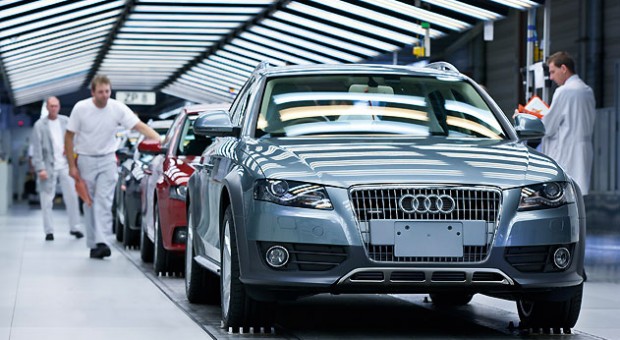
Boom in Audi production – further expansion of production capacities
+ Record production: around 1,150,000 Audi cars produced in 2010
+ Audi has 13 production starts planned in 2011, including the new A6 in Neckarsulm and Audi Q3 in Martorell
Record production and continued growth: in the past year, Audi increased production by 23.4 percent compared with 2009 to a total of 1,148,791 cars.
This is the greatest number of cars ever built in a single year in the Company’s history. The carmaker has a total of 13 production starts planned for 2011, including the Audi Q3 in Martorell (Spain), and the new Audi A6 in Neckarsulm (Germany).
Audi will begin a plant expansion this year in Győr (Hungary) for another A3 derivative. In addition, a decision should be reached by 2015 regarding possible production capacities in the United States.
“We are proud that we, along with our dedicated team and our effective Audi Production System (APS), have so successfully met the challenges of 2010,” said Frank Dreves, Member of the Board of Management for Production at AUDI AG.
“Our production figures are higher than ever before at our German sites in Ingolstadt und Neckarsulm. This sets a good foundation for us to tackle the upcoming challenges that are part of our growth strategy,” Dreves continued.
All Audi sites recorded significant production growth in the past year.
The Ingolstadt plant achieved its highest volume to date, with a total of 553,010 cars (up 7.5 percent). The Neckarsulm site increased production by 21.7 percent to 216,322 cars, and following the successful launches of the R8 Spyder, the Audi A8 and A8L, and the A7, is now focusing on the start of the new Audi A6 Sedan.
In addition, both sites made significantly higher volumes of parts sets for production in China and India (see the overview of company sites). In Brussels (Belgium) production of the Audi A1 was successfully launched.
“The Audi growth strategy provides long-term security for our sites and for the jobs of the employees who work there,” emphasized Peter Mosch, Chairman of the General Works Council of AUDI AG.
“Without their dedication, Audi would not have been able to cope with the economic crisis of 2009 as well as it did. The employees worked very hard in 2010. This resulted in more production and higher sales. Audi has emerged from the crisis stronger than ever. We want to continue following this path in the future as well.”
Dreves announced that production will continue to be expanded this year.
The successor to the top-selling A6 model is already in the starting blocks at the Neckarsulm plant. This spring, series production of the Audi Q3 begins in Martorell, where there is enough capacity to produce more than 100,000 units annually.
Following completion of the planned expansion at Audi Hungaria, another A3 derivative will begin rolling off the assembly line there in 2013. Production capacity at the Győr plant will then total 125,000 units.
In addition, a decision should be reached by 2015 regarding a possible Audi production site in the United States.
Overview of company sites
Ingolstadt plant
Production of 553,010 cars (A3, A4, A5, Q5 including derivatives; up 7.5 percent), as well as a paint shop and body shop for Audi TT and A3 Cabriolet (assembly at Audi Hungaria). Added to this are 105,341 parts sets for automotive production as part of the FAW-VW joint venture at the plant in Changchun (China) and at the Group plant in Aurangabad (India) up 103.9 percent.
This means: a total of 658,351 units (up 16.3 percent).
Neckarsulm plant
Production of 216,322 cars (A4, A5 Cabriolet, A6, A7, A8, R8 including derivatives, up 21.7 percent), as well as 118,761 parts sets for automotive production as part of the FAW-VW joint venture at the plant in Changchun, and in the Group plant in Aurangabad (up 18.4 percent).
This means: a total of 335,083 units (up 20.5 percent).
Audi Hungaria
Production of 38,541 cars (assembly of the TT Coupé, TT Roadster, A3 Cabriolet and RS 3 Sportback; up 18.2 percent), as well as 1,648,030 engines (up 19.1 percent).
Audi Brussels, Belgium
Production of 68,939 Audi cars (A1 starting in May 2010, A3 until May 2010, up 189.8 percent).
Bratislava, Slovakia
Production of 47,769 Audi Q7 models (up 71.0 percent).
| Browse our latest car database to discover more cars |
Discover more automotive news & videos
2012 Audi RS3 Sportback
Blazing performance, compact size. Audi has added a new model to its dynamic RS series: the RS 3 Sportback. In the great tradition of the brand, its engine boasts five cylinders and turbocharging technology.
From a displacement of 2.5 liters come 250 kW (340 hp) of power and 450 Nm (331.90 lb-ft) of torque, with an average fuel consumption of just 9.1 liters of fuel per 100 km (25.85 US mpg). Power is transmitted to the road via a seven-speed S tronic and quattro permanent all-wheel drive.
19-inch wheels and fenders made of carbon fiber reinforced plastic (CFRP) underscore the Audi RS 3 Sportback##Q##s position of distinction.
The RS 3 Sportback comes with an array of standard equipment including the Sport button, rear parking system, climate control, chorus radio system, and xenon plus headlights with LED daytime running lights.
Audi offers customers a range of optional features: front bucket seats, roof rails in matt aluminum look, and styling packages in black or matt aluminum. Five exterior colors are available, plus an unlimited selection of custom paint finishes.
The new top-of-the-line model in the A3 series is already the fourth Audi model to be built at Audi Hungaria in Győr, where it is rolling off the assembly line alongside the TT Coupé, the TT Roadster and the A3 Cabriolet.
Big performance in a small package: the Audi RS 3 Sportback:
• Five-cylinder turbo delivering 250 kW (340 hp) and 450 Nm (331.90 lb ft) of torque
• Zero to 100 km/h (62.14 mph) in 4.6 seconds, superior pulling power
• Seven-speed S tronic, quattro drive and 19-inch wheels
Deliveries of the RS 3 Sportback will begin in early 2011. The base price in Germany will be 49,900 euros.
| Browse our latest car database to discover more cars |
Discover more automotive news & videos
Drifting contest between a car and a motorcycle racing!
Motocycle vs Car Drift Battle
Here is an excellent proof of the fact that motorcycles can beat cars in a drifting competition!
Pilot Nick “Apex” Broch led a Kawasaki ZX10 motorcycle impressive in a duel with a Mazda RX-7 equipped with a Corvette V8 engine!
| Browse our latest car database to discover more cars |
Opel Corsa brings a new look for 2011
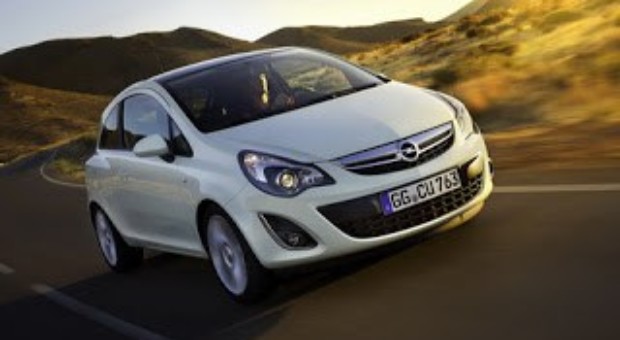
Opel Corsa brings a new look for 2011
The Opel Corsa OPC is a statement of pure driving fun. Since its launch in 2007, 13,000 units have already been sold. Eye-catching styling is backed by breathtaking performance from a 141 kW/192 hp turbo engine and a Sport Chassis set-up honed on the Nürburgring Nordschleife.
While OPC stands for Opel Performance Center, car enthusiasts know OPC is more than just an acronym – it is an expression of pure passion. OPC showcases just how much sporty potential and technological expertise is in Opel cars. The OPC versions evoke emotion and are the top of the-line variants in their model range for driving dynamics.
This ultimate expression of the Opel Corsa range’s dynamic appeal is a muscular car that now delivers a searing pace with fuel consumption reduced by 7.6 percent and CO2 emissions lowered by 9.5 percent. Performance is not affected by these changes.
The lower fuel bills let Opel Corsa OPC drivers enjoy the fun even longer, increasing the range by about 50 kilometers. This year, the OPC Team has upgraded the powertrain and improved the steering system to add more feel to the excitement on offer.
From January 2011 Opel Corsa will have new design that will align with that of the town and Astra Insignia. After 2010 Opel engines and chassis modifications, Opel is trying to keep the sales trend for a model that has proved successful in Europe.
The exterior changes are brought light to accentuate the dynamic and youthful air of the car. When viewed from the front, it is noteworthy aspect is the “smiley face” approached by Opel.
Inside, the most obvious change is remarkable central console. Opel Corsa comes equipped with a multimedia system with seven speakers, touch screen 5 “(the Touch & Connect), navigation system, Bluetooth and USB port.
In terms of motorization, Opel introduced the technology & Start / Stop the 1.3 CDTI engine that now produces 95 horsepower. In Chapter consumption, Opel is overly optimistic and specify only 3.5 l/100km on the extra-urban scheme for three-door version.
From personal experience, said that consumption is far from the actual driving conditions. Not to mention said urban consumption of 4.2 l/100 km which is a fantasy
There’s always something happening in the Opel Corsa: Everything changed under its skin in 2010 – its chassis, its steering system and engine line-up. As of January 2011, Opel’s successful small car now gets a new wardrobe.
A redesigned face lends it a sportier, expressive look, making it firmly recognizable as a member of the latest Opel design family.
A new Opel Corsa ecoFLEX, 1.3 CDTI developing 70 kW/ 95 hp also enters the range, with Start/Stop technology as standard. The three-door version requires only 3.5 liters diesel per 100 km and so emits just 94 g/km CO2.
To stay connected with the world, a new multimedia infotainment system with seven, 4×20 watt loudspeakers debuts in the Opel Corsa.
Called “Touch & Connect,” this versatile system features a five-inch color touch screen, full navigation coverage for 28 countries, Bluetooth, iPod and USB connections. It is universally connectible, simple to use and has every convenience for the 21st century built in, at a very competitive price.
Inside and out, new, contemporary colors and decors are offered. In addition to a modern charcoal hue, the interior can also be dressed with more expressive Tabasco Orange or Steel Blue decors.
The new exterior color palette integrates a delicate off-white Guacamole, eye-catching Grasshopper green and daring Henna.
In addition, the successful Color Line featuring special, sporty looking versions are enriched with a new optional “Linea” pack, featuring two large stripes stretching across the length of the body with matching colored 17-inch wheels and exterior mirror caps.
A major player in the European market since 1982, the Opel Corsa offers one of the widest product ranges in the small car segment. It has many features – like a heated steering wheel or FlexFix integrated bicycle carrier – not offered by its peers.
The major technological changes made in early 2010 in the chassis and powertrain also make it one of the most desirable small cars around: Its share in the small segment this year has increased in many European markets such as Italy, the UK, Spain and Germany.
The small car is a highly popular choice throughout Europe, accounting for some 27 percent of all Opel/Vauxhall sales and placing itself among the leaders in its segment. On average, more than 400,000 units were sold annually the last three years.
The Opel Corsa‘s latest facelift builds on the strong foundation of its existing, successful design. It still retains its approachable, friendly character, but now introduces a bold, dynamic face seen in Opel’s new design language.
The sporty execution is achieved by re-proportioning the upper and lower grilles. The lower grille has become wider and taller, thus visually widening the car.
In addition, closer examination reveals that a high degree of attention has been paid to the grille mesh, which replaces the current horizontal grille bars. The result is a car with a more dynamic stance on the street. The proud Opel logo is integrated into a newly designed larger and sculptured chromed bar, adding to the expressive appearance of the front.
Chiseled Opel eagle eyes have been added to the new headlamps along with the wing-shaped daylight signature lamp that made its debut in the Insignia and is now featured in all new Opel products.
The internals of the lamp have also been refined to create a very jewel like execution that enhances the sporty look. The new fog lamp units with integrated chrome blade complete the more expressive presence of the Opel Corsa‘s new face. The new look is further enhanced with six new alloy wheel designs and a large, redesigned Opel Blitz on the tailgate.
The line-up of the new Opel Corsa ranges from 65 hp to 192 hp. This powertrain family has been revitalized in 2010 with many new engines that reduce fuel consumption and CO2 emissions by up to 13 percent while increasing engine power in most applications.
Starting now, eco-friendly Start/Stop technology becomes a standard feature on the Opel Corsa ecoFLEX powered by the 1.3 CDTI 70 kW/95 hp engine. Thanks to this new feature, the fuel consumption in the combined cycle is reduced from 3.7 to 3.5 liters/100 km and the emissions from 98 to only 94 g/km CO2 on the three-door version. The five-door variant achieves 3.6 l/100 km and emits just 95 g/km CO2.
It’s mainly in the urban cycle that Start/Stop technology brings its major benefits, with a fuel consumption of now 4.2 liter per 100 kilometers instead of 4.6 l/100 km previously.
| Browse our latest car database to discover more cars |
Discover more automotive news & videos
Compare Mercedes E Class with the Skoda Superb
Fortunately there are alternatives. As the video below, a Skoda Superb full options (approximately 30,300 Euro) is much cheaper than an E Class with standard equipment (approximately 44,800 euros and other OptIn would exceed 60,000 Euro) and the differences are not so large.
Check please the video review:
| Browse our latest car database to discover more cars |
Discover more automotive news & videos
Top 7 misconceptions about fuel economy!
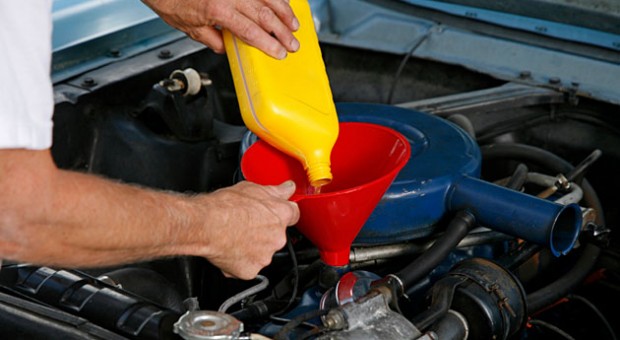
Seven misconceptions about fuel economy
Among the drivers there are some wrong opinions about how one can achieve a higher efficiency of fuel consumption. Here are some of them, and arguments that do not support these theories.
1. You have to drive a small car to get good fuel economy – advanced technologies related to diesel engines, direct injection fuel systems, transmission art, energy efficient tires, and aerodynamic design allow standard-sized cars to be very effective in terms of consumption, according to the website www.fueleconomy.gov.
2. The manual transmission saves always better than the automatic – Advances in automatic transmissions have improved their efficiency up there in a vehicle automatic version that often get the same or even better efficiency than the manual version.
3. Eat more than when you start the car let it run on empty – modern injection engines start very effective, especially when heated. Allowed to work in an empty car could use about a liter to about two liters per hour, depending on the size of your car##Q##s engine. Stop the engine when the car is stationary, except when waiting in traffic or in a column where you should start and stop it frequently. Rebooting the starter motor may wear out too often.
4. Vehicles must be heated before being led – modern cars can be driven to a few seconds after being switched on, although the engine would not be overloaded until it reaches normal operating temperature. In addition, the fastest way to drive the engine is warm.
5. As the car ages, with both its fuel consumption drops significantly – A properly maintained vehicle will retain its effectiveness for years. Tests have shown that the efficiency of a motor vehicle fuel consumption increases after the first years after his purchase. The cars are 10-15 years old low efficiency dropped if they are well groomed.
6. Replacement air filter will help your car go better – this is true for older cars that have engine carburetor, but modern engines have injected onboard computers that automatically adjusts the air-fuel ratio at the right level. Change the air filter will increase fuel savings, but could improve engine performance.
7. Using premium fuel consumption improves – If your car has not been specifically designed for premium fuel and regular fuel do not work optimally, you will not register any likely benefit from the use of more expensive fuel instead of regular one. Consult the vehicle manual to see if premium products are recommended and under what conditions. On the other hand, the use of gasoline with a blend of 10% ethanol can decrease fuel economy by about 3% because of lower energy density. In Europe, from January 1, required mix is 5% biofuel.
| Browse our latest car database to discover more cars |
Discover more automotive news & videos
ICOTY Jury Announces 2011 International Car and Truck of the Year Winners
ICOTY Jury Announces 2011 International Car and Truck of the Year Winners
The 2011 International Car of the Year Awards (ICOTY) jury announced today the winners of the 15th annual ICOTY Awards, which took place during press week of the North American International Auto Show.
The ICOTY jury, made up of 12 nationally-renowned automotive journalists, selected the 2011 vehicles as the most emotionally compelling vehicles for the new model year.
The 2011 International Truck of the Year trophy was presented to KIA Motors America Group President and CEO, Byung Mo Ahn, for the 2011 Kia Sportage.
Hyundai USA CEO, John Krafcik, accepted the award for the 2011 Hyundai Sonata named International Car of the Year.
“While we##Q##re proud of the Sonata from a technical and engineering standpoint, this award addresses the fact that our cars are now the sorts of vehicles that appeal to the lifestyle set,” said Hyundai CEO John Krafcik.
“With sales up more than 110 percent from last year, the Sonata and its all four-cylinder lineup has been a game changer for us, and we##Q##re thrilled to be recognized by the ICOTY awards.”
Presenters included jury members, Courtney Caldwell, Editor-in-Chief, Road & Travel Magazine; James Bell, VP Corporate Communications and Executive Market Analyst, Kelley Blue Book; Joe Wiesenfelder, Senior Editor, Cars.com; and Perry Stern, editor of MSNAutos.com.
Sponsored by Bridgestone, ICOTY celebrates its 15th anniversary this year. “Through good times and bad, Bridgestone has continued to support ICOTY, which has allowed us reach this milestone anniversary for which we are very grateful,” adds Caldwell.
“It##Q##s our honor to sponsor this award recognizing the excellence in ingenuity by auto manufactures, and we appreciate the longstanding partnerships, both in the showroom and on our highways, we##Q##ve enjoyed with many of them.
We congratulate both Kia and Hyundai on their prestigious awards and look forward to creating world-class products for all manufacturers in the years to come,” said Michael Martini, President Bridgestone##Q##s OE Division, of BATO.
Please follow this link to see the video event!
| Browse our latest car database to discover more cars |
Audi, researchers at four U.S. universities begin work on solutions to urban mobility challenges
Audi, researchers at four U.S. universities begin work on solutions to urban mobility challenges
A new research initiative launched by Audi, its Electronics Research Laboratory in Silicon Valley and four top U.S. universities will develop technologies aimed at easing the congestion, dangers and inconveniences that often confront drivers in the world’s biggest cities.
The new three-year research initiative is called “Audi Urban Intelligent Assist.” The aim is to take connected car, driver assistance and infrastructure electronics to the next level of providing detailed information so motorists have a better sense of the driving conditions surrounding them.
With this initiative, the universities, ERL and Audi want to cover the complete process of navigating in a mega city. The vision is to develop Audi models that will recognize individual motorists behind the wheel, know preferred destinations, routes the motorists have most commonly traveled and the time needed to reach appointments. The car will be able to help the drivers detect and avoid dangerous situations better, too.
The universities involved in the Audi Urban Intelligent Assist initiative are the University of Southern California, University of California at Berkeley, University of California at San Diego and the University of Michigan Transportation Research Institute (UMTRI).
“Technologies that help motorists become more aware and efficient are a crucial step toward solving some of the biggest transportation challenges on the horizon across the world,” said Dr. Burkhard Huhnke, executive director of the Audi Electronics Research Laboratory in Palo Alto, Calif. “Audi is confident that this initiative will provide an important insight on the future of urban transportation and produce innovative concepts that promote efficient, pleasant, and safer mobility.”
The universities that will be involved
The Audi vehicles envisioned in this new project would work with a city’s connected infrastructure to, for example, reserve a parking spot near the driver’s desired destination and optimize the trip according to what is happening throughout the city. The future connected Audi will basically take care of all the little things that make driving in the city tedious and dangerous, so that motorists can enjoy the drive and get to where they want to go efficiently, safely, and comfortably.
“Driving in an urban environment is becoming more challenging due to increasing traffic congestion that affects mobility, safety and driver comfort,” said Professor Petros Ioannou
University of Southern California Center for Advanced Transportation Technologies. “New technologies and ideas can be exploited and developed that would allow the vehicle to interact with the urban environment in a much more efficient way by providing improved mobility, driving comfort and safety.”
“We have always believed in the need for a holistic approach to driver assistance systems, and working with our partners at USC, UC Berkeley and Audi, we are confident that we can pool our expertise for the benefit and safety of urban drivers not just in California, but worldwide,” said Mohan Trivedi, director of UCSD##Q##s Laboratory for Intelligent and Safe Automobiles (LISA). “Safety on urban roads will require a very deep understanding of the driver and his or her environment. With the proliferation of consumer electronics devices in and on-board vehicles, a major challenge in front of us is to ensure that assistance systems really help rather than distract or irritate the driver.”
The Audi Urban Intelligent Assist project is the latest in a series of university collaborations that Audi has formed to explore the frontiers of automotive technologies and electronics. By working closely with the brightest electronics minds in the U.S., Audi and ERL are bringing to life the strategy expressed by AUDI AG Chairman Rupert Stadler in his Jan. 6 CES keynote address.
“Our plan is to integrate the best technologies from the best partners available and adapt these for the automotive world,“ Stadler said. “And we intend to pick up the pace of innovation even further.”
Other Audi initiatives with ERL have explored the advances in autonomous driving, emissions controls and monitoring, and dynamic navigation systems that connect to a motorist’s driving patterns and social circle. University partners in the previous research efforts have included Stanford University, the Massachusetts Institute of Technology and the University of California at Riverside. The work that Audi and ERL are doing with these institutions is aimed at leveraging new technologies that will be available in the automobiles of the next decades.
Why urban mobility research makes sense now
Cities in U.S. and in the world are growing at a rapid pace. In the US, urban population has exploded to about 85% of the country’s total. This translates into expanding but denser cities and megacities. Given the difficulties and high costs of updating the urban infrastructure, these factors pose a real mobility challenge for today and for the future.
Increased road congestion, longer commute times and insufficient infrastructure to house the rapidly expanding vehicular pool, is making driving in megacities an increasingly stressful and dangerous task, which impacts the quality of life of every commuter.
Audi is aware of these future mobility challenges, and of the opportunities that an increasingly connected world brings for the future. In order to advance the development of urban mobility, Audi together with ERL embraced the vision of a future involving connected intelligent vehicles that interact with their environment and with each other, to make urban mobility more efficient, more convenient, less stressful, and safer.
After an open request for proposals to American universities, and a lengthy selection process, Audi signed an agreement with the four research universities – each with expertise to pursue the following topics:
Audi Urban Crash Analysis
UMTRI will conduct a study using extensive accident databases with the aim of finding “accident hot spots” in urban centers.
The idea is to understand what scenarios in urban driving environments pose the higher threats and difficulties for drivers, leading to a higher number of accidents. Understanding the circumstances and scenarios of accidents, it is possible to determine likely causes, and this information will be important for the design of systems to mitigate or eliminate these threats in the connected Audi of the future.
Audi Urban Diagnostic
UC Berkeley PATH will be focused on getting and aggregating historic and real time urban data from multiple sources, to support the overall goal of the Urban Intelligent Assist initiative. This data will include local vehicle and pedestrian information from onboard vehicle sensors for local awareness, as well as aggregated traffic and traffic controlling information (i.e. traffic lights, etc.), parking availability, urban events (sports events, concerts, accidents, etc.) among other, in order to get an up to the minute snapshot of the city, but also to make predictions on what the city environment is going to look like in the near future (15 to 60 minutes from now)
Audi Driver Diagnostics
UC San Diego will focus on understanding the driver and his/her preferences, to tailor the urban driving experience to fit the personal needs of each Audi customer. The major research questions are to determine what aspects of urban mobility distract and stress individual drivers, and what kind of metrics can be used for those, in order to support and assist each user appropriately to make urban commute more enjoyable, efficient, safer, and smarter.
Audi Urban Assistance
USC, in collaboration with UC San Diego, and UC Berkeley PATH, will deal with finding the correct way to bring relevant urban information to the driver, minimizing distraction, information over load, and stress. The research focus is on determining critical information in urban situations, such as vehicle and pedestrian detection for intersection safety, available parking spaces near a destination, or the governing traffic rules at the time of arrival (no parking, car pool lanes, no left turn, etc.). The systems would then find the correct medium to convey this information to the driver.
Audi Urban Navigation
USC will use urban information collected from multiple on and off board sources to predict how the city flows through the day, and use this in combination to the driver diagnostic information to generate the most comfortable and efficient route for each driver, and to give recommendations about route planning and execution tailor made to each user to make each trip a smart stress-free one.
SOURCE: Audi USA News
| Browse our latest car database to discover more cars |
Discover more automotive news & videos
2012 Audi A6 @ 2011 Detroit Auto Show
The 2011 North American International Auto Show officially opened on Saturday in Detroit.
Audi Head of Exterior Design Achim Badstuebner is interviewed about his favorite features of the new 2012 Audi A6 at the 2011 North American International Auto Show in Detroit.
For those of you who can##Q##t make it, we interviewed Audi##Q##s head of exterior design Achim Badstuebner about the 2012 Audi A6 he designed, which won the Eyes on Design award.
Check out the short video, and tell us what you think of the new A6.
| Browse our latest car database to discover more cars |
Discover more automotive news & videos
2011 NACTOY Winners
Take a peak at the 2011 North American Car and Truck of the Year Award winners.
| Browse our latest car database to discover more cars |
Discover more automotive news & videos
2011 Lada Granta spy pictures
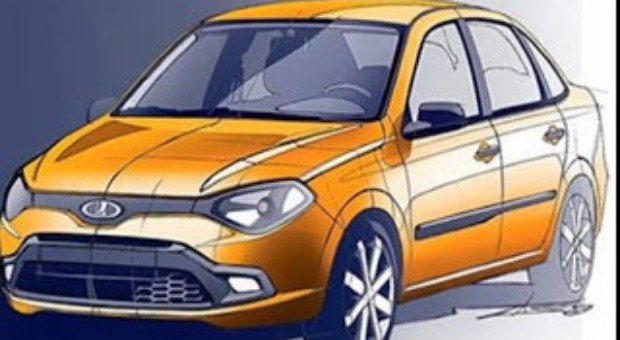
The latest car of the Russian Lada, Lada Granta is the fruit of collaboration with France##Q##s Renault and technical platform is built on the Logan. Granta could be presented at the Moscow Motor Show in August.
Production will begin at the end of 2011, and Lada officials announced an annual production of 400,000 pieces. The manufacturer has not announced the price model, but market sources say that Grant Lada will cost about 5,000 euros (190,000 rubles).
Logan sales in Russia increased by 17% last year, from 53,869 to 62,826 units, nearly two times slower than the car market, which rose by 30%, from 1.46 to 1.9 million cars.
Logan went down last year in the top position selling brands, six, according to a Commission of Auto Manufacturers, the Association of European Businesses in the Russian Federation. The first four places are occupied by local manufacturer Lada models, and is situated on five Ford Focus.
In December, the advance sales Logan was 31% from 5143-6743 cars by half compared with market developments, increasing by 60%, from 128,137 to 204,586 units.
| Browse our latest car database to discover more cars |
2011 Suzuki Swift "Decisions" Commercial
The Suzuki Swift crew show how life is more interesting living by Swift Decisions.
| Browse our latest car database to discover more cars |
Discover more automotive news & videos
2012 Dacia MPV
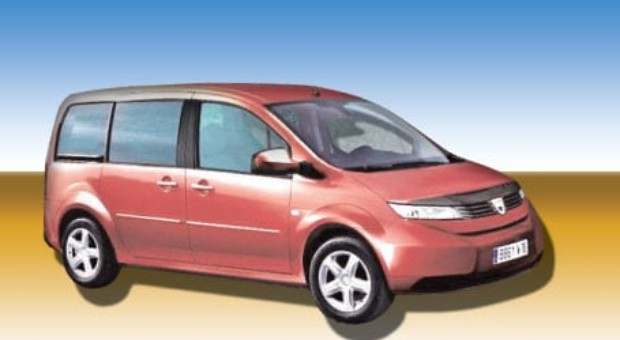
Dacia MPV is the new Dacia model that will be produced in Morocco and will cost about 13,000 euros.
In fact, this model looks a lot like the current MCV, only that it will be much higher.
The new MPV will be produced in Morocco Duster borrow traits from both, the grille and the CVM, the interior, where they can be folded flat bench, writes French newspaper L ##Q##Argus Automobile.
Monocab will have a starting price of 13,000 euros in petrol version and € 15,000 in the diesel version. The model will appear in the summer of 2012 will have dimensions of Scenic, 4.5 meters in length and it will be longer, higher and more spacious interior to break the CVM, but the price will be over 15% higher.
Argus Auto MPV write that will be available with three rows of seats and the seats of row two three folded, luggage space of 2,300 passes will be similar.
Dacia MCV and, according Argus Auto speculation, there will be a utility version with sliding side doors and rear doors asymmetric.
Morocco will become a very important center for production of Dacia.
| Browse our latest car database to discover more cars |
Discover more automotive news & videos
How to have your own Porsche?
| Browse our latest car database to discover more cars |
Discover more automotive news & videos
Kia Sportage Commercial
Experience a whole new change by Kia
Kia believes in better technology, performance and design. Experience a whole new change by Kia.
| Browse our latest car database to discover more cars |
Discover more automotive news & videos
Hyundai ix20 Commercial
The all new Hyundai ix20 was revealed for you. It is stylish, spacious, and versatile and designed to be a different experience! See it in action!
| Browse our latest car database to discover more cars |
2011 BMW 528 LI edition (Road Test & Detailed shots)
Boasting a 240-hp engine, the 528i Sedan will exceed all of your expectations. It takes you from 0-60-mph in a mere 6.6 seconds, while 230 lb-ft of torque ensures a powerful thrill ride.
Hit the accelerator of the BMW 528i, and in 6.6 seconds*, you’ve reached 60 mph, thanks to is potent 240-hp engine. The lightweight composite magnesium/aluminum engine block adds to the spirited acceleration and nimble handling. And with 230 lb-ft of torque, the power pours on early and strong, and continues throughout the powerband.
– Dynamic Stability Control (DSC), including Brake Fade Compensation, Start-off Assistant, Brake Drying, and Brake Stand-by features; with Dynamic Traction Control (DTC)
– 8-speed automatic transmission with Sport and Manual shift modes and Adaptive Transmission Control (ATC)
– 4-wheel ventilated anti-lock disc brakes (ABS) with composite front rotors and Dynamic Brake Control (DBC), and brake pad wear indicators
– 10-way power-adjustable driver##Q##s and front passenger##Q##s seat with 4-way lumbar support, and memory system for driver##Q##s seat, steering wheel and outside mirrors
– High-fidelity 12-speaker sound system, including 2 subwoofers under the front seats, and digital 7-channel amplifier with 205 watts of power
– Power windows with key-off and “one touch” up and down operation both front and rear, anti-trapping feature, opening from remote, and closing from exterior lock
– BMW Assist™ Safety Plan: includes four years of Automatic Collision Notification, Emergency Request, Enhanced Roadside Assistance, Door Unlock, Stolen Vehicle Recovery, Customer Relations, TeleService; MyInfo lets you send business locations and street addresses directly to your BMW and Navigation system
… and much more! See the road test from view video review:
Source BMW USA
| Browse our latest car database to discover more cars |
Discover more automotive news & videos
Largest Ford Display in the World Debuts at 2011 Detroit Auto Show

Largest Ford Display in the World Debuts at 2011 North American International Auto Show
The 2011 North American International Auto Show (NAIAS) will feature the largest Ford display in the world and the most engaging consumer experience ever, including a specially created, elevated track for rides in the all-new Focus Electric on the show stand.
The Ford display will fill an expansive 71,700 square feet of space, more than a typical NFL football field’s 57,600 square feet. The exhibit will feature more than 75 vehicles and 22 interactive displays and an unprecedented 67 product specialists will be on hand at all times to answer questions about the company’s new products and technologies.
“For several years now, Ford has been driving the evolution of auto shows. We’ve moved from one-way communication to full-blown two-way communication and total engagement with visitors,” said Jim Farley, Ford group vice president, Global Marketing, Sales and Service.
“Futuristic concept cars and simple narrations about products have been augmented by or replaced with product interaction, hands-on technology displays, conversations with knowledgeable hosts and even games that help visitors understand how Ford is delivering smart, safe, green, high-quality products to fit a wide range of needs.”
Underscoring the theme of vehicles to fit every need, Ford will feature a broad spectrum of new products at this year’s show. Just a few examples include the all-new Ford Focus, Ford Explorer, Mustang Boss 302, Ford C-MAX multi-activity vehicle and Ford F-150 with four all-new powertrains.
“This year’s display emphasizes that fuel economy is no longer limited to a few vehicles,” said Farley. “Ford is offering consumers real choices that fit real-world needs by designing vehicles that use a variety of fuel-efficient powertrains, such as Ford‘s EcoBoost™ technology and our new family of electrified vehicles.”
Ford will offer a family of electric products, including hybrids, plug-in hybrids and all-electric vehicles.
To help consumers understand the differences between the technologies and to showcase the company’s leadership in electric vehicles, Ford created an innovative major attraction for the show called “Living Electric.”
Hands-on technology displays, digital tutorials and conversations with experts will help people learn how the different types of electric vehicles will fit various lifestyles. Visitors can even take a ride in two electric vehicles – Focus Electric and Transit Connect Electric – on an elevated track on the Ford stand that is 20 feet high, stretches 208 feet in length and is 71 feet in diameter.
In all areas of the Ford display, consumers will be entertained, informed and totally engaged.
For example, visitors can play a live game show on their mobile phones while learning about the new engines available for F-150. They can personalize a Fiesta with a digital “spray can” and take home a print of their creation while finding out about the fuel economy and safety leadership of Ford‘s new small car.
A scale replica Laguna Seca slot car track that lets drivers test their skills on the same course where Ford engineers tested the all-new Mustang Boss 302
An Explorer Theater where visitors can take a virtual ride in an articulating Explorer and experience this all-new, 21st century edition of the SUV that created the segment and has now been named the 2011 North American Truck of the Year
Raptisserie – a Ford Raptor that flips over in a dramatic way to reveal the technology that makes it the most capable off-road production truck ever. A chance to play the new and not-yet-released Electronic Arts video game Need for Speed Shift 2, which features Ford Mustang – A simulator that lets drivers race a Ford Fiesta in World Rally competition
The Focus Experience – an immersive, in-car theater experience that highlights the breakthrough driver connectivity of the all-new Ford Focus!
SOURCE Ford Motor Company
| Browse our latest car database to discover more cars |
Discover more automotive news & videos
2011 Audi A8 & A8 L detailed specifications
Efficient Performance
You demand performance that is as intelligent as it is powerful. That is exactly what you will find in the new A8. The 372 hp 4.2 V8 direct fuel injection engine equals the fuel efficiency of the Mercedes-Benz S400 and Lexus LS 600h hybrids and surpasses the fuel efficiency of the BMW ActiveHybrid.* You read that right. The new A8 delivers better fuel economy than some hybrid vehicles.†
4.2 FSI® V8 Engine
The A8 delivers performance and handling typically reserved for cars half its size. It all starts with the 4.2 FSI® V8 engine. Thanks to FSI® technology, the 4.2 is powerful, responsive and offers impressive fuel efficiency.
FSI® injects a highly precise amount of fuel into the engine cylinders that is perfectly matched to the volume of air. Within the cylinder, the specially designed piston heads compress the fuel-air mixture, creating a spiraling effect. The result is the most efficient combustion possible.
Making the most of the fuel and air combustion results in maximum efficiency and responsive power at any RPM.
Eight-speed Automatic Tiptronic® Transmission
Power is transmitted via the new shift-by-wire eight-speed Tiptronic® Transmission. With optimally spread gear ratios that produce dynamic acceleration, the eight-speed transmission also helps reduce fuel consumption by an estimated 6 percent when compared to a six-speed automatic transmission.
Thanks to its innovative design and optimal gear layout, the weight of the transmission has not been increased over the previous six-speed transmission.
quattro® with Available Sport Rear Differential
Permanent all-wheel drive systems are not created equal. And they certainly don’t perform that way, either. quattro is essentially a mechanical system devised around a torque-sensing, self-locking, center differential that shifts torque instantaneously to where it’s needed.
This means quattro is adjusting power between front and rear axles more than 100 times a second, helping ensure torque is delivered to the wheels where traction exists. Under normal driving situations, quattro distributes the power between each axle by sending 40 percent to the front wheels and 60 percent to the rear wheels, enhancing the driving dynamics while helping maintain optimum control.
Constantly assessing grip, quattro ensures the best possible combination of traction and handling, regardless of the road conditions.
quattro with Sport Rear Differential additionally senses which rear wheel to deliver an optimum level of torque. Specifically, it directs most of the power to the outer rear wheel to help steer the car through the corner. This reduces understeer, common among other all-wheel drive systems, and creates the true sportscar handling found in an Audi.
Aluminum ASF® technology
Lightweight and rigid, the revolutionary aluminum ASF® technology offers class-leading weight savings — a benefit you will notice in the overall efficiency, enhanced performance and remarkable handling. It is why you can apply the words “precise” and “graceful” to a vehicle this powerful and athletic.
Servotronic® Steering
Handling is further increased by Servotronic® speed sensitive steering. The dynamic technology of this steering system varies the power assistance based on vehicle speed. At low speeds, the steering operates with a high degree of power assist and the steering is extremely direct, requiring minimal turns of the wheel from lock to lock. It is these flawless shifts of Servotronic® that add an extra layer of performance to the A8.
Audi drive select
Progressive Audi technology flourishes with hundreds available vehicle handling and performance combinations thanks to Audi drive select. Whether you prefer the smooth, luxurious ride of Comfort mode or the more direct and firmer responses of Dynamic mode, Audi drive select allows you to tailor the vehicle to your liking. The result is a driving experience that ensures your A8 always performs to your preferences.
Adaptive air suspension
A8 handling is even more evolved with the standard adaptive air suspension. It’s designed to react to driving forces nearly instantaneously producing a comfortable, responsive ride in any driving condition.
Additionally, body roll and pitch are reduced by increasing damping through corners and under braking, resulting in a composed and responsive ride. For optimal personalization, adaptive air suspension offers four modes to select from, Auto, Dynamic, Comfort, and Lift. Depending on the mode and vehicle speed, the suspension can lower the body up to 1”.
Advanced Braking
The new A8 has a braking system that is carefully engineered for maximum heat dissipation and low weight. All four discs are internally ventilated, with stainless steel pins connecting the front friction plates and brake pistons made from aluminum.
This sport-inspired concept is new to the luxury class and saves up to 10.5 lbs. per wheel, and makes the brakes less sensitive to fading under extreme lead. The wheel range also underscores the powerful character of the new Audi A8, with the 4.2 FSI running on light-weight 19″ alloys wrapped in all season tires
Audi xenon plus headlights with LED daytime running lights
The signature Audi xenon plus headlights with LED daytime running lights and high-intensity headlights not only add a distinct look to the vehicle, they also improve visibility while using half of the energy of conventional bulbs.
Leather-wrapped, four-spoke, multifunction steering wheel with shift paddles
Leather-wrapped, four-spoke, multifunction steering wheel with shift paddles
The leather-wrapped, four-spoke, multifunction steering wheel has a refined look and feel, providing easy access to the Driver Information System (DIS), navigation voice prompts, audio volume control, Bluetooth® operation, voice control and radio and CD track selection. Also included are shift paddles that allow for quick gear changes.
The rearview camera offers a real-time view of the parking area while front and rear parking sensors use ultrasound waves to sense your position and warn when approaching nearby objects.
The front and rear doors of the A8 are equipped with a power door close assist feature. This provides enhanced comfort and convenience when entering and exiting the vehicle.
The tailgate conveniently opens and closes with the touch of a button. The desired opening height can be programmed to your preference.
The luxurious appearance of these 19″ wheels with all-season tires offer a refined complement to the style of the A8.
Electronic Stabilization Control (ESC) helps ensure your vehicle maintains the intended direction of travel by continuously adjusting a number of drivetrain variables.
The fourteen-speaker, 630-watt sound system is individually tailored to the vehicle interior. It is further enhanced by the 2nd generation AudioPilot® noise compensation feature, which adjusts volume in response to unwanted road noise, enhancing the listening experience.
With this advanced keyless entry system, your vehicle can be locked or unlocked and started without removing the key from a pocket or purse.
Advanced, customizable LED lights highlight the cabin of the A8. Select the brightness in four distinct interior areas with your choice of ivory, polar or ruby lighting hues.
The A8 offers the convenience of a power rear window sunshade while the A8 L also offers rear side window sunshades. The power rear window sunshade is deployed with a touch of a button. All shades offer an additional level of protection from the sun.
MMI® Navigation plus features an 8″ high-resolution full-color LCD screen that emerges from the dash upon vehicle ignition. Groundbreaking MMI® touch includes a revolutionary touchpad that interprets handwritten inputs, while dedicated buttons can be programmed for commonly used controls.
MMI control logic is equipped with the latest generation of MMI, powered by a 40-GB hard drive and an NVIDIA® processor to enhance graphics. This generation MMI offers HD Radio™ Technology and a color driver information system, real-time traffic, and 3D topography graphics that include the buildings in many cities and the crystal clear digital AM and FM sound of HD Radio Technology with over 1,000 new stations. Also included is voice control for navigation and telephone functions.
This connective technology offers intelligent integration with the iPod® and iPhone®. Any iPod Generation 4 and higher may be connected through the glove box, providing full iPod controls on the MMI® screen. This feature allows connection of a USB flash drive or a conventional auxiliary audio input as well.
Standard Audi pre sense utilizes exclusive Audi safety technologies that proactively identify and alert you to approaching danger and prepare to help protect you in the event of an accident.
This option is an electronically controlled, continuously adaptive air suspension system at all four wheels. It offers a more responsive ride over a variety of terrain.
Exclusive to Audi, this system provides advanced control of the vehicle’s adaptive suspension, dynamic steering, transmission shift characteristics and engine response. The system offers hundreds distinct driving configurations, allowing drivers to configure vehicle drive characteristics exactly to their liking with their choice of Comfort, Auto, Dynamic or Individual settings.
The 18-way power seats come equipped with a memory system and adjustment for forward/backward position, seat height, seat and backrest angle and electric lumbar support
HomeLink® is integrated into the overhead controls and uses a simple three-button system to control garage doors, gates and even lights in your home.
The Bluetooth® hands-free phone interface allows you to pair a Bluetooth®-enabled mobile phone with your Audi and access your phonebook within the driver information display in your instrument panel. For specific compatibility and operation, refer to audiusa.com/bluetooth or contact your local Audi dealer for the latest listing of compatible phones.
HD RadioTM Technology and SIRIUS® Satellite Radio tuning, MMI® allows you to tune the receiver by scrolling through your preset radio stations; adjust the audio settings, and customize the listening experience by tailoring the speaker output.
Source: Audi Europe
| Browse our latest car database to discover more cars |
Discover more automotive news & videos
2011 Audi A8 – "Goodnight Commercial" for 2011 Detroit Auto Show
The new Audi A8 Commercial says goodnight to old luxury in this homage to a classic children##Q##s story. Learn more about Audi##Q##s flagship sedan, the new 2011 Audi A8
| Browse our latest car database to discover more cars |
Discover more automotive news & videos
The best car concept was made by Ford! Ford Vertrek was named best concept @ 2011 Detroit Auto Show
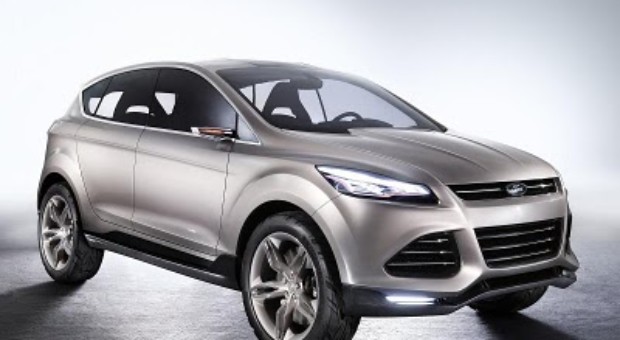
Ford Vertrek Named Best Concept at 2011 North American International Auto Show
The best car concept was made by Ford! Ford Vertrek was named best concept @ 2011 Detroit Auto Show! The Vertrek concept rose above such contenders as the Mini Paceman, GMC Sierra All Terrain HD and Toyota Prius C to win the coveted award.
“Ford has been so focused on serious stuff such as small cars and fine-tuning production models that it hasn##Q##t had a lot of time to craft concepts capable of turning heads at auto shows,” said the editors of AutoWeek. “Enter the Vertrek. It blends European styling with the practical needs of Americans. The best part is that Ford design boss J Mays says this concept is very close to the look of the next Escape.”
Based on the global C-segment platform, Vertrek represents the vision of Ford##Q##s top design and engineering talent on how best to attract and satisfy future SUV customers around the world. “Vertrek unites stylish design, world-class craftsmanship and outstanding capability to present a fresh vision that we believe will resonate globally,” said Mays.
The Vertrek concept further evolves Ford##Q##s global kinetic design philosophy. The vehicle##Q##s rising beltline creates an athletic stance, while its dynamic lines and taut surfacing convey muscularity.
A highly efficient new 1.6-liter four-cylinder engine from the global Ford EcoBoost™ family is underhood, giving Vertrek the power of a larger-displacement powerplant while delivering significantly better fuel economy and CO2 emissions.
In Vertrek concept, this engine is mated to a new, fuel-saving Ford Auto Start-Stop technology. By 2013, 80 percent of Ford##Q##s global nameplates and 90 percent of Ford##Q##s North American nameplates will have an EcoBoost option.
The prestigious AutoWeek award comes hard on the heels of the all-new Ford Explorer being named 2011 North American Truck of the Year, the third year in a row Ford has taken this honor.
The Vertrek concept is on public display at NAIAS – along with Explorer and other award-winning Ford and Lincoln vehicles – in Detroit##Q##s Cobo Hall through Jan. 23.
Ford introduced the Vertek Concept at the 2011 Detroit Auto Show
Ford Vertrek is built on Ford##Q##s global C-segment platform, which will underpin more than 2 million vehicles globally by 2012.
Vertrek is Ford##Q##s vision for a utility vehicle that will appeal to customers around the globe, and signals the direction Ford will take in developing a stylish SUV with outstanding cargo space and a 1.6-liter EcoBoost™ engine that could deliver best-in-class fuel economy!
| Browse our latest car database to discover more cars |
Discover more automotive news & videos
2011 Audi A8 Progressive Design: Audi Debuts Super Bowl Companion Ad During the NFL Playoffs
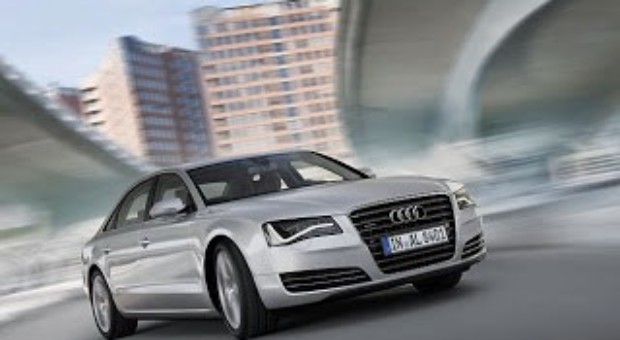
2011 Audi A8 Progressive Design: Audi Debuts Super Bowl Companion Ad During the NFL Playoffs
The new Audi A8 is an inspired study of progressive design. The new model is a collection of ideas and technologies that result in a shift of the luxury paradigm. Timeless Audi design principles live on, and in fact, evolve magnificently with the A8. Completely redesigned, the A8 embraces everything that makes the four rings a symbol of progress.
Audi today announced a new 60-second TV advertisement billed as a prelude to its upcoming Super Bowl ad. An evolution of Audi’s ongoing campaign to redefine luxury, the companion spot taps into viewers’ notions of old luxury with the help of an unlikely literary inspiration: Goodnight Moon, the 1947 children’s book by Margaret Wise Brown, one of the best-selling children’s books of all time.
The TV commercial titled “Goodnight” is inspired by the cadence and rhyme scheme of the original Goodnight Moon while taking the viewer on a journey through a traditional-style mansion laden with trite symbols of old, stuffy luxury.
The 60-second spot methodically says goodnight to the age of old luxury, defined by gluttony and excess, and features the all-new 2011 Audi A8 flagship sedan, the most technologically-advanced vehicle the company has ever produced and the apex of Audi’s new luxury lineup.
The highly-acclaimed 2011 A8 will also be featured in Audi‘s upcoming Super Bowl TV spot, set to air in the first break after kick off on Super Bowl Sunday, Feb. 6, 2011.
“Research shows that consumer impressions are based in nostalgia and formed at a very young age. In ‘Goodnight’ Audi taps into these memories to break through the nostalgia and re-establish what it means to achieve luxury,” said Scott Keogh, chief marketing officer, Audi of America.
“Today’s luxury consumer exists in a world where status is no longer solely defined by tradition, but increasingly by their entrepreneurial accomplishments. As a result, they are seeking out new and more evolved luxury symbols that make them stand out from the crowd.”
“Goodnight” begins airing Thursday, Jan 13, across cable networks, followed by a national network debut on Saturday, Jan. 15 and Sunday, Jan. 16, on CBS and FOX during the AFC and NFC divisional games. The spot also will air during the Sunday morning network news programs on ABC, CBS, FOX, and NBC.
Super Bowl XLV will mark the fourth consecutive appearance for Audi, the only auto maker in its class with Super Bowl presence for four years running.
Known for its aggressive and fun approach, Audi will once again deliver a fearless and intriguing Super Bowl spot that dares the viewer to re-think luxury. The 60-second TV advertisement is being created by San Francisco-based Venables Bell & Partners.
“We chose to feature the award-winning 2011 A8 because it represents today’s standard of progressive luxury – sophisticated, yet memorable design, the most advanced technology available, and unmatched performance,” said Keogh.
The all new 2011 A8 sedan has been hailed as a technological masterpiece with striking aesthetics. Setting new standards of luxury, dynamism and efficiency, the A8 features a light-weight Aluminum Space Frame® body allowing it to achieve equal or greater fuel efficiency than leading luxury hybrid vehicles. Audi’s flagship A8 sedan also features a 19-speaker Bang & Olufsen® sound system, MMI® touch, Audi pre-sense safety features and the Audi signature LED lighting.
The past three years Audi has delivered highly-rated spots, including last year’s “Green Car” ad featuring the Audi A3 TDI, Green Car Journal’s 2010 “Green Car of the Year,” and a soundtrack created by rock legends Cheap Trick.
The 2009 spot featured actor Jason Statham in a series of high-speed chase scenes involving luxury competitors, sending the dual message that luxury is evolving. The 2008 Audi spot delivered a parody of the movie “The Godfather” and signaled that the brand was ready to challenge the perceived luxury leaders by “putting luxury on notice.”
US Audi Media News
| Browse our latest car database to discover more cars |
Discover more automotive news & videos
Honda will recall 2,277 model year 2010 Accord 4-cylinder and CR-V vehicles in the U.S.

Breaking news: Statement by American Honda Motor Co., Inc., Regarding Engine Wire Harness Coupler Recall: 2010 Accord 4-cylinder and 2010 CR-V
Honda will recall 2,277 model year 2010 Accord 4-cylinder and CR-V vehicles in the U.S. to replace an electrical wire harness coupler in the engine compartment.
The wire harness coupler could have been damaged during vehicle assembly, which can lead to engine stalling over time.
Honda identified this issue through warranty repairs, and no related accidents or injuries have been reported.
Honda is announcing this recall to encourage all owners of affected vehicles to take their vehicles to an authorized dealer as soon as they receive notification of this recall from Honda. Notification to customers will begin in early February 2011.
When Honda identifies concerns of this nature, nothing is more important to the company than fulfilling our obligation and responsibility to alert our customers.
To this end in addition to contacting customers by mail, in early February, owners of these vehicles will be able to determine if their vehicle requires repair by going on-line or calling.
Source: Honda
| Browse our latest car database to discover more cars |
Discover more automotive news & videos
The cheapest car insurance companies ?
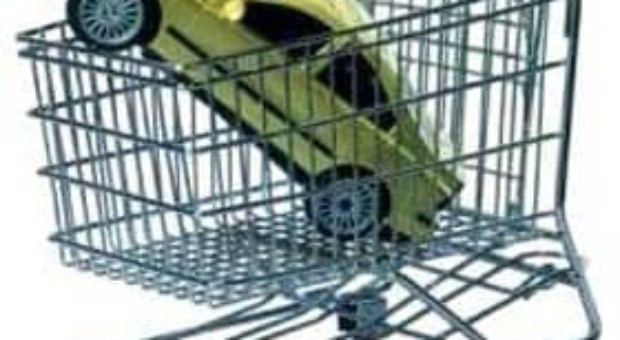
The cheapest car insurance companies ?
There tends to be a lot of people who are looking for something impressive when it comes to auto insurance, as people generally do not have a lot of money to work with these days.
Even in these debilitating times, insurance companies are finding themselves offering some great rates for the people looking for them looking for them. While there’s no real way to determine which company is the cheapest, as there are just too many factors that definitely play a part.
Some people’s insurance policies are miles different than others, although there are a few ways to assure that you happen to be getting something that’s very affordable. One of the only ways to assure that you’re dealing with a cheap company is to get your hands on some auto insurance quotes.
Auto insurance quotes are in pretty high demand, and it certainly makes a lot of since, as people are always trying to find ways to keep some of that money in their pockets.
One of the only wants to assure that this happens is to get some comprehensive quotes, those that are from some of the proven companies in the industry.
Even if you may currently have a car insurance policy, it really doesn’t hurt to check around, and especially considering that the companies are constantly competing for business.
It’s not uncommon to see a company’s policies to be substantially different from another, and these changes can almost seem to happen overnight, so it’s best to continually check these companies out to see any of their changes.
One of the best ways to assure that you’re getting the cheapest car insurance rates is to determine what you’d need out of a policy.
This may change from person to person and different income brackets. One person or family may be fine with the minimum amount of coverage that is mandatory by law. While this is the smallest amount of coverage, something that really won’t be very comprehensive at all, it’s still something that may be able to help.
It doesn’t hurt to list all of the things that you’d want a policy to cover, and also note how much you’d be willing to pay for auto insurance. Fortunately, there are also those companies that allow for the person to name their price, so keep that in mind, as well.
There are still some other things that a person should keep in mind when they are aggregating their auto insurance quotes, and more so, those that are trying to obtain the cheapest amount of coverage. Be sure to have all of the things that are important to you in a policy and try not to deviate from the budget that you’ve set for yourself.
If you’re solid in the monetary amount, you’ll come to find that auto insurance isn’t nearly as expensive as a lot of people have thought in the past, as there are many companies that are willing to work with you.
via Jec163.com
| Browse our latest car database to discover more cars |
Discover more automotive news & videos
2012 Chevrolet Sonic @ 2011 Detroit Auto Show
2012 Chevrolet Sonic @ 2011 Detroit Auto Show
Chevrolet debuts the 2012 Chevrolet Sonic on Day one of the 2011 Detroit Auto Show! A great concept car
| Browse our latest car database to discover more cars |
Discover more automotive news & videos
2012 Honda Civic Concepts @ 2011 Detroit Auto Show
This pair of Detroit concepts point directly to the next-gen 2012 Civic.
| Browse our latest car database to discover more cars |
Discover more automotive news & videos
2011 Audi A6 wins prestigious EyesOn Design award @ 2011 Detroit Auto Show
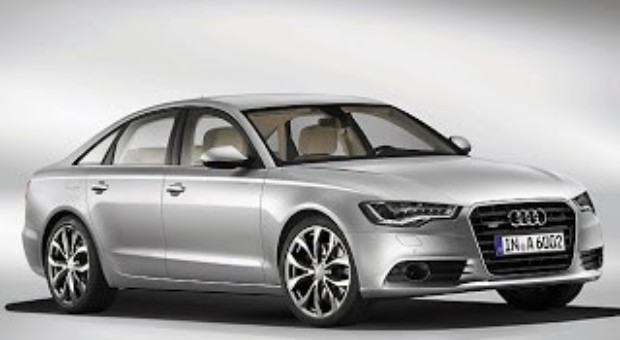
2011 Audi A6 wins prestigious EyesOn Design award @ 2011 Detroit Auto Show
For the fourth time in the past three years, an Audi model has won a prestigious EyesOn Design Award recognizing the best of automotive design displayed at the North American International Auto Show in Detroit.
This year the panel of judges recognized the redesigned Audi A6 as the “Best Production Vehicle” design displayed at the Detroit show, which ranks among the world’s premier automotive exhibitions.
“This is strong feedback that we have done our homework,” Achim Badstuebner, head of exterior design for AUDI AG, said in accepting the EyesOn Design trophy.
Audi has received four EyesOn Design Awards over the past three years.In 2010, EyesOn Design judges gave the same award to the new Audi A8 luxury flagship sedan, which went on sale in the U.S. in late November 2010.
The production car design award went to the Audi R8 V10 in 2009 and that year’s award for “Best Concept Vehicle” design went to the Audi Sportback Concept, which was shown in Detroit in 2009 and provided significant style cues to the sleek lines seen in the all-new Audi A7 due to arrive this Spring.
The design of the new Audi A6, which goes on sale in the U.S. this fall as a 2012 model, embodies athleticism and elegance. The sedan is 16.14 ft. long and 6.14 ft. wide, but just 4.79 ft. high – sporty proportions that are unrivaled by the competition. The long engine hood, the low, sweeping roofline and the prominent lines on the flanks create a dynamic overall appearance. Optional LED headlights emphasize the striking expression at the front.
The roomy interior of the new Audi A6 echoes the sinewy style of the exterior. The salient element is the “wrap-around” – an inlay encircling the driver and the front-seat passenger.
The elegantly curved dash panel places the driver at the center of the interior.
Every detail of the interior is a testament to the care that Audi invests in carmaking. All materials, including an innovative layered-wood veneer, have been selected and crafted with the utmost care.
As an option, the front seats can be equipped with ventilation and massage functions. Classy ambient lighting in the lighting package provides small points of light throughout the interior.
Much of the body of the new Audi A6 consists of aluminum and high-tech steels, rendering it exceedingly light, stiff and safe. State-of-the art design methods and materials ensure extremely low interior noise levels.
Leading the judges drawn form the auto industry and design academic programs were Willie G. Davidson – Harley-Davidson, EVP & Chief Styling Officer; Tom Matano, Academy of Art University, Executive Director of Industrial Design; and Jack Telnack, Ford Motor Company, Global VP of Design (Retired).
Other finalists for the EyesOn Design Best Production Vehicle Award in 2011 were the Bentley Continental GT, BMW 6-Series Convertible, and Hyundai Veloster.
EyesOn Design at the North American International Auto Show is sponsored by the Detroit Institute of Ophthalmology (DIO) as part of the EyesOn Design series of events.
The DIO is a not-for-profit that aids the visually impaired and facilitates research related to the eye. Each year, they host the EyesOn Design automotive exhibition at the Edsel and Eleanor Ford House in Grosse Pointe, Michigan that also focuses on design.
The show is recognized by its peers as one of the best classic car shows in the country. The DIO enjoys a close relationship with automotive designers through the EyesOn Design events and by understanding the correlation between design and the eye.
| Browse our latest car database to discover more cars |
Discover more automotive news & videos
Pictures of cars @ 2011 Detroit Auto Show (Cars To Look For At The Detroit Auto Show)
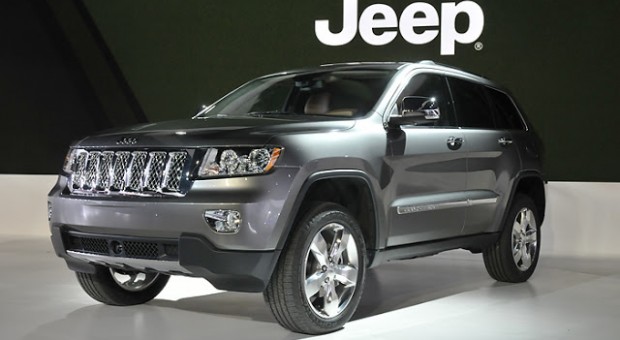
Pictures of cars @ 2011 Detroit Auto Show
Please check a large collection of pictures taken from 2011 Detroit Auto Show. Are listed all companies and cars revealed at Car Show!
 |
| Jeep @ 2011 Detroit Auto Show |
 |
| Chrysler 300 @ 2011 Detroit Auto Show |
 |
| Chrysler Stand @ 2011 Detroit Auto Show |
 |
| Ford @ 2011 Detroit Auto Show |
 |
| Ford Concept @ 2011 Detroit Auto Show |
 |
| Mercedes @ 2011 Detroit Auto Show |
 |
| Audi A6 Hybrid @ 2011 Detroit Auto Show |
 |
| Honda @ 2011 Detroit Auto Show |
 |
| Honda Concept @ 2011 Detroit Auto Show |
 |
| Chevrolet @ 2011 Detroit Auto Show |
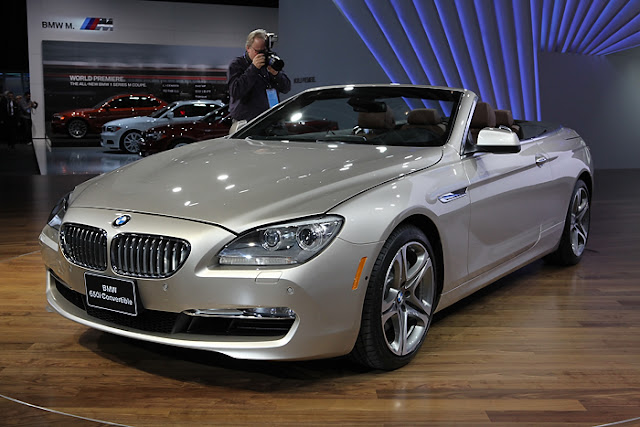 |
| BMW @ 2011 Detroit Auto Show |
 |
| BMW @ 2011 Detroit Auto Show |
 |
| BMW 1 @ 2011 Detroit Auto Show |
 |
| Toyota @ 2011 Detroit Auto Show |
 |
| Porsche @ 2011 Detroit Auto Show |
 |
| Ford @ 2011 Detroit Auto Show |
 |
| Buick Verano @ 2011 Detroit Auto Show |
 |
| Porsche Stand @ 2011 Detroit Auto Show |
 |
| Volkswagen Passat @ 2011 Detroit Auto Show |
Pictures from NAIAS (2011)
| Browse our latest car database to discover more cars |
Discover more automotive news & videos
Ford and Chevrolet Win Car Of The Year Awards @ 2011 Detroit Auto Show
The Chevrolet Volt is the 2011 North American Car of the Year and the Ford Explorer is the 2011 North American Truck of the Year.
The winners were revealed Monday morning at a news conference at the North American International Auto Show.
While hybrid vehicles have won four times in the 18 years that the awards have been given this was the first win for a vehicle that can move a meaningful distance on electric power alone.
The winners were chosen by a jury of 49 automotive journalists from the United States and Canada.
The awards are unique in the United States because instead of being given by a single media outlet they are awarded by a coalition of automotive journalists from the United States and Canada who represent magazines, television, radio, newspapers and web sites.
The awards are designed to recognize the most outstanding new vehicles of the year. These vehicles are benchmarks in their segments based on factors including innovation, design, safety, handling, driver satisfaction and value for the dollar.
It is the fourth time General Motors has won the North American Car of the Year. Most recently, the Chevrolet Malibu was the 2008 North American Car of the Year.
It was the second year in a row that a Ford was named the North American Truck of the Year. Last year the winner was the Transit Connect. It is also the seventh time a Ford has been the “North American Truck of the Year,” a category it has dominated.
The Volt won with 233 points followed by the Hyundai Sonata with 163 and the Nissan Leaf electric with 94.
The Explorer won with 253 points while the Jeep had 138 and the Durango 99.
“The Volt seamlessly bridges the gulf between today’s liquid fueling infrastructure and the plugged-in electric future,” commented juror Lindsay Brooke of Automotive Engineering International.
Mark Phelan, the auto critic of The Detroit Free Press said the Explorer offers “class-leading fuel economy and technology and features you can’t get in luxury crossovers that cost twice as much.”
To be eligible a vehicle must be all new or “substantially changed.” The jurors considered dozens of new vehicles before sending their ballots to Michelle Collins, a partner at Deloitte & Touche early in December.
On December 16th the three car and truck finalists were announced.
But only Ms. Collins knew the winners until she handed over envelopes today to Karl Brauer of Edmunds.com, a member of the awards’ organizing committee. Mr. Brauer announced the winners.
| Browse our latest car database to discover more cars |
Discover more automotive news & videos
Porsche Press Conference @ 2011 Detroit Auto Show
The entire Porsche media presentation at the North American International Auto Show
| Browse our latest car database to discover more cars |
Discover more automotive news & videos
Volkswagen Press Conference @ 2011 Detroit Auto Show
The full VW presentation at the 2011 North American International Auto Show.
| Browse our latest car database to discover more cars |
Discover more automotive news & videos
BMW Press Conference @ 2011 Detroit Auto Show
The entire BMW presentation at the 2011 North American International Auto Show.
| Browse our latest car database to discover more cars |
2011 Audi A1 quattro
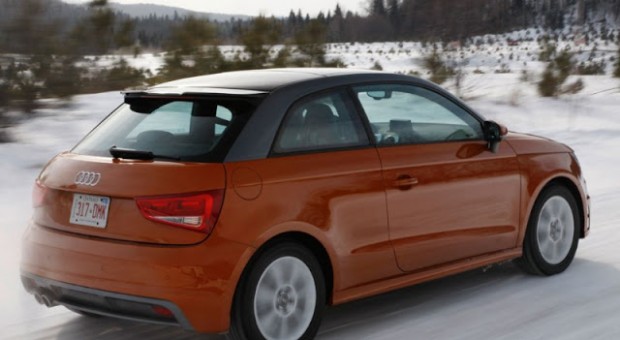
The Audi A1 project quattro® was first unveiled at the 2007 Tokyo Motor Show: a distinctive design study bringing typical Audi character to the subcompact segment.
In 2011 is in road tests. In typical Audi fashion, the three-door four-seater car showcases new ways of heightening efficiency, dynamism and motoring pleasure with a series of visionary technical solutions.
Audi A1 has an innovative hybrid technology and intelligent control electronics. Sporty looks and economy of space: the exterior of the Audi A1 project quattro. Ergonomics and aesthetics: the interior of the Audi A1 project quattro.
| Browse our latest car database to discover more cars |
Discover more automotive news & videos
2011 Audi e-tron @ 2011 Detroit Auto Show – See Audi e-tron Concept Car
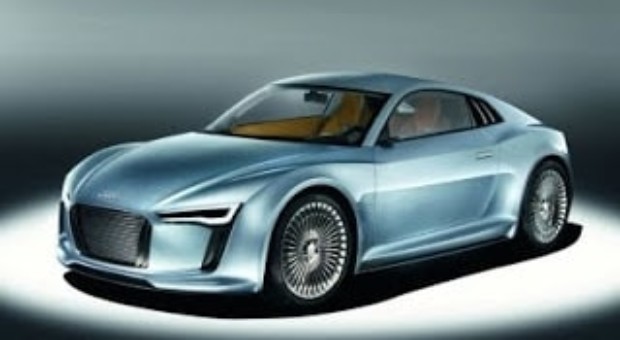
What a great looking coupe, but for crying out loud, someone please tell Audi to stop using metallic baby blue for show cars.
Were this in charcoal metallic, it would steal the show for sure.
The Detroit showcar Audi e-tron shows another variant of an electric vehicle developed by Audi
Audi is showing an uncompromising purist compact sports car with all-electric drive at the first major auto show of 2010.
The Detroit showcar Audi e-tron is the name of this 3.93 meter (154.72 in) long and 1.78 meter (70.08 in) wide but just 1.22 meter (48.03 in) tall two-seater; just a few months after the debut of the Audi e-tron at the 2009 Frankfurt Motor Show, this is now the second electric concept vehicle from the brand with the four rings.
Coupled with the Detroit showcar Audi e-tron‘s low gross weight of around only 1,350 kilograms (2976.24 lb), high-torque power units driving the rear wheels guarantee commensurate road performance.
Two electric motors with a combined output of 150 kW (204 hp) and 2,650 Nm (1954.54 lb-ft) accelerate the coupe with ASF-design aluminum body from 0 to 100 km/h (62.14 mph) in just 5.9 seconds. The Audi e-tron accomplishes the sprint from 60 to 120 km/h (37.28 – 74.56 mph) in a mere 5.1 seconds.
The Detroit showcar Audi e-tron is able to distribute its electric motors’ high torque between the wheels entirely as required. Its “torque vectoring” is the key to a thrilling level of active precision and excellent traction.
Thanks also to its low weight, short wheelbase and perfect weight distribution for dynamic handling, the Audi e-tron has all the drivability of a go-kart – agile, good on bends and neutral right up to the very high handling limit.
Lithium-ion batteries, located for an optimal center of gravity behind the passenger compartment and ahead of the rear axle, make an effective energy content of 45 kilowatt-hours available. This makes an operating range of up to 250 kilometers (155.34 miles) realistically possible.
As previously with the first e-tron concept car shown in Frankfurt, Audi again bases all components in this electric vehicle on an integral concept with many revolutionary details: a heat pump as an efficient means of heating up and maintaining the interior temperature.
The drive system, power electronics and battery have innovative thermal management – crucial for maintaining a high operating range coupled with outstanding interior comfort.
Design and package
Audi is presenting a further variant of an electric vehicle in the form of the Detroit showcar Audi e-tron.
The vehicle body has a powerful, wide and muscular stance on the road, and looks extremely compact and puristic not least thanks to the typically short sports car wheelbase of just 2.43 meters (95.67 in) – a whole 22 centimeters (8.66 in) shorter than the R8.
The sweeping line of the front end and the flat curved roof immediately identify the two-seater as an Audi.
The sides reveal familiar contours: The way the dynamic line is tailored above the sill and the prominent wheel arches, as is typical for an Audi R, combine the front, side and rear into a monolithic entity and strongly emphasize the typical Audi feature of round wheel arches enclosing the large 19-inch wheels. The highly tapered front end gives the Detroit showcar Audi e-tron distinctly wedge-shaped basic proportions.
1.78 meters (70.08 in) wide, just 3.93 meters (154.72 in) long and 1.22 meters (48.03 in) tall – those are the classic proportions of a sports car. That leaves space ahead of the rear wheels for the 399 kilogram (879.64 lb) battery unit, with converter and power electronics.
The two electric motors, which have their own cooling system, are mounted on the rear axle. This special package, featuring a 40:60 weight distribution, ensures perfect balance, which contributes to the driving dynamics of the Audi e-tron.
The trapeze of the single-frame grille dominates the distinctly wedge-shaped front end and is flanked by two large air intakes.
The top of the grille merges into the flat strips of the adaptive matrix beam headlight modules with their clear glass covers. All light units use ultra-efficient LED technology.
The headlights are the core of a fully automatic light assistance system that reacts flexibly to any situation.
The new technology recognizes weather conditions and adapts the illumination to rain or fog. The technology at the heart of the light assistance system is a camera that works together with a fast computer to detect oncoming traffic, recognize lanes and measure visibilities, such as in the event of fog.
If there is oncoming traffic, the high beams are turned off in the corresponding section of the illumination field. The cornering light system analyzes data from the navigation system and illuminates corners before the driver steers into them. The Detroit showcar Audi e-tron does not have conventional fog lamps that consume additional power.
It intelligently varies the low beams instead; in fog, for example, it produces a wider, more horizontal illumination field, thus significantly reducing the glare from the car’s own lights.
The variability of the headlights is also reflected in their design. The LED elements change appearance and thus the character of the front end of the vehicle depending on the speed driven and the ambient conditions. The innovative lighting technology now offers the Audi designers almost as much design freedom as the shape of the body does.
One design element that is specific to electric vehicles developed by Audi – such as the Audi e-tron – are the air intakes in the single-frame grille and behind the side windows on the C-post.
They are closed flush under normal circumstances and opened by retracting slats when additional cooling air is required. The slats above the drive unit then also open to provide a better through-flow of air. These measures, too, maximize efficiency – the concept car is outstanding for an already low drag coefficient that is further improved when the flaps are closed.
The ASF body
Systematic lightweight construction is an even more important prerequisite for efficiency and range with electric vehicles than for conventionally powered automobiles. Lightweight construction is moreover the key to thrilling handling characteristics.
Audi developers focused on a core competence of the company when creating the Detroit showcar Audi e-tron: The body structure is based on Audi Space Frame technology (ASF), with a hybrid design approach adopted. All add-on parts – doors, lids, sidewalls and roof – are made of a fiber-reinforced plastic.
The combination of aluminum and carbon fiber-reinforced composite material guarantees supreme rigidity coupled with low weight.
Audi will soon use this technology in a similar form for future production vehicles. Despite the complex drive system layout with two electric motors and a high-capacity battery system, the total weight of the Audi e-tron showcar on display in Detroit is only around 1,350 kilograms (2,976.24 lb).
Interior and operating concept
Visual and functional references to the new drive concept characterize the purist interior design. They establish a connection between proven Audi genes and new formal hallmarks.
Typical for the Audi design idiom is the reduction of the architecture, controls and information output to the essentials in favor of visible lightweight construction and a tidy overall impression.
The slim dash has a curve that extends laterally into the door panels. With no need to allow for a transmission, shifter and cardan tunnel, the designers took advantage of the opportunity to create a particularly slim and lightweight center tunnel and convex, arching center console. The flush gear selector, with which the driver chooses between the modes forward, reverse and neutral, emerges from the tunnel when the vehicle is started.
The Audi e-tron’s cockpit, which represents a further development in an electric vehicle, is also oriented toward the driver – a further characteristic Audi trait. Instead of the classic instrument cluster, the concept car is the first Audi to be equipped with a large built-in central display with integrated MMI functions. It is flanked by two round dials.
The MMI is controlled via a scroll pad with a touch-sensitive surface on the steering wheel (“MMI touch”) – an element inspired by modern smartphones. The steering wheel itself is clearly flattened off at both the top and bottom, in a clear reference to motor sport.
A smartphone that can be integrated into the front section of the center console interfaces between the vehicle, the driver and external information sources. The driver can use a suitably equipped conventional smartphone as a car phone, address database, navigation system and video player.
At the same time they can also use it as an operating unit for many specific on-board systems in the Audi e-tron. Many phones that are suitable for these functions are already available from various manufacturers.
The driver can then enter their route plan or adjust the sound system to their individual preferences, all from the comfort of their own home, for example. The Smartphone and vehicle communicate via the mobile communications network, even over considerable distances.
The system also provides a security function for the owner; within the range of the WLAN it can constantly monitor the current status of the vehicle, for instance whether all windows and doors are closed.
If the Audi e-tron showcar on display in Detroit is parked at a charging station, for example, it also sends details of the current charge status to the driver’s smartphone.
While an analog speedometer on the driver’s right provides speed information, the instrument dial on their left tells them how much power is being drawn. The central display shows the range in the status bar and presents all key information from the infotainment and navigation systems.
It also provides the driver with relevant data from the vehicle’s communication with its surroundings. The instruments combine the analog and the digital worlds into a single unit.
Characteristic for the concept of the Audi e-tron – and therefore also characteristic for a further development in an electric vehicle – is the near total elimination of switches and small components such as the ignition. The climate control unit is located to the right above the steering wheel. The display provides temperature and ventilation information.
Again drawing inspiration from a smartphone, the system is controlled by means of a touch-sensitive sliding control.
The equally racing-inspired lightweight bucket seats combine excellent lateral support with comfort. Two contrasting colors delineate the various zones of the interior. The colors and the high-quality materials combine elegance and sportiness.
Drive system and energy supply
Two asynchronous electric motors with a total output of 150 kilowatts (204 hp) give the Detroit showcar Audi e-tron the performance of a genuine sports car. The concept car can accelerate from 0 to 100 km/h (0 – 62.14 mph) in 5.9 seconds if necessary, and goes from 60 to 120 km/h (37.28 – 74.56 mph) in 5.1 seconds.
The torque is distributed selectively to the wheels based on the driving situation and the condition of the road surface, resulting in outstanding traction and handling.
The top speed is limited to 200 km/h (124.27 mph), as the amount of energy required by the electric motors increases disproportionately to speed. The range in the NECD combined cycle is approximately 250 kilometers (155.34 miles).
The energy storage unit is charged with household current (230 volts, 16 amperes) via a cable and a plug. The socket is behind a cover at the back of the car. The charging time when the battery is empty is around 11 hours, but heavy current (400 volts, 32 amperes) cuts this to around just two hours.
The battery is charged not only when the car is stationary, but also when it is in motion. The keyword here is recuperation.
This form of energy recovery and recharging of the battery is already available on many Audi production models. During braking, the alternator converts the kinetic energy into electrical energy, which it then feeds into the on-board electrical system.
The Detroit showcar Audi e-tron in its further developed version goes one decisive step further into the future; an electro-mechanical brake system means the potential of electric motors for energy recovery can now be exploited. A hydraulic fixed-caliper brake is mounted on the front axle, with two novel, electrically actuated floating-caliper brakes mounted on the rear axle.
These floating calipers are actuated not by any mechanical or hydraulic transfer elements, but rather by wire (“brake by wire”). In addition, this eliminates frictional losses due to residual slip when the brakes are not being applied.
By virtue of being isolated from the brake pedal, the Audi e-tron’s electric motors can convert the entire deceleration energy into electric current and recover it. The electromechanical brake system is only activated if greater deceleration is required.
These control actions are unnoticeable to the driver, who feels only a predictable and constant pedal feel as with a hydraulic brake system.
An automotive first: the heat pump
The heat pump, too – which made its first appearance in an automobile on the Audi e-tron concept car shown in Frankfurt – helps to boost efficiency and range. Unlike a combustion engine, the electric drive system generally does not produce enough waste heat to effectively heat the interior.
Other electric vehicles are equipped with electric supplemental heaters, which consume a relatively large amount of energy. The heat pump used by Audi – and commonly used in buildings – is a highly efficient machine that uses mechanical work to provide heat with a minimum input of energy.
A high-efficiency climate control system is used to cool the interior. It works together with the thermal management system to also control the temperature of the high-voltage battery. This is because the battery, power electronics and electric motors must be kept at their respective ideal operating temperatures to achieve optimal performance and range.
As soon as the vehicle is connected to a charging station the vehicle is preconditioned as appropriate by the thermal management and other associated systems.
In cold conditions the drive system is preheated, and in hot conditions it is cooled. This preconditioning can also be extended to the interior, if necessary, so that the passengers can step into a cabin that has been heated or cooled as appropriate for their comfort.
Driving dynamics
The drive system’s power is transferred to the road by the rear wheels, reflecting the Audi e-tron’s weight distribution of 40:60.
Both the individual motors, which are installed behind the wheels close to the vehicle’s center line as wheel drives, also enable the Detroit showcar Audi e-tron’s lateral dynamics to be intelligently controlled.
This also boosts traction. Similar to what the sport differential does in conventional Audi vehicles, torque vectoring – the targeted acceleration of individual wheels – makes the newly developed electric drive of the Detroit showcar Audi e-tron even more dynamic while simultaneously enhancing driving safety.
Understeer and oversteer can be corrected by not only targeted activation of the brakes, but also by precise increases in power lasting just a few milliseconds. The concept car remains extremely neutral even under great lateral acceleration and hustles through corners as if on the proverbial rails.
The chassis has triangular double wishbones made of forged aluminum components at the front and rear axles – a geometry that has proven in motor sports to be the optimal prerequisite for high agility, uncompromising precision and precisely defined self-steering behavior.
A taut setup was chosen for the springs and shock absorbers, but it is still very comfortable.
The direct rack-and-pinion steering gives finely differentiated feedback. Its electromechanical steering boost varies with speed, so that the Detroit showcar Audi e-tron only has to provide energy while steering, but not while driving straight ahead.
As befits its status, the Audi concept car rolls on 19-inch wheels of 35-spoke design. 235/35 tires up front and 255/35 tires at the rear provide excellent grip. Another special feature of the tires: Audi designers created the profile specifically for the Detroit showcar Audi e-tron.
The equipment and data specified in this document refer to the model range offered in Germany. Subject to change without notice; errors and omissions excepted.
Check please the photo gallery:
Source: Audi
| Browse our latest car database to discover more cars |
Discover more automotive news & videos
2011 Volkswagen Passat and Passat Variant
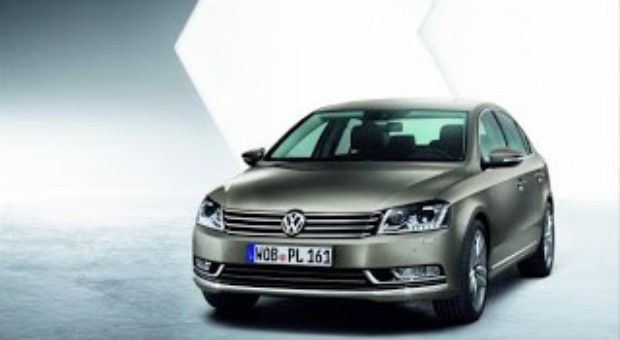
Volkswagen has released the full details and a new set of images of sedan and the area of seventh-generation Passat.
The next-generation Passat, which recently made its debut at the Paris Motor Show, will have a front-wheel series.
Meanwhile, 4Motion all-wheel drive version is offered as an option. Engine choices include three diesel and three petrol and 150 PS plants fueled by natural gas (EcoFuel).
Please see the video review of 2011 VW Passat @ Detroit Auto Show / Commercial.
| Browse our latest car database to discover more cars |
All new cars shown @ 2011 Detroit Auto Show
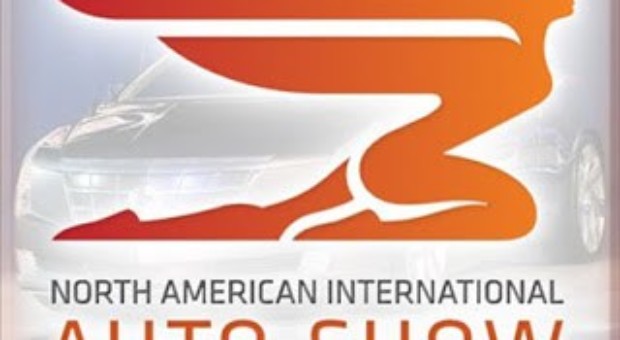
All new cars shown @ 2011 Detroit Auto Show
The first good news: Porsche will return to the show for the first time since 2007
Car and truck of the year award
The Chevrolet Volt and Ford Explorer were selected to receive the show’s North American Car and Truck of the Year awards
Production car introductions
– 2012 Audi A6
– 2012 BMW 1 Series M Coupe
– 2012 BMW 6 Series Convertible
– 2012 Buick Verano
– 2012 Chevrolet Sonic
– 2011 Chrysler 300
– 2012 Ford C-Max (North American debut)
– 2013 Ford C-Max Energy
– 2013 Ford C-Max Hybrid
– 2012 Hyundai Veloster
– 2011 Jeep Compass
– 2013 Jeep Grand Wagoneer
– 2012 Mercedes-Benz C-Class
– 2012 Mercedes-Benz S350 Bluetec
– 2013 Toyota Prius Plug-in
– 2012 Toyota Prius V
– 2012 Volkswagen Passat (North American version)
Concept car introductions
– Ford Vertrek
– GMC Sierra All Terrain HD
– Honda Civic & Civic Si concept
– Hyundai Curb
– Kia KV7
– Mini Paceman
– Porsche 918 RSR
– Toyota Prius C concept
A new “Electric Avenue” section showcased electric vehicles from around the world, including some entrants for the Automotive X-Prize.
– Saab, Hummer, Infiniti, Suzuki, and Porsche did not attend the 2010 show.
Nissan and Mitsubishi did not have regular floor space, but the Nissan Leaf and Mitsubishi i MiEV appeared in the Electric Avenue section.
Car and truck of the year award
The Ford Fusion Hybrid and Ford Transit Connect were selected to receive the show’s North American Car and Truck of the Year awards.
Production car introductions
– 2011 BMW 740i/Li (North American debut)
– 2011 BMW Z4 sDrive35is
– 2011 Cadillac CTS-V Coupe
– 2012 Ford Focus
– 2011 Ford Mustang GT
– 2011 Ford Mustang Boss 302R
– 2011 GMC Acadia Denali
– 2011 Honda CR-Z
– 2010 Hyundai Santa Fe
– 2010 Jeep Liberty Renegade
– 2010 Jeep Wrangler Islander / Mountain editions
– 2011 Lincoln MKX
– 2011 Mercedes-Benz E-Class Cabriolet
Concept car introductions
– Audi e-Tron Detroit showcar
– BMW Concept ActiveE
– Buick Regal GS
– Cadillac XTS Platinum
– Chevrolet Aveo RS
– Chrysler/Lancia Delta
– Fiat 500 electric
– GMC Granite
– Hyundai Blue-Will plug-in hybrid
– Mini Beachcomber
– Nissan Mixim EV
– Toyota FT-CH dedicated hybrid
– Volkswagen NCC
– Volvo C30 electric
| Browse our latest car database to discover more cars |
Discover more automotive news & videos
First edition of North American International Auto Show was held in Detroit in 1907
First edition of North American International Auto Show was held in Detroit in 1907
Did you know? The first auto show was held in Detroit in 1907 at Beller’s Beer Garden at Riverside Park and since then annually except 1943-1952. It was renamed the North American International Auto Show in 1989.
Since 1961, it has been held at Cobo Center where it occupies nearly 1 million square feet (93,000 m²) of floor space.
The show is particularly important because the Metro Detroit area is the location of the headquarters of the Big Three American automakers, Chrysler, Ford, and General Motors.
| Browse our latest car database to discover more cars |
2011 Dacia Duster Banned Commercial
2011 Dacia Duster Banned Commercial
Who wants to watch the most insulting car commercial ever made?
It’s for the Romanian Dacia Duster SUV. Spot made by Dutch production company Artcore, directed by Berend Boorsma.
Probably produced just for their respective reels, almost certainly never ran anywhere in the entire world, if it was even ever presented to Dacia.
This is the best commercial made for Romanian Dacia Duster and contains some cracking insults in there.
| Browse our latest car database to discover more cars |
2012 Honda Civic Concept @ 2011 Detroit Auto Show
2012 Honda Civic Concept @ 2011 Detroit Auto Show
Very good looking. The rear end is a baby Accord with Mercedes C-Class like tail lights. Not a rip off, but inspired and executed perfectly. Coming from someone who isn’t a Honda or Civic fan at all, I’d definitely consider one.
| Browse our latest car database to discover more cars |
Hyundai Curb Concept @ 2011 Detroit Auto Show
Hyundai Curb Concept @ 2011 Detroit Auto Show
Hyundai showed off its Curb concept crossover, an edgy four-passenger hatchback designed to take on the Nissan Juke.
The Curb, which blends the words “crossover” and “urban,” will made its world debut at the 2011 Detroit Auto Show.
| Browse our latest car database to discover more cars |
Ford Vertrek Concept @ 2011 Detroit Auto Show
Ford Vertrek Concept @ 2011 Detroit Auto Show
This is the compact SUV of the future according to Ford. It may be called the Vertrek concept for now, but it’s actually an early look at the 2012 Ford Escape due out later this year.
| Browse our latest car database to discover more cars |
2012 Toyota Prius V @ 2011 Detroit Auto Show
2012 Toyota Prius V @ 2011 Detroit Auto Show
| Browse our latest car database to discover more cars |
2011 Chevrolet Sonic Orange @ 2011 Detroit Auto Show
2011 Chevrolet Sonic Orange @ 2011 Detroit Auto Show
All new Chevrolet Sonic Orange 2011
So looks like a bit of European is coming too GMC. Seen stuff like this for years over here in the UK with other car makers and so this is nothing new…It’s got a Renault Clio look with a Dodge Charger front.
Keep it up and you might even see Citroen in there as well …
| Browse our latest car database to discover more cars |
Discover more automotive news & videos
2011 Audi A6 Hybrid @ 2011 Detroit Auto Show
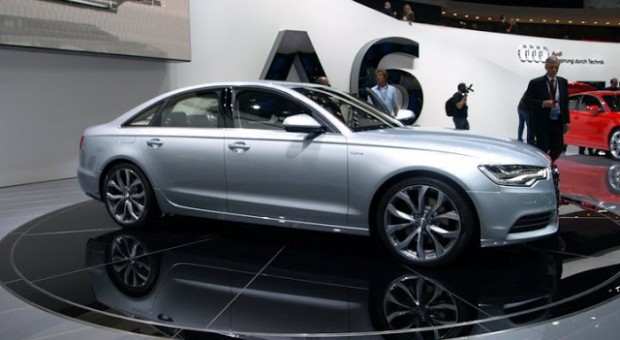
2011 Audi A6 Hybrid @ 2011 Detroit Auto Show
The Audi A6 hybrid can achieve speeds of up to 100 km/h (62.14 mph) purely on electricity; at a constant speed of 60 km/h (37.28 mph), it has a range of 3 km. It can also operate with the combustion engine only or in hybrid mode; in the deceleration phases, it recovers power and activates both the engine and the electric motor together when accelerating quickly.
Special indicators on the instrument cluster and on the MMI monitor provide of detailed display of the different driving conditions.
A crash-protected area of the luggage compartment houses a light, compact lithium-ion battery that provides 1.3 kWh of nominal power and generates 39 kW.
Depending on requirements, it is air-cooled in two ways – by means of a blower from the interior or by means of an internal refrigerant circuit coupled to the automatic air conditioning system.
This technology largely maintains the rechargeable battery within the appropriate temperature range, thereby ensuring that the vehicle operates on electric power a comparatively large percentage of the time.
The A6 hybrid employs an efficient parallel hybrid concept: Its combustion engine, a 155 kW (211 hp) 2.0 TFSI, works together with an electric motor that delivers 33 kW (45 hp) and 211 Nm (155.63 lb-ft) of torque.
The electric motor sits directly behind the TFSI, occupying the space of the torque converter upstream of the modified 8-speed tiptronic. The transmission sends torque to the front wheels.
| Browse our latest car database to discover more cars |
Discover more automotive news & videos
BMW reveals new models @ 2011 Detroit Auto Show
BMW reveals new models @ 2011 Detroit Auto Show
• World premiere: The new BMW 6 Series Convertible.
Its world premiere is one of the highlights of the 2011 NAIAS and a
dazzling performance on the road certainly awaits it: the new BMW 6 Series Convertible fulfils the desires of demanding automobile connoisseurs for fascinating aesthetics, superior driving dynamics and progressive luxury in an open-top premium automobile of the upper class.
The new version of this great BMW convertible impresses with the athletic elegance of the bodywork and the soft top in the characteristic fin look. In the sophisticated interior of the four-seater, the elegantly flat, free-standing Control Display of the iDrive operating system, supplied as standard equipment, lends an exclusive touch.
The driving experience is characterised by optimised comfort and a heightened level of sporting zest. The market launch in the USA will be made with the BMW 650i Convertible. Its V8 power unit with BMW TwinPower Turbo and direct fuel injection delivers 400 hp (300 kW/407 bhp) and can be combined with either a six-speed manual transmission, or an eight-speed automatic sports transmission.
• World premiere: The BMW 1 Series M Coupe.
For the first time, BMW M GmbH has extended its range of high-performance sports cars and now covers the compact vehicle segment. The BMW 1 Series M Coupe, which embodies the typical M characteristics in a particularly concentrated form, will be presented at the 2011 NAIAS.
A 250 kW/340 bhp six-cylinder inline engine with M TwinPower Turbo, chassis technology derived directly from the motor racing track, a high power to weight ratio, athletic design with innovative aerodynamic features and an exclusive interior conceived for concentrated driving pleasure combine to form a harmonious overall concept, which paves the way for new target groups to be led to the unmistakable M Feeling.
All of this makes the BMW 1 Series M Coupe a high-performance sports car, which meets the challenges of the race track just as comfortably as the demands of everyday driving.
• World premiere: The new BMW 1 Series Coupe, the new BMW 1 Series Convertible.
Outstanding driving pleasure in the compact segment is now more attractive than ever. With targeted design modifications, which optimise not only the appearance of the vehicles but also their aerodynamic properties, the new BMW 1 Series Coupe and the new BMW 1 Series Convertible are being presented to the world’s media for the first time at the 2011 NAIAS.
There are two engines available for each of the two models in the USA. Modern six-cylinder engines, rear wheel drive, high-quality chassis technology, innovative features and equipment as well as premium quality propel them to an exceptionally advantageous position in their competitive field.
• The attraction: The new BMW X3.
With more sporting zest, driving comfort, interior space and flexibility, the new BMW X3 significantly extends the lead in the market segment created by its predecessor. The two engines available at market launch also set new standards in efficiency.
In addition, the new BMW X3 is the first
BMW X model to be fitted with electro-mechanical power steering as standard equipment and, as an option, Dynamic Driving Control.
Furthermore, BMW ConnectedDrive driver assistance systems, including Adaptive Cornering Headlights, Head-Up Display and a reversing camera with Top View are available for the new BMW X3; all unmatched in its market segment.
• Innovation: BMW EfficientDynamics – a new richness of diversity.
Throughout the world, BMW EfficientDynamics sets standards for outstanding driving pleasure while continuously reducing fuel consumption and emissions.
This is made possible by new engines with enhanced degrees of efficiency, the optimisation of weight and aerodynamics and additional consumption reduction technologies. Innovations such as Brake Energy Regeneration and electro-mechanical power steering are being fitted as standard equipment to more and more models and successively introduced into all of the world’s automotive markets. BMW has indicated the path to completely CO2-free mobility with the development of concepts for purely electrically-driven vehicles.
A further milestone on this route is the testing of the BMW ActiveE by private users in everyday traffic situations. The field trial with this vehicle, driven by an electric engine and based upon the BMW 1 Series Coupe, will begin as early as the summer of 2011 on the roads of a number of North American states.
• Innovation: The new BMW ConnectedDrive services.
By intelligently networking the driver with his vehicle and the outside world, BMW ConnectedDrive creates fascinating possibilities for increasing comfort and safety as well as for optimising the use of infotainment functionality. No other automobile manufacturer offers a similarly comprehensive and innovative selection of driver assistance systems and mobility services.
BMW ConnectedDrive is the world leader in integrating smart phones and music players into the vehicle, as well as in the use of Internet-based services for optimising navigational and entertainment functionality.
Source: BMW
| Browse our latest car database to discover more cars |
2012 Hyundai Veloster @ 2011 Detroit Auto Show
2012 Hyundai Veloster @ 2011 Detroit Auto Show
It’s one of the most hotly anticipated new cars on display at the 2011 Detroit auto show–and maybe that’s surprising, since the 40-mpg 2012 Hyundai Veloster comes from humbler beginnings than super cars like the Porsche 918, Cadillac CTS-V Coupe and BMW 650i that also are vying for attention at Cobo Center.
The Veloster is on the most-wanted list for a couple of simple reasons: because it underscores Hyundai’s stellar growth in the U.S., and because it follows a string of hits from the company that won North American Car of the year in 2009 with the Genesis sedan, is a finalist for the same award this year with the 2011 Hyundai Sonata, and recently introduced the toughest challenge yet for the likes of the Honda Civic yet with its 2011 Hyundai Elantra.
The Veloster arrives late this year as a 2012 model with its hatchback full of unique, and potentially game-changing, features and functions. At the top of its list is a funky quartet of doors.
Hyundai calls it a three-door vehicle, but the Veloster has four doors in all, counting the hatchback, the driver-side door, and the pair of doors on its passenger side. It looks as if it could be a rear-hinged rear door, like the one on the MINI Cooper Clubman, but in reality the Veloster’s second passenger-side door is conventionally hinged. The end result?
A quirky-looking compact that seems better integrated than, say, the Nissan Juke, but still a shape that arrests more than it awes.
The Veloster rides on a 104.3-inch wheelbase, with an overall length of 166.1 inches and width of 70.5 inches.
While Hyundai says it handily outpaces coupes like the Honda CR-Z and Scion tC in interior room–as well as the MINI Cooper and Clubman–at 15.5 cubic feet behind the rear seat, it also outpaces the Juke’s 10.5 cubic feet of cargo space.
The Veloster also is one of two Hyundais fitted with the company’s new Blue Link telematics system, which also will be available in the Sonata sedan in the 2012 model year.
BlueLink ties together all sorts of in-car infotainment and communication functions, as well as OnStar-like connections with live human operators and even mobile apps to enable functions like crash notification and remote door unlocking.
Additional BlueLink packages link up with third-party apps like Pandora’s internet radio; translate a driver’s voice into responses to received text messages; add on plug-and-play video via USB connections; and bundle in voice recognition and controls. It’s all governed via a seven-inch LCD touch-screen display. (For more on BlueLink, turn to our sister site, AllCarTech.)
Like Ford’s new media hub in the 2011 Ford Edge and 2011 Explorer, Hyundai BlueLink also pulls together a USB port and RCA jacks for smartphone and gaming-system connectivity–in park, Hyundai says–while the Veloster also offers a 115-volt power outlet for recharging.
BlueLink also will incorporate an “EcoCoach” to help drivers learn more about their fuel consumption and driving habits, and will help teach more efficient driving techniques, according to Hyundai.
As another step toward Hyundai’s stated goal of being the most fuel-efficient automaker in the world, the Veloster comes with a small-displacement engine that stretches a gallon of fuel farther than many other sport coupes, like the Scion tC.
The Veloster’s 1.6-liter direct-injected four-cylinder engine will turn in 138 horsepower and 123 pound-feet of torque, and will be mated to Hyundai’s first dual-clutch transmission in some versions.
A six-speed manual also will be offered. The company predicts the Veloster will achieve a 40-mpg rating on the EPA highway fuel-economy test, but hasn’t made clear if the manual-gearbox Veloster will hit the same mark.
Read more (source).
| Browse our latest car database to discover more cars |
2012 BMW 1-Series M Coupe @ 2011 Detroit Auto Show
2012 BMW 1-Series M Coupe @ 2011 Detroit Auto Show
BMW’s latest introduction to the U.S. market bowed today at the 2011 Detroit Auto Show, and it’s a machine that’s meant to light the true enthusiast’s heart aflutter: the 2012 1 Series M Coupe.
We must say, it looks rather striking in the metallic orange hue you see in our live photo gallery below.
Even more importantly, the 340 horsepower put out by its 3.0-liter turbocharged inline-six engine is said to “capture the soul of the original M3.”
BMW claims this new sportster was inspired by the 1988 M3, and the German automaker’s intention is reportedly to “illustrate its ability to build race car performance into a small car, capable of everyday use.”
Expect to see the new 1 Series M Coupe hit dealership lots in the spring of 2011 for $47,010, in limited quantities according to BMW.
| Browse our latest car database to discover more cars |
2012 Volkswagen Passat @ 2011 Detroit Auto Show
2012 Volkswagen Passat (2011 Detroit Auto Show)
Volkswagen has serious plans for its market share here in North America. The automaker hopes to sell 800,000 cars per year in the United States by the year 2018, and it’s vehicles like the refreshed 2011 Jetta and this, the all-new 2012 Passat, that will be the bread-winners moving forward.
If your first thought about the Passat’s design is “big Jetta,” you aren’t alone. The last-generation Passat wasn’t exactly a looker, but at least it stood out within Volkswagen’s lineup.
The new Passat honestly and truly looks like a longer, wider, taller Jetta, and the nondescript design language makes it look extremely unforgettable. It isn’t bad looking, but it doesn’t spark any emotion within us.
Much like the Jetta, the Passat gets a much lower price point for the 2012 model year — base pricing is expected to start around $20,000 when the car goes on sale later this year, some $8,000 below the 2011 model it replaces.
Both five- and six-cylinder gasoline engines will be available, as well as a 2.0-liter diesel inline-four (the same engine we enjoy in the Golf and Jetta currently).
Interior quality is much better than the dumbed down cabin of the Jetta, though we’d still like slightly more refinement, especially considering how good the interiors of $20K competitors are these days.
Volkswagen said its redesigned 2012 Passat, on display at the 2011 Detroit Auto Show, will get a drastic reduction in the base price and will offer an optional turbodiesel engine that will return 43 mpg in highway driving.
| Browse our latest car database to discover more cars |
2012 Audi A6 @ 2011 Detroit Auto Show
2012 Audi A6 @ 2011 Detroit Auto Show
Audi has unveiled its mid-range 2012 A6 sedan, and as we learned from advanced photos, it follows closely in the mold of its big brother, the A8.
As the range-topping sedan is a pretty piece, that’s not a bad thing, but Audi seems to be channeling BMW’s old “One sausage, three sizes” design mantra of decades ago.
In this case, that means a massive single-frame grille, available LED headlamps (as shown), and a relatively simple and unadorned profile that lends the A6 a premium look that will likely wear well over the years.
The new A6 will be available globally with two gas engines and three TDI diesel powerplants, as well as a front-wheel drive-only hybrid model.
The most powerful gasoline-fed model will be the 3.0-liter TFSI Quattro, packing 300 horsepower and 325 pound-feet of torque, routed through a seven-speed S tronic automatic.
| Browse our latest car database to discover more cars |
Discover more automotive news & videos
2012 Ford Focus (II) @ 2011 Detroit Auto Show
2012 Ford Focus (II) @ 2011 Detroit Auto Show
| Browse our latest car database to discover more cars |
2011 Ford Prodigy – Electric Cars from Ford Motor Company @ 2011 Detroit Auto Show
Electric Cars from Ford Motor Company @ 2011 Detroit Auto Show
The new Ford Prodigy is a hybrid electric family car prototype able to achieve more than 70 miles per gallon fuel economy.
The lightweight, aerodynamic and fuel-efficient Prodigy – which will be unveiled at the North American International Auto Show – demonstrates Ford’s progress in developing a hybrid electric family vehicle with mass appeal.
“Prodigy goes a long way toward meeting our goal of an extremely fuel-efficient family vehicle,” says Neil Ressler, vice-president – Research and Vehicle Technology and the company’s chief technical officer. “The vehicle represents an interim stage between our P2000 research programs and our plans for an affordable, production hybrid.”
The stylish, roomy Prodigy is designed to be stingy on fuel without sacrificing customer appeal in areas such as performance, affordability and roominess. The sedan is built on a lightweight platform, features a modern, aerodynamic design and is powered by a low storage requirement (LSR) hybrid electric powertrain. The Ford Prodigy features an aerodynamic design that enhances vehicle aesthetics while reducing air resistance.
Prodigy’s 0.199 coefficient of drag – a measure of air resistance – is a 33-percent improvement compared with prior versions of the vehicle. Such a major improvement helps improve the vehicle’s fuel economy by 4 miles per gallon. To enhance the vehicle’s aerodynamics, side-mounted cameras and onboard monitors are used in place of conventional side-view mirrors.
The cameras provide a needed side view for the driver while not hindering air-flow around the vehicle. Variable ride height, grille shutters and shields under the car also add to the vehicle’s aerodynamic improvement. Prodigy’s platform is based on Ford’s extensive lightweight materials research. Prodigy’s total weight is 2,387 pounds, which is about 1,000 pounds lighter today’s family sedan. The significant weight reduction was achieved without sacrificing package efficiency.
Prodigy is 30-percent lighter than today’s Taurus sedan, but – thanks to creative packaging and lightweight materials – passenger space and luggage capacity are the same.
Prodigy’s low storage requirement hybrid electric propulsion system uses an aluminum DIATA (Direct Injection, Aluminum Through Bolt Assembly) engine, starter/alternator, automatically shifted manual transmission and high-power battery.
| Browse our latest car database to discover more cars |
Discover more automotive news & videos
2011 Mini Paceman Concept @ 2011 Detroit Auto Show
2011 Mini Paceman Concept @ 2011 Detroit Auto Show
If you were worried that Mini was starting to make cars that were too big, here’s some relief.
The new Mini Paceman Concept, which will made its world debut at the 2011 Detroit Auto Show, is no bigger than the recently introduced Countryman.
| Browse our latest car database to discover more cars |
2011 Chrysler 300 @ 2011 Detroit Auto Show
2011 Chrysler 300 @ 2011 Detroit Auto Show
Chrysler has extensively reworked its flagship sedan, the 2011 Chrysler 300, which made its public debut at the 2011 Detroit Auto Show and begins reaching U.S. dealers in the first quarter.
| Browse our latest car database to discover more cars |
2012 Buick Verano @ 2011 Detroit Auto Show
2012 Buick Verano @ 2011 Detroit Auto Show
Aimed at tapping into a long-unexplored market segment, the 2102 Buick Verano marks the division’s first foray into the upscale compact arena in more than two decades.
Slotting in under the new Regal in size and price, this front-drive four-door will offer an impressive combination of luxury and economy that John Schwegman, vice president of Buick marketing, contends should allow it to successfully vie with rivals like the Audi A3 and Lexus IS250 for the hearts, minds and wallets of a new generation of younger, value-oriented buyers.
| Browse our latest car database to discover more cars |
Discover more automotive news & videos
2011 Porsche 918 RSR Intro @ 2011 Detroit Auto Show
2011 Porsche 918 RSR Intro @ 2011 Detroit Auto Show
The Porsche 918 RSR rolls out onto the show floor at the 2011 Detroit Auto Show
| Browse our latest car database to discover more cars |
Discover more automotive news & videos
Latest car news @ 2011 Detroit Auto Show
After a few years of subdued displays, this year’s Detroit auto show is an opportunity to demonstrate that the auto industry is fully back on its feet. Expect bigger displays from General Motors, Ford and others. It’s the first time in four years that Porsche will appear at the show.
And while the smart money is on the Chevy Volt to win North American Car of the Year, plug-in electric cars are already starting to feel like last year’s news-considering the constant need for the novel and exotic at major car shows.
So, what green car news should we expect to hear in Detroit? Here’s a quick rundown.
Prius Family Is Unveiled
As we’ve been reporting, the Toyota Prius will expand its identity from a single mode to an entire family-consisting of the third-generation model already on the road, as well as the Toyota Prius Plug-in Hybrid; the Prius-V, a larger version similar in size to the crossover Toyota Venza; and the Prius-C, a concept compact version.
The unveiling of these models signals the beginning of Prius hybrids becoming a sub-brand for Toyota, as it tries to establish hybrid gas-electric technology as a mainstream option for the widest possible market. With gas prices on the rise in 2011, the timing might be just right for this next wave of hybrids.
Small will be big in Detroit. The 2010 Chevrolet Sonic subcompact, replacing the Aveo next year, will join G.M.’s expanding small-car lineup.
The Sonic, which will have hatchback and sedan versions, will join the Chevrolet Cruze and an upcoming minicar. Buick is also expected to a show a compact car, the smallest in its lineup. Ford will unveil the production version of the 2012 Ford C-Max – a smaller alternative to the minivans that have grown bigger in recent years.
The micro-van is a popular format in Europe, but has been almost completely missing in the United States. It’s also rumored that Ford will show a C-Max version with an electric drive-but the company will debut its battery-electric Focus in Las Vegas at the Consumer Electronics Show, rather than Detroit.
High-Priced Exotic Electrics
Major auto shows aren’t complete without fantasy machines-especially from automakers that don’t have the real goods to show. So, expect Porsche and Mercedes to display crazy fun electric cars.
Porsche executives are promising something “spectacular” in Detroit-which might mean the U.S. debut of the Porsche 918 Spyder.
The powerful plug-in hybrid first turned heads at March’s Geneva Auto Show. It’s a supercar with a top speed of nearly 199 mph, can accelerate from 0 to 62 in just 3.2 seconds, and fuel economy in the neighborhood of 70 MPGe. The Spyder’s two drivetrains provide a total of 718 hp, coming from a pair of 160 kW electric motors and a 3.4-liter V8 engine. One motor will be mounted to each axis, with the V8 powering just the rear wheels.
The electric drivetrain will provide about 16 miles of pure electric range. Last July, Porsche said it approved production of the vehicle, which comes with a $650,000 price tag.
Then, there’s the nearly as audacious $180,000 Mercedes-Benz SLS AMG E-Cell. It’s an electric version of the SLS AMG Gullwing that went on sale last year. Slow in comparison to the Porsche 918 Spyder, the E-Cell only has 526 horsepower and 649 pound-feet of torque and a 0-60 mph time of 4 seconds. It uses four motors-a pair at each axle to drive all four wheels at the same time. It’s reported to go on sale in 2013
Read more (source)
| Browse our latest car database to discover more cars |
Discover more automotive news & videos
2012 Mercedes C-Class @ 2011 Detroit Auto Show
Mercedes shows of the new C-Class at a special preview the night before the 2011 Detroit Auto Show.
| Browse our latest car database to discover more cars |
2011 Ford Focus @ 2011 Detroit Auto Show
For the next-gen model of the Ford Focus due in late 2010, Ford will develop just one Focus model in line with its new global product development strategy.
The cars will have unique styling and specifications to suit major markets but 87% of parts will common across the fleet, as revealed by The Ford Chief of Products last month.
By simplifying its engineering process Ford will be able to cut costs and bring the car to market faster. The new model will be based around the chassis on cars like the Volvo C30 and Mazda3, and will be manufactured in Europe, North America, Australia and possibly China.
This latest rendering gives us a possible new look for the car, showing that its styling will likely be influenced by the new Fiesta.
Expect to see lots of bodystyles including three and five-door hatchbacks plus a sedan, coupe and convertible
| Browse our latest car database to discover more cars |
2011 Bentley Mulsanne @ 2010 Detroit Auto Show
2011 Bentley Mulsanne @ 2010 Detroit Auto Show
Let’s remember …
| Browse our latest car database to discover more cars |
Discover more automotive news & videos
2011 Chevy Aveo RS @ Detroit Auto Show
Let’s remember …
| Browse our latest car database to discover more cars |
2011 Ford Mustang @ 2010 Detroit Auto Show
A new 5.0-liter motor stands to move the Mustang further ahead of the pack
Let’s remember …
| Browse our latest car database to discover more cars |
2011 Lincoln MKX @ 2010 Detroit Auto Show
2011 Lincoln MKX @ 2010 Detroit Auto Show
Let’s remember …
| Browse our latest car database to discover more cars |
Unseen images from 2011 North American International Auto Show development
Walking tour on the show floor at Cobo Center with 2011 North American International Auto Show Chairman, Barron Meade, and 2011 NAIAS Vice Chairman, William Perkins.
| Browse our latest car database to discover more cars |
2011 North American International Auto Show to Feature Full Floor, Ride and Drive and 30-Plus Worldwide Debuts
As show opening draws near, attention turns to Detroit for global unveilings and news from an optimistic industry
The North American International Auto Show (NAIAS) will open its doors to more than 4,500 automotive journalists in a few short weeks with an anticipated 30-40 worldwide debuts from automotive manufacturers around the globe.
“We’re rapidly approaching January 10th when the door of Cobo Center will once again open to the NAIAS and 2011 will be another banner year for media, industry and the public alike as they will be able to explore a packed show floor,” said Barron Meade, chairman, 2011 NAIAS. “We’re again bringing a wide array of exhibitors featuring the latest in environmental technologies for automotive and lifestyle into Michigan Hall with Smarter Living in Michigan sponsored by the Michigan Economic Development Corporation (MEDC) and DTE Energy which will once again include the popular ride and drive element.”
The public and media will be treated to highly anticipated debuts from exhibitors such as Audi, BMW, Chrysler, GM, Mercedes-Benz, Toyota and Volkswagen, to name a few.
The annual Charity Preview gala event is once again scheduled for the Friday prior to public days, January 14, from 6 – 9 p.m., and will feature a concert by “The Rockets,” a legendary Detroit rock band. The annual event benefits local charities and has raised more than $82 million since its inception in 1976, over $37 million of which was raised in the last seven years alone.
The money raised by ticket sales provides medical treatment, clothing, and support services for local kids. Tickets for Charity Preview are currently available and can be purchased by calling 888-838-7500, or by visiting charitypreview.com.
The popularity of the MEDC’s EcoXperience ride and drive showcased at the 2010 NAIAS led to another innovative exhibit to be featured at the 2011 show.
“Smarter Living In Michigan” will be presented by long-time partner, the MEDC, and will be a key feature of the 2011 NAIAS.
The exhibit will be comprised of two different areas, the MEDC Town Square and the adjacent Smarter Living Showcase, sponsored by DTE Energy.
Michigan Hall will be transformed into an interactive display showcase, highlighting the many ways that Michigan companies are building and creating eco-friendly communities and sustainable lifestyles.
The MEDC Town Square and Smarter Living display area will again bring the ride and drive element indoors with a test track featuring electric-drive and hybrid vehicles from leading domestic and import manufacturers.
Such technologies to be featured include solar cars, charging stations, batteries, transit connect, rolling chassis, and alternative energies.
In line with trends of other international automotive shows such as Geneva, Paris, and Frankfurt, and to also accommodate customer demand–both the auto manufacturers and the media who attend the show–the 2011 NAIAS is making game-changing moves in how it is scheduling the cadence of some of the world’s most highly touted worldwide debuts.
As a reflection of the “new normal” in the 2011 automotive industry and an unprecedented demand for news conference timeslots from the past two years, NAIAS will feature two distinct press days.
The first press day, Mon., Jan. 10, will feature exciting worldwide, never-before-seen products, as well as significant North American introductions which will steer the direction of the industry for years to come.
The second press day, Tues., Jan. 11, will showcase highly anticipated innovative technological advancements by auto companies and suppliers while including additional key product unveilings. NAIAS officials note more surprises are on the horizon and will be providing updates up to show time.
Media credentialing for NAIAS 2011 is in full swing. Those who wish to apply for a credential can visit naias.com to download a media credential application from the NAIAS Web site.
SOURCE North American International Auto Show
| Browse our latest car database to discover more cars |
Top 5 Factors That Will Boost Auto Sales in 2011
Top 5 Factors That Will Boost Auto Sales in 2011
U.S. new-car and light-truck sales are headed for double-digit percentage gains in 2011, says Paul Taylor, chief economist of the National Automobile Dealers Association (NADA).
― The auto industry is coming back strong from what has been a difficult economy,‖ Taylor says. ―Auto sales are playing a key role in leading the economic recovery.‖
With the average age of cars and trucks on the road today at more than 10-years-old, Taylor says Americans will need to replace their aging vehicles. This fact, combined with low financing rates and wider credit availability, will help boost new-vehicle sales nearly 12 percent this year, he says.
―Sales will reach 12.9 million new-cars and trucks in 2011,‖ Taylor says. Last year, 11.55 million light vehicles were sold.
Here’s a list of NADA’s top five factors that will accelerate new-vehicle sales this year:
Auto manufacturers are producing a wide variety of new-cars and trucks that are headed to dealer showrooms. Next week, for example, the North American International Auto Show in Detroit will display more than 700 new cars and trucks representing more than 50 domestic and international brands from the revitalized automakers in Detroit as well as almost all major Asian and European automakers.
There will be many new hybrid and electric vehicles as well as sedans, crossovers and SUVs with more fuel-efficient combustion engines, including several new models from China.
― The worldwide debut of nearly 40 cars and trucks at the show in Detroit is a strong indicator that the auto industry is making a comeback and will lead to increased manufacturer production and sales in 2011,‖ says Taylor
Read more
| Browse our latest car database to discover more cars |
The 2011 North American International Auto Show Making History, Pointing to Future with Vehicles, Leaders on a Global Stage
NAIAS News Flash: The 2011 North American International Auto Show Making History, Pointing to Future with Vehicles, Leaders on a Global Stage
Entering its 23rd year as an international event, the NAIAS is among the most prestigious auto shows in the world, providing unparalleled access to the automotive products, people and ideas that matter most – up close and in one place.
One of the largest media events in North America, the NAIAS is the only auto show in the United States to earn an annual distinguished sanction of the Organisation Internationale des Constructeurs d’Automobiles, the Paris-based alliance of automotive trade associations and manufacturers from around the world.
Thousands from the global automotive industry continue to gather in Detroit this weekend for one of the world’s premier events, the North American International Auto Show (NAIAS) at Cobo Center.
Within the next 72 hours, international opinion leaders will be seeing 30-40 worldwide vehicle debuts, but also exchanging ideas and strategies that affect global economics. Impactful events and significant conferences taking place during NAIAS include:
NAIAS will welcome representatives of international auto manufacturer associations, many of which are also members of the Paris-based Organisation Internationale des Constructeurs d’Automobiles” (OICA), including: Korea Automobile Manufacturers Association (KAMA); Associazione Nazionale Fra Industrie Automobilistiche (ANFIA), Torino, Italy; Japan Automobile Manufacturers Association (JAMA), organizers of the Tokyo Motor Show; Verband der Automobilindustrie (VDA),which organizes the Frankfurt Motor Show; and the Alliance of Automobile Manufacturers, Washington; also, there will be representatives of other international auto shows such as GL Events Italia, the organizing company of Bologna Motor Show, Bologna, Italy; and the Canadian International Auto Show, Toronto.
Titled “New Opportunities, New Challenges, New Insights,” the 23rd Annual Society of Automotive Analysts (SAA) Automotive Outlook Conference, sponsored by PwC Autofacts, will take place later today at Cobo Center.
Steve Carlisle, vice president, Global Product Planning, will speak about GM’s future technology and vehicle plans.
He will join an impressive lineup of speakers which includes Carlos Tavares, chairman, Nissan Americas.
“The vehicles grab global attention at NAIAS, but not just as outstanding examples of design and innovation,” Tavares said. “The amount of new product serves as the direction for the world’s economic future. This, in addition to the unique audiences this show gathers, makes Nissan proud to say it will be returning to NAIAS as an exhibitor in 2012. It is an excellent forum for us to place a spotlight on products that will be carrying us all into the future.”
NAIAS 2011 will again be the backdrop for the announcement of the North American Car and Truck of the Year (NACTOY) awards on Monday, Jan. 11.
The awards, given by 49 veteran automotive journalists from Canada and the United States, recognize the most outstanding new vehicles of the year. These vehicles are benchmarks in their segments, based on factors including innovation, design, safety, handling, driver satisfaction and value for the dollar.
An influential lineup of nearly 20 executives will discuss the tough issues facing the industry today and how they are forging new business models as they address the theme, “Prospering in the Next Normal” at the 2011 Automotive News World Congress.
Held Tuesday, Jan. 11 – Thursday, Jan. 13 at the Detroit Marriott Renaissance Center, the event will feature keynote addresses from: Dan Akerson, CEO, General Motors; Mark Fields, Executive Vice President, Ford Motor Company & President, The Americas; and Ralph Gilles, President & CEO Dodge Brand, Senior Vice President Product Design, Chrysler Group LLC.
Source: NAIAS
| Browse our latest car database to discover more cars |
Audi USA promises diesel versions of most models by 2015
Audi of America plans to expand its TDI range to include a diesel variant of every high-volume model it sells.
Although diesels account for a small fraction of overall car sales in North America, Audi foresees a growing interest over the next few years.
In a recently published interview, Johan de Nysschen, president of Audi of America, said the automaker expects diesels to account for 20 percent of its overall sales in the United States by 2015, compared with 5.5 percent in 2010.
Dealers have told the automaker there’s “significant consumer demand” for more TDI-equipped Audis, spokesman Jeff Kuhlman told Automotive News. Demand for diesels outstrips supply, he added. About 50 percent of A3s and 40 percent of Q7s in the U.S. are diesels.
The diesel push is part of an overall strategy at Audi to double its sales by 2015 — from a current level of 100,000 units per year to 200,000.
Source: Audi Usa
| Browse our latest car database to discover more cars |
Discover more automotive news & videos
Ferrari F430 Spider has a problem in winter

| Browse our latest car database to discover more cars |
How to extend the life of your car?
Here are 3 tips to help you extend the life of your motor vehicle.
Follow the manufacturer’s recommended maintenance schedule
Service your motor vehicle in accordance with the manufacturer’s recommended maintenance schedule. The schedule will vary from car to car, but a service is usually required every 10,000 kilometres or every 6 months, whichever comes first. Check your log book for the recommended schedule.
Regular servicing will identify problems sooner so they can be addressed before they turn into more expensive repairs.
A car that is maintained properly will operate efficiently, minimising wear and tear on mechanical and engine parts, thus prolonging the life of the vehicle.
If you buy a new car with a warranty, check the warranty conditions for maintenance requirements. It may invalidate your warranty if you don’t follow these requirements. With car insurance policies it is often a condition that policy holders keep their car in roadworthy condition or insurance claims may be affected.
Check your tyre condition and pressure regularly
Check the condition and pressure of your vehicle’s tyres on a regular basis to ensure they are properly inflated according to the manufacturer’s recommendations; these are usually found in the car’s user manual.
It is best to check the tyres when they are cold to get a more accurate reading, as their pressure can increase when hot.
Most tyre problems occur due to under-inflation, which can cause rapid shoulder abrasion, uneven wear, and extra flexing of the sidewalls. These can lead to an increase in fuel consumption, emissions and tyre replacement frequency.
Over-inflation can lead to impact damage or a loss of grip on surfaces, which can result in premature tyre failure.
Bald, punctured or otherwise damaged tyres can also present a safety hazard and compromise the road worthiness of your vehicle, potentially impacting your car insurance cover.
Check your service centre is rotating your tyres according to schedule. This evens out the wear and tear, which will increase the useful life of your tires.
Clean your motor vehicle regularly
Wash your vehicle on a regular basis, and give it a good polish and wax to protect its finish. Clean parts and surfaces help reduce the onset of rust and corrosion.
Remove any insects, bird droppings, road tar, or particles such as dirt, sand or grime from your motor vehicle as soon as possible, to reduce any damage to the finish of your car. Many of these items contain acids and other contaminants that can cause permanent damage if left on the paintwork for extended periods.
Wherever possible, park your vehicle under cover or in shady areas to reduce its exposure to sunlight. High levels of exposure to heat and UV rays will lead to a quicker deterioration in the paintwork.
Keeping your car regularly maintained may involve time and money, but it’s an investment that will see your car perform better and operate more efficiently and likely minimise your costs relating to fuel, repairs and possible accidents in the long run.
| Browse our latest car database to discover more cars |
How to minimize fuel consumption? How to save money through fuel-efficient driving?
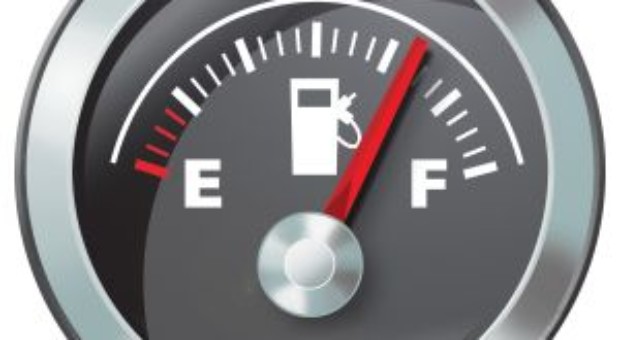
Here are 8 steps to save money by making simple changes to your driving style and habits. This will have an impact on the lifespan of your car, by reducing potential mechanical repairs and unnecessary fuel consumption.
1. Drive at a steady pace
Driving in the right gear and at a steady pace means you don’t need to accelerate or decelerate as often, minimising fuel wastage.
Be alert at all times to your surrounding road conditions and behaviour from fellow motorists – this will reduce the need for sudden braking, which increases fuel consumption and increases wear on your car.
2. Avoid aggressive driving
Aggressive driving habits such as excessive speed, abrupt braking and heavy-footed acceleration will lead to higher fuel consumption and more emissions.
Reckless driving also increases the likelihood of your being involved in an accident, which may cause your future car insurance premium to rise if you are the at-fault driver.
3. Cruise control
For long drives on the highway or in country areas, try using the cruise control setting; it will improve your fuel efficiency.
4. Refresher driver training
Consider taking a refresher driver training course to brush up on your driving and road handling skills. Even the most experienced of drivers can form poor driving habits over time. A refresher course will quickly bring you up to speed on ways to improve your driving technique, thereby reducing accidents and improving your car’s fuel consumption.
5. Use air conditioning sparingly
During summer, use your air conditioning sparingly to reduce your fuel consumption. As an alternative, wind down your car windows and let some natural air flow into your car, and save the air conditioning for really hot days.
6. Remove excess weight from your motor vehicle
Increase your fuel economy by removing any excess weight from your motor vehicle – a common culprit is a boot full of heavy tools and equipment that are never used.
Also remove any attachments such as heavy roof racks that are only needed occasionally; these can add significantly to the weight of your car as well as increasing wind resistance, further reducing your fuel economy.
7. Maintain your motor vehicle regularly
Whether you have purchased a new or used car, it’s important that you take the time to maintain your car on a regular basis. Some of the regular tasks for maintaining your motor vehicle include: checking that your tyres are at the right pressure, rotating your tyres often if there is evidence of uneven wear and tear, and replacing dirty air filters to improve your motor vehicle’s engine efficiency.
If you have a car under warranty, make sure to comply with the manufacturer’s recommended schedule. The schedule will vary from car to car, but a service is usually required every 10,000 kilometres or every 6 months. This also ensures that your vehicle does not become unroadworthy as your insurance cover could be impacted if an accident was the result of vehicle defects that arise from lack of regular maintenance (eg faulty brakes).
8. Plan your car routes
If possible, try to avoid getting stuck in traffic jams during peak hour traffic. Constant stopping and starting can be very costly on fuel and adds stress to engine components.
To avoid traffic jams, plan ahead and travel on alternative routes that are less congested. Sometimes the shortest route may not necessarily be the most fuel efficient if you end up gridlocked or encounter multiple traffic lights over a short stretch of road.
| Browse our latest car database to discover more cars |
Auto industry had a better ride in 2010
Automotive industry had a better ride in 2010
Americans purchased about 11.5 million vehicles last year, an 11 percent increase from 2009/2010, according to preliminary reports from automakers Tuesday and analyst estimates.
Although a large improvement from the recession-depressed level of 2009, last year’s sales levels still were the second lowest since 1982, when Americans purchased 10.5 million vehicles. From 1999 through 2007, the auto industry sold 16 million to 17 million vehicles annually.
But the industry has rallied in recent months, and December continued that trend.
General Motors was the first of the major automakers to report Tuesday, saying that December sales rose 15.5 percent from a year earlier, to 223,932 vehicles, after factoring out the Pontiac, Hummer, Saturn and Saab brands it closed or sold as part of its bankruptcy reorganization during the summer of 2009.
Of its remaining brands, Buick, Cadillac and GMC posted double-digit gains, while Chevrolet was up 9.1 percent for the month. Including the discontinued lines, GM’s December sales rose 7.5 percent, to 224,185.
For the year, sales of GM’s core brands rose 21.3 percent, to 2.2 million vehicles. Including the discontinued lines, sales rose 6.3 percent.
GM said it believes overall sales this year will continue the upward trend, rising to more than 13 million vehicles. Other automakers are predicting industry sales of 12.5 million to 13.5 million this year.
Ford topped Toyota Motor to become the second-largest auto seller in the U.S., a position it last held in 2006. Ford captured about 16.7 percent of the market, up more than a full percentage point, according to George Magliano, an analyst at IHS Automotive. Toyota fell to about 15.1 percent, down more than a point and half, he said.
Audi of America, Hyundai Motor and its sister company, Kia Motors, and Subaru of America all set U.S. sales records and gained market share despite the slow pace of auto sales overall. Volkswagen of America had its best year since 2003.
See more information please
| Browse our latest car database to discover more cars |
Volkswagen Plans to Expand SUV Offerings to Gain Ground in U.S.
Volkswagen AG plans to expand its portfolio of sport-utility vehicles to gain ground in the U.S. on Toyota Motor Corp. and General Motors Co.
“We will be looking to really grow, particularly in the compact SUV segment,” VW’s U.S. chief Jonathan Browning said in a phone interview yesterday from the unit’s headquarters in Herndon, Virginia. “Over time, I think there’s also scope for growth in terms of a larger SUV within the portfolio.”
VW, Europe’s largest carmaker, currently has two SUV models, the full-size Touareg and compact Tiguan. VW sold 20,946 Tiguans in the U.S. in 2010 and 4,713 Touaregs. Carmakers delivered 3.3 million SUVs in the world’s second-largest auto market last year, 29 percent of all vehicles sold in the U.S. Honda’s CR-V model was the most popular, generating sales of 203,714, according to Ivan Drury, an analyst at Edmunds.com.
VW aims to triple U.S. sales to 1 million vehicles by 2018, with the Audi luxury unit making up 20 percent of the total, as part of an effort to overtake Toyota as the world’s largest automaker. VW will open a factory in Chattanooga, Tennessee, by April and start delivering a new mid-sized sedan built at the plant in the third quarter, Browning said.
VW’s preferred shares rose as much as 1.60 euros, or 1.3 percent, to 127.35 euros and were up 0.4 percent as of 3:05 p.m. in Frankfurt. The stock, which has more than doubled since the beginning of 2007, gained 86 percent last year, the best performance in Germany’s benchmark DAX index.
Read more about Volkswagen’s plan!
| Browse our latest car database to discover more cars |
BMW Concept made by 18-year old teenager
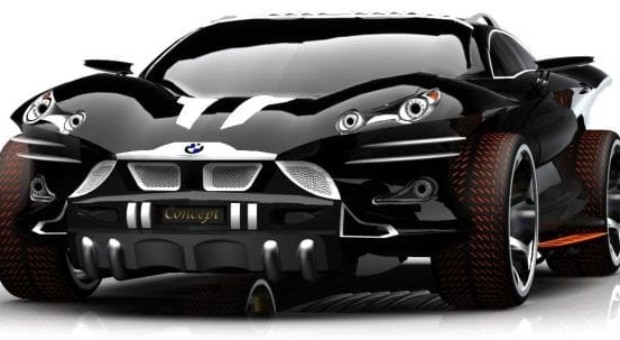
This is art! This is talent. In the past few months, we have seen tons of spy shots concepts for the upcoming BMW models, but not even once have we heard rumors about a possible roadster version of the car. A young man had a vision 😀 You##Q##ll see …..
This car concept BMW was made by 18-year old artist from Africa – Tunisia. His name is Khalfi Oussama. Please welcome his art and clap your hands for his achievement. Congrats …
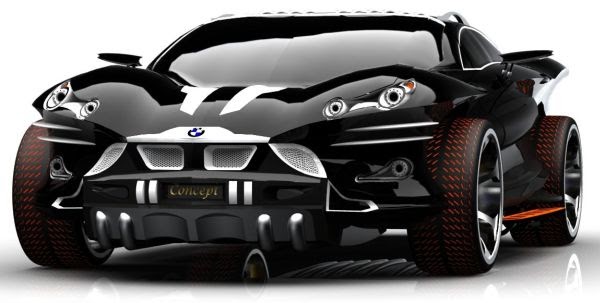 |
| BMW Concept #1 |
 |
| BMW Concept #2 |
 |
| BMW Concept #3 |
Thank you Ken for the pictures.
| Browse our latest car database to discover more cars |
Discover more automotive news & videos
2011 Mini Cooper Clubman S by Schmidt Revolution
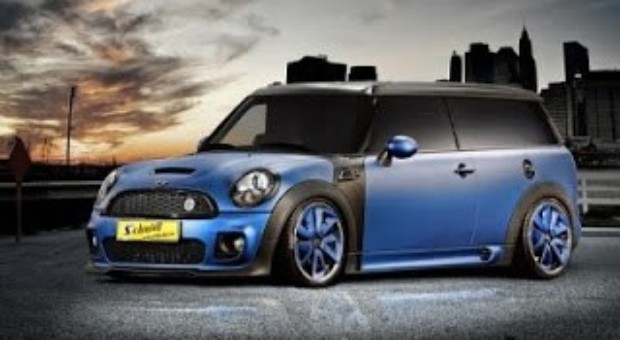
The STREETWORKER from Schmidt Revolution
In a kind of competition from the Fiat 500, the Toyota IQ and others in its class, the Mini Cooper Clubman S prevailed with style and passion. In fact, the Schmidt Revolution, wheel manufacturer from Bad Segeberg, had taken on the task of providing a concept car with Urban Lifestyle tuning.
With its Clubdoor, the engine and the concept of space, it is practically the perfect choice for this task.
The “genetically engineered” Mini, already equipped with a John Cooper Works Aerodynamic package, has been purchased in March 2010. With black xenon lamps including daytime running lights and after a performance increase to 200 hp and torque of 250 Nm – these two parameters allow the Clubman to reach a maximum speed of 220 km/h – the car is ready for city travel, at least for trips around the church tower.
The colors still harbored some problems in it, should the Mini yet actually be equipped with chrome foil. Rethinking was not easy for the men from A4M in Wuppertal; the BMW sprout has a matt blue car wrap, and then they returned back to immaculacy.
Street workers usually go a lot, so the “feet” and “shoes” require special attention The Cirrus wheels were decorated with colored multiplex material, so this fun car is never left unattended in city traffic.
The really impressive 8Jx18H2 Cirrus rims have any of 3D-shaped multiplex patterns in matte blue; any tint of body color, from bright red to carbon black is possible at any style.
Cheap tires, causing annoying road noise, were changed with recapped 215/35R18 Conti tires, and the tire problem was solved.
To allow for changing “obstacles” while impressive driving in city traffic, the concept car has a Streetec air suspension with press buttons which enables to adjust the height and make it 60 mm lower or 40 mm higher than the serial cars. The goal was to run over thresholds better and to park the Clubman easier.
Finally, it should also be mentioned that the spectacular rims are completely washable and thus are suitable for daily use.
Source: Schmidt Revolution
| Browse our latest car database to discover more cars |
Urbee Concept Car – The natural way to drive
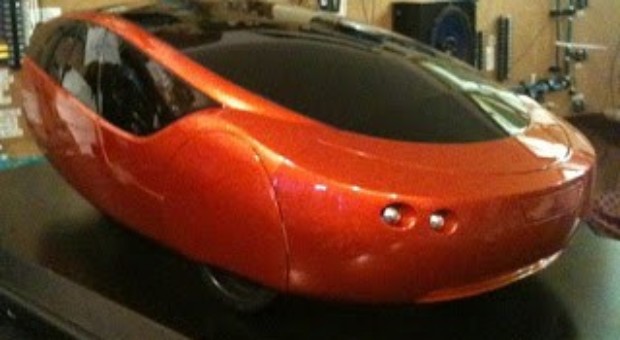
Urbee is a two-passenger hybrid car being designed by Kor Ecologic Inc. to be incredibly fuel efficient, easy to repair, safe to drive, and inexpensive to own. It will last for decades and be good for the environment.
Urbee is designed to be environmentally sustainable. This is because it can efficiently store and use exactly the amount of solar and wind energy you can collect on a one-car garage in one day. If you want to go farther in a day, you can use its ethanol powered engine.
There is much about Urbee that is highly innovative. However, the innovation does not lie in expensive ‘start-of-the-art’ technology, the use of expensive materials, or complicated manufacturing processes. Urbee’s innovation is that it uses widely available materials and components in original ways.
The designers of Urbee have attempted to maximize the distance that can be traveled per unit of energy consumed by minimizing seven important properties of the car: weight, coefficient of aerodynamic drag (Cd), rolling resistance (Crr), frontal area, maximum speed, maximum acceleration.
Lear more about the future of Urbee (via).
| Browse our latest car database to discover more cars |
France probes China link in Renault spy scandal
French intelligence services are looking into China’s possible role in an industrial espionage scandal at carmaker Renault that a senior minister has said involved “economic warfare,” a government source told Reuters.
Three Renault executives, including one member of its management committee, were suspended Monday in the case, which has prompted the French government to warn of an “overall risk” to French industry.
The executives are suspected of leaking information related to the high-profile electric vehicle program, a key plank of the carmaker’s strategy in which, together with its Japanese partner Nissan, it is investing billions of euros.
The government source said French President Nicolas Sarkozy’s office had ordered the investigation. Renault, which declined to comment, is 15 percent owned by the French state.
“The Elysee has charged the DCRI (intelligence services) with an investigation. It is following a Chinese lead,” the source said.
Relations between France and China hit a low roughly two years ago when Sarkozy criticized Beijing’s policy on Tibet, prompting Chinese citizens to call for boycotts of French products.
But a recent visit by Chinese President Hu Jintao to Paris helped forge closer ties, as France seeks to secure Chinese support for its ambitious G20 agenda to explore reforms of the global monetary system.
| Browse our latest car database to discover more cars |
How to Change Motor Oil : How to Find an Oil Leak on a Car
Find an oil leak on a car when performing an oil change; learn how from our expert car mechanic in this free auto-maintenance video example. Please don’t try this with your own car if you don’t have engine knowledges.
| Browse our latest car database to discover more cars |
Funny Snow Accidents in United States
| Browse our latest car database to discover more cars |
2011 Mazda 2 commercial promoted in America
Mazda’s North American Commercial for the ALL New Mazda 2.
| Browse our latest car database to discover more cars |
2011 Mazda 6 with Facelift
This new, upgraded version enhances the strengths of its predecessor, like driving fun and fuel efficiency; while improving interior refinement, environmental compatibility and safety performance.
The new Mazda family face is introduced, along with new head and rear lamps, for more sportiness and a clearer premium identity.
Six engines will be available, including a powerful new 2.0-litre DISI petrol that uses less fuel and produces fewer emissions than the 2.0-litre engine it replaces.
Its five-speed automatic transmission was adapted especially for this new petrol engine to deliver an optimal combination of acceleration and fuel economy.
Updated versions of the Mazda MZR 1.8 and 2.5-litre engines round out the petrol line-up, and on the diesel side the Mazda MZR-CD 2.2-litre turbo diesel engine is available in three power derivatives – from 129 to 180 PS – all of them sporty, with improved fuel-efficiency and lower CO2 emissions.
The Mazda 6 also features new chassis settings and several new active safety features – like a new pivoting adaptive front lighting system and hill-launch assist – that together make the Mazda 6 facelift one of the safest and easiest-to-drive cars in its segment.
| Browse our latest car database to discover more cars |
2011 Mazda 5
| Browse our latest car database to discover more cars |
2011 Audi A1 e-tron electric car
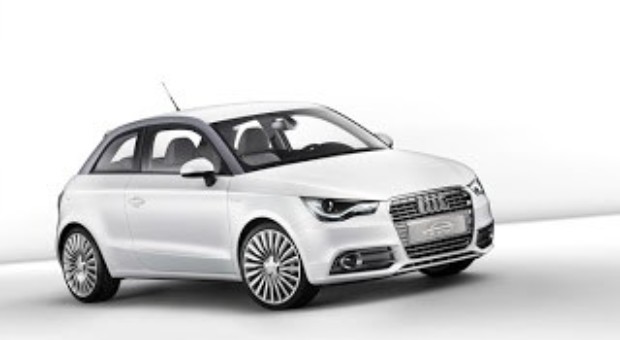
The Audi A1 e-tron is an electric car with a range extender – it is powered purely by electric motor. Audi has created this four-seater specifically for transport in the world’s rapidly growing megacities.
The electric motor, installed transversely at the front, supplies a continuous output of 45 kW (61 hp) and a peak output of 75 kW (102 hp), transmitted to the front wheels via a single-stage transmission. The peak torque of 240 Nm (177.01 lb-ft) is available right from the off. The A1 e-tron sprints from 0 to 100 km/h (62.14 mph) in 10.2 seconds and on to a top speed of more than 130 km/h (80.78 mph).
It draws its energy from a package of lithium-ion batteries arranged in a T pattern beneath the center tunnel and rear bench seat. The liquid-cooled battery supplies 12 kWh of energy. A charging process takes barely three hours with a 230V supply, and less than one hour with a heavy current supply.
While on the move, the driver determines the level of recuperation at five-stage shift paddles mounted on the steering wheel. The Audi A1 e-tron covers over 50 km (31 miles) on one battery charge.
For longer distances of up to 250 km (155.34 miles), there is a range extender on board – a small rotary-piston engine with a displacement of 254 cm3. Running at a constant 5,000 rpm, it recharges the battery via an alternator that generates up to 15 kW (20 hp) of electrical power.
The great strengths of the rotary-piston engine are its vibration-free, virtually noiseless operation, compact dimensions and extremely low weight. The entire assembly weighs just 65 kilograms (143 lb), including the alternator, the special power electronics, the intake, exhaust and cooling system, the acoustic encapsulation and the subframe.
According to the draft for standardization for determining the consumption of range extender vehicles, the Audi A1 e-tron consumes just 1.9 liters per 100 km (123.8 US mpg) – a CO2 equivalent of 45 g per km (72.42 g/mile).
Please read more!
This time the premium brand is releasing this promotional video for the Audi A1 e-tron – a nearly all-electric variant of its compact hatch.
The A1 e-tron comes with an electric motor producing 75 kW (102 PS) of power (45 kW / 61 PS continuous) and 240 Nm (177 lb-ft) of torque (150 Nm / 111 lb-ft continuous) juiced by a 12 kWh lithium-ion battery pack.
The range on the A1 e-tron solely in electric mode is 50 km (31 miles). A range-extending engine helps improve that number to 250 km (155 miles).
That range-extender is a 15 kW single-piston rotary engine used to charge the batteries as the car is running.
The emissions and fuel-economy numbers look good but they’re not zero given the range-extender. Consumption on the European cycle is 1.9 liters/100 km and CO2 emissions are very low 45 g/km.
Top speed is 130 km/h and the 0 to 100 km/h sprint takes 10.2 seconds.
| Browse our latest car database to discover more cars |
Discover more automotive news & videos
The 2011 Ford Mustang GT Coupe
| Browse our latest car database to discover more cars |
The new 2011 Ford Mustang GT battles its bitter V-8 rivals
The new 2011 Ford Mustang GT battles its bitter V-8 rivals — the Chevrolet Camaro SS and the Dodge Challeneger SRT8 — in an epic quarter-mile drag race.
Please bid the winner!
| Browse our latest car database to discover more cars |
2011 Ford Taurus, Super Duty, Mustang GT earns "Best Resale Value Award"
2011 Ford Taurus earns Best Resale Value Award in full-size car category
This is the second consecutive win for the Taurus.
Bell says the vehicle truly impacted the standard full-size car market when it was introduced with a combination of style, efficiency and value.
“The Taurus delivers a great ride with a comfortable interior and is loaded with luxury and safety features such as adaptive cruise control, blind spot indicator and SYNC®,” he said. “Auction transactions for the 2010 Taurus have supported the high residual value forecast we made for this vehicle last year, and all of this resulted in a repeat win for 2011.”
Market share for the Ford Taurus and Taurus SHO has more than tripled since launch, and 90 percent of Taurus sales are with advanced technologies or higher-end series, said Pei-Wen Hsu, Taurus marketing manager,
“The quality of Taurus and Taurus SHO is surpassing the competition, including import brands and premium products,” she said. “And Taurus’ new safety features, such as Blind Spot Information System (BLIS®) with cross-traffic alert and MyKey™; its comfort features, such as multi-contour seats; and the latest driver connectivity technologies, such as SYNC and voice-activated navigation with SIRIUS Travel Link™ are attracting more affluent customers.”
2011 Ford Super Duty earns Best Resale Value Award in full-size pickup category
This also is the second consecutive win for the Super Duty.
“The two new engines in the 2011 Super Duty – a 6.2-liter V8 gas and a 6.7-liter scorpion diesel – provide extra value,” said Bell. “We also are impressed with the all-new six-speed transmission as a replacement for the older five-speed. Add to this potent mix the fact that Ford truck buyers are very loyal to this brand, and you have a perfect recipe for strong resale value.”
Cost of ownership is critical to truck customers, said Mike Murphy, Super Duty consumer marketing manager.
“Resale value is certainly a key component of cost of ownership,” he said. “Many of our customers use their truck for work and in some cases purchase multiple trucks for their fleet, and knowing that their truck or trucks will be worth more than our competitors if they decide to trade it in down the road is a huge advantage for Super Duty.”
Murphy says Super Duty holds its value well because it presents a no-compromise solution for truck customers.
“The 2011 Super Duty has a new powertrain lineup engineered and built by Ford that delivers best-in-class power and fuel efficiency, and the most towing and payload capability in the segment,” he said.
“It also has a new exterior and interior mated with unique technologies – such as SYNC and an LCD productivity screen – that our customers value.
And of course this truck embodies the Built Ford Tough DNA we have in every truck we make. Customers know the Super Duty is durable and will hold up to the pounding they dish out year after year.”
2011 Ford Mustang GT earns Best Resale Value Award in high-performance car category
The 2011 Mustang GT delivers “amazing overall value,” said Bell.
“Ford has done a great job of recapturing the public’s interest and ‘romance’ for the Mustang since the arrival of the Camaro and Challenger,” he said. “The 412 horsepower from the new 5.0, a price near $30,000, and with styling evocative of the original Mustang contribute to its high residual value.
Equally strong and impactful to residual value is the new V6 option with 305 horsepower that offers 31 mpg on the highway at a price around $23,000. Both of these vehicles represent many potential buyers’ vision of the classic pony car – great power and great looks at a great price.”
Resale value is important to sports car customers who tend to make Mustang part of their family, said Mustang Consumer Marketing Manager Jim Owens.
“Customers understand that Mustang has an enduring presence,” he said. “The new 5.0 GT and the 3.7-liter V6 enhance the pony car’s 45-year heritage by offering high performance as well as outstanding fuel economy.”
More information
| Browse our latest car database to discover more cars |
2011 Audi A6: high tech in the executive class
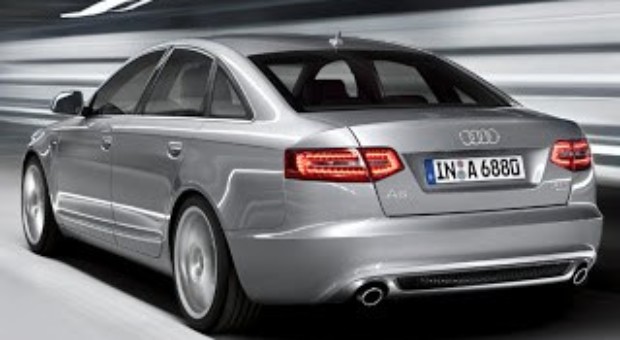
Once again, Audi sets the standard: The new A6 will arrive at dealerships in early 2011.
The successor to the world’s most successful executive sedan features groundbreaking solutions in every area of technology.
An intelligent combination of materials renders the body unusually light; operation is easy, despite a wealth of functionality; and the range of assistance and multimedia systems is extensive.
The new A6 series starts with five powerplants generating between 130 kW (177 hp) and 220 kW (300 hp) of output: two gasoline engines and three TDI units. The Audi A6 hybrid will follow at a later date; it combines the power of a large V6 with the fuel efficiency of a four-cylinder unit.
A number of drivetrain options are also available.
Audi has redesigned its flagship executive class model. The new A6 is set to make its market debut in early 2011. With its light body, sporty chassis and a wide array of new assistance and multimedia systems, the full-sized sedan is packed with innovative solutions in every area of technology. The range of available engines and drivetrains is equally extensive.
Combining the power of a V6 with the fuel efficiency of a four-cylinder engine, the soon-to-be-available A6 hybrid will be one highlight of the lineup.
Much of the body of the new Audi A6 consists of aluminum and high-tech steels, rendering it exceedingly light, stiff and safe. State-of-the art design methods and materials ensure extremely low interior noise levels. Precision tuning of all components and systematic hydraulic damping in the axle and drivetrain bearings provide excellent vibrational comfort.
The design of the new Audi A6 embodies athleticism and elegance. The sedan is 4.92 meters (16.14 ft) long and 1.87 meters (6.14 ft) wide, but just 1.46 meters (4.79 ft) high – sporty proportions that are unrivaled by the competition.
The long engine hood, the low, sweeping roofline and the prominent lines on the flanks create a dynamic overall appearance. Optional LED headlights emphasize the striking expression at the front.
| Browse our latest car database to discover more cars |
Discover more automotive news & videos
Audi US: Audi sales momentum story
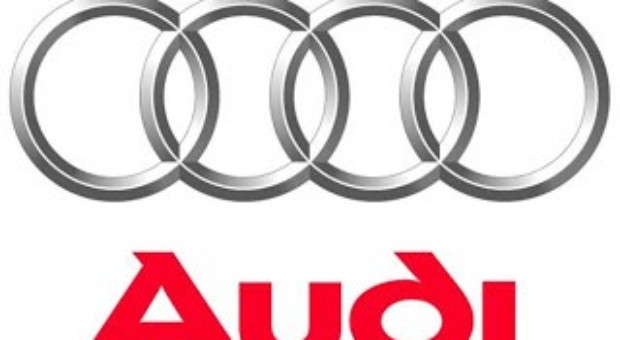
Inside the Audi U.S. sales momentum story
– On strong November 2010 sales, Audi U.S. market share hits 9.5%
– With a full month to go, 2010 already ranks as second-best year for Audi in the U.S.
– Demand for redesigned Audi A8 sedan exceeds expectations
The sales momentum Audi has built throughout the year showed no signs of easing as the brand set a November sales record, increased its market share, established 2010 as the second-best year in its U.S. history with a month to go and stayed on pace to top 100,000 vehicles sold in America for the first time.
“We have a high degree of confidence that 2010 will indeed be a year to celebrate a new U.S. sales record that will provide added momentum as we enter 2011,” said Mark Del Rosso, Chief Operating Officer, Audi of America. “These breakthroughs for the Audi brand haven’t happened overnight. They have resulted from millions of dollars invested by our dealer partners in recent years, an Audi culture that constantly seeks improvements and the most progressive, high demand vehicle line up.”
November marked the eighth month of record U.S. monthly sales this year, and the fourth pacesetting month in a row. A deeper look at the sales data from Audi and its competitors for the month shows a range of added highlights for the Audi brand:
After all of the imported luxury brands selling vehicles in the U.S. reported their results for the month, Audi stood with the second-highest share of the market in its history. Only in April 2010 did Audi achieve a higher share than the 9.5% that it held in November.
For the month, Audi sales increased nearly 38% in November — one of the biggest percentage gains in the imported luxury sector. The U.S. market share record set by Audi was 9.6% of the imported luxury vehicle market in April.
Strong start for redesigned 2011 Audi A8
Audi dealers in the U.S. received shipments of their redesigned 2011 Audi A8 luxury sedans by the end of November.
But that was still enough time to fill higher-than-expected customer orders for the new Audi flagship. November wound up as the top month for Audi A8 sales in 2010 with 310 cars sold in the month’s final days.(Audi sold 23 of the previous-generation Audi A8 in November as it completed the model changeover). Looking ahead, demand looks strong for the new A8 with 50% of the models heading to the U.S. for the remainder of 2010 attached to customer sales orders.
Other noteworthy November story lines
– U.S. consumers are recognizing the benefits of clean diesel technology: Sales of the Audi A3 line more than doubled with Audi A3 TDI models constituting a record 69% of the A3 sales mix for the month. Overall Audi A3 sales in the U.S. set a November record.
– The best-selling Audi models continue to see high demand: Sales of the Audi Q5 leaped 53% in November – nearly enough to make it the best-selling model in the Audi lineup. The Audi A4, however, remained the No.1 Audi model with its sales increasing a solid 12% for the month.
– Audi sports cars are performing: Consumers were clearly attracted to Audi performance models with sales of the 354-hp Audi S5 coupe making up 24.35 of the A5/S5 line sales for the month. The Audi S5 Cabriolet made up another 23.7% of the line’s sales mix. The Audi S4 sedan, named as Esquire magazine’s 2010 Car of the Year, made up 14.3% of the Audi A4/S4 high-volume sales mix to exceed original expectations. And demand for the Audi R8 supercar line jumped 86%, spurred by sales of the all-new Audi R8 Spyder.
– Audi Certified Pre-owned sales continue to run strong: One of the limitations to the Audi momentum story in 2010 has been availability of popular models as the success of the brand has built in the U.S. that has led to a steady increase this year in Audi certified Pre-Owned vehicles. The most recent month set the second-best November U.S. sales for Audi CPO cars and SUVs. November 2010 CPO sales increased 44% from a year earlier
With the 9,365 new vehicle sales in November, Audi sold 91,083 vehicles through the first 11 months of the year. That left it just 2,423 vehicles behind the all-time U.S. sales mark of 93,506 vehicles sold in 2007.
| Browse our latest car database to discover more cars |
Discover more automotive news & videos
Auto Speed Market has a new home!
Dear all, I have just purchased autospeedmarket.com today and set my blog up to redirect over to the .com. Today or tomorrow, depending hosting provinder reaction the speedmarket.blogspot.com will be automatically redirected to autospeedmarket.com.
| Browse our latest car database to discover more cars |
2011 safest cars list by Insurance Institute for Highway Safety
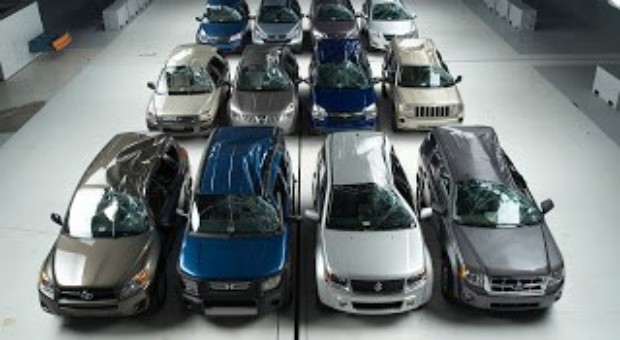
2011 safest cars list by Insurance Institute for Highway Safety
According to Insurance Institute for Highway Safety, for 2011 the safest car is the Buick LaCrosse for Large cars, Audi A3 ( MidSize cars ), Chevrolet Cruze (Small Cars).
66 WINNERS OF 2011 TOP SAFETY PICK AWARD
Sixty-six vehicles earn the Insurance Institute for Highway Safety’s TOP SAFETY PICK award for 2011 (list on p.2), including 40 cars, 25 SUVs, and a minivan.
TOP SAFETY PICK recognizes vehicles that do the best job of protecting people in front, side, rollover, and rear crashes based on good ratings in Institute tests. Winners also must have available electronic stability control, a crash avoidance feature that significantly reduces crash risk. The ratings help consumers pick vehicles that offer a higher level of protection than federal safety standards require.
10 NEW WINNERS FOR 2011
Large car: Mercedes E class coupe
Midsize cars: Kia Optima, Volkswagen Jetta sedan
Small cars: Chevrolet Cruze, Scion tC, Volkswagen GTI
Large SUV: Volkswagen Touareg
Midsize SUVs: Ford Explorer, Hyundai Santa Fe, Mercedes GLK
Front-runners: Hyundai/Kia and Volkswagen/Audi each have 9 winners for 2011. Next in line with 8 awards apiece are General Motors, Ford/Lincoln, and Toyota/Lexus/Scion. Subaru is the only manufacturer with a winner in all the vehicle classes in which it competes. Subaru earns 5 awards for 2011.
How vehicles are evaluated: The Institute’s frontal crashworthiness evaluations are based on results of 40 mph frontal offset crash tests.
Each vehicle’s overallevaluation is based on measurements of intrusion into the occupant compartment, injury measures recorded on a 50th percentile male Hybrid III dummy in the driver seat, and analysis of slow-motion film to assess how well the restraint system controlled dummy movement during the test.
Side evaluations are based on performance in a crash test in which the side of a vehicle is struck by a barrier moving at 31 mph. The barrier represents the front end of a pickup or SUV. Ratings reflect injury measures recorded on 2 instrumented SID-IIs dummies representing a 5th percentile woman, assessment of head protection countermeasures, and the vehicle’s structural performance
during the impact.
In the roof strength test, a metal plate is pushed against 1 side of a roof at a displacement rate of 0.2 inch per second. To earn a good rating for rollover protection, the roof must withstand a force of 4 times the vehicle’s weight before reaching 5 inches of crush.
This is called a strength-to-weight ratio.
Rear crash protection is rated according to a two-step procedure. Starting points for the ratings are measurements of head restraint geometry — the height of a restraint and its horizontal distance behind the back of the head of an average-size man.
Seat/head restraints with good or acceptable geometry are tested dynamically using a dummy that measures forces on the neck. This test simulates a collisionin which a stationary vehicle is struck in the rear at 20 mph.
Seats without good or acceptable geometry are rated poor overall because they can’t be positioned to protect many people.
Read more here, please.
| Browse our latest car database to discover more cars |
Discover more automotive news & videos
US Report: Auto sales jump, upswing seen for 2011
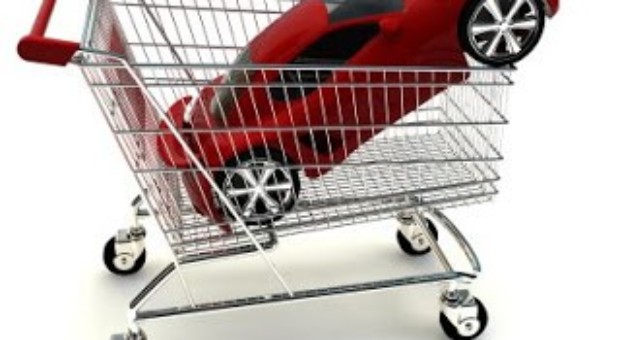
U.S. auto sales rose to the highest rate in 16 months in December, and major automakers forecast the recovery would gather momentum in 2011 as the industry distances itself from one of its deepest slumps ever.
Auto sales are one of the first snapshots of U.S. consumer demand.
The 11 percent rise in December auto sales stands as the latest in a string of indicators including unexpectedly strong factory orders for November pointing toward growing confidence in the recovery.
U.S. auto sales rose more than 11 percent in 2010 to almost 11.6 million vehicles, snapping a four-year slide that forced the Detroit automakers into a wrenching restructuring that included government-directed bankruptcies for GM and Chrysler.
In a year-end surge that took the industry by surprise, the annualized sales rate for December jumped to almost 12.6 million vehicles, the highest rate since August 2009 when the U.S. government’s “Cash for Clunkers” trade-in incentives touched off a short-lived boom.
Major automakers, including Ford and GM, said they expected that sales for 2011 could top the 13 million-vehicle level.
Analysts said that estimate could prove conservative if the momentum of recent months continues.
“We have seen real improvement in actual consumer demand, particularly in the last quarter of 2010,” TrueCar.com analyst Jesse Toprak said.
General Motors Co’s sales rose 7.5 percent from a year earlier in December. Ford Motor Co’s sales rose 6.7 percent and the carmaker overtook Toyota Motor Corp as No. 2 in the U.S. market for 2010.
The gains for the top U.S. automakers underline the stunning turnaround in the fortunes of GM and Ford. Shares of Ford, which avoided a bailout, have gained more than 70 percent over the past year.
Shares of GM are up 13 percent from a November initial public offering that marked the automaker’s reemergence as a listed company after a U.S. government bailout.
GM shares closed up 2.3 percent at $37.90 and Ford stock gained 0.75 percent to $17.38 on Tuesday.
Toyota, which has been struggling with the aftermath of a safety crisis that surfaced in late 2009, posted a sales decline of almost 6 percent in December.
For 2010, Toyota sales were almost flat from 2009, the worst of the downturn when industry-wide sales were at the lowest level since the 1980s.
Other major automakers posted double-digit percentage gains for December. Chrysler sales rose 16 percent and Nissan Motor Co sales rose 28 percent. Sales for Honda Motor Co were up 21 percent.
Hyundai Motor Co’s sales gained 33 percent. Its affiliate Kia Motors posted a 45 percent gain, continuing a trend that has seen the Korean brands take share from rivals in a recovering U.S. market.
Hyundai has benefited from Toyota’s stumbles, an improved reputation for quality and its ability to undercut established competitors on price, inform Reuters.
| Browse our latest car database to discover more cars |
How to check your car tyres for damage
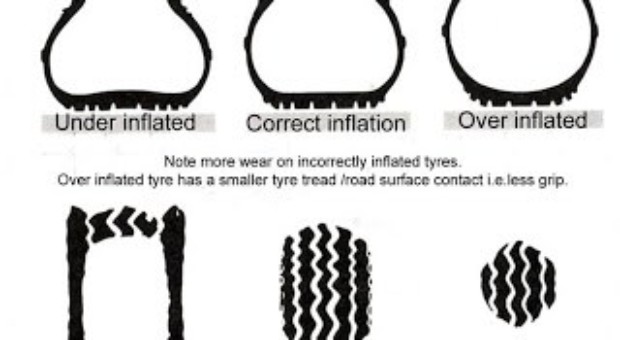
Car tyres play an integral role in the performance of the car.
Therefore, they should be well-maintained. It is very critical to check car tyres for wear and tear periodically. Any damage or deterioration of car tyres may be risking an accident.
Here are some causes of car tyre damage:
– Make and Position of Car Tyres
– Heavy Weight of Car
– Improper Tyre Pressure
– Tyre Imbalance
– Incorrect Alignment
– Tyre Rotation
– Aggressive Driving Style
| Browse our latest car database to discover more cars |
McLaren Technology Centre
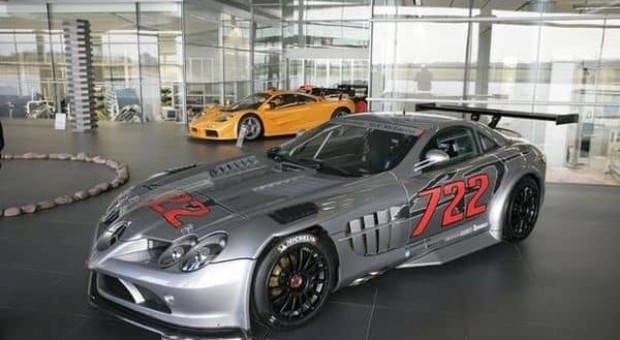
The staggeringly sleek McLaren Technology Centre is an office and factory in Surrey (UK) for the Formula 1 racing-car company.
The McLaren Technology Centre is the corporate and production headquarters for the McLaren Group. This state of the art centre, designed by renowned architect Lord Foster, has brought together all of the Group’s activities under one roof.
An artificial lake helps to cool the building and its beating heart – a 475-foot-long wind tunnel used to test Formula One cars.
via
| Browse our latest car database to discover more cars |
2011 VW Passat Coupe NCC Concept review
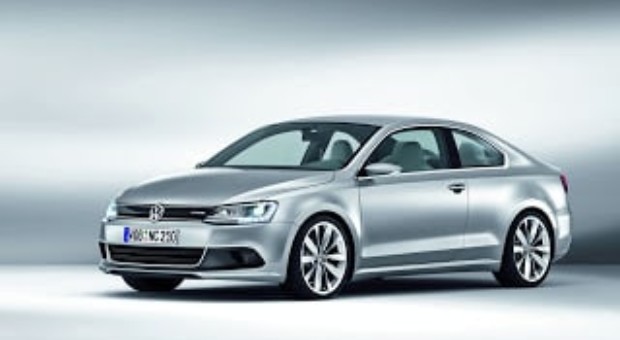
2011 VW Passat Coupe NCC Compact Coupe Concept Review
New Compact Coupe unites 4.2 l/100 km (45 mpg) with top dynamics
Concept of an entirely new compact coupe emits just 98 g/km CO2, can go 227 km/h if necessary and accelerates to 100 km/h in 8.6 seconds
Wolfsburg / Detroit—January 2010. For Volkswagen, this marks the beginning of an action-packed year in which more new models will be introduced than ever before in the company’s history. No. 1 on the spectacular list of new products for 2010 is a car based on entirely new concepts and technology, a coupe with a hybrid drive that is extremely fast yet futuristic in its fuel economy.
It has sports appeal and sharp styling yet is remarkably elegant—positioned between the Europe’s best-selling sports car, the Scirocco, and the internationally successful CC. Its name: the New Compact Coupe. Site of its world premiere: Detroit, North American International Auto Show (January 11 to 24). Combined fuel consumption: 4.2 l/100 km* (45 mpg**)! CO2 emissions: 98 g/km! Incredible, considering its fuel economy, are its top speed of 227 km/h (141 mph) and the short 8.6 seconds it needs for the classic sprint to 100 km/h (0-60 mph in 8.1 seconds).
These values were made technically feasible by a high-tech alliance: a TSI® engine (gasoline powered with 110 kW / 150 PS) that is as fuel efficient as it is sporty, an electric motor (20 kW / 27 PS) and a 7-speed Direct Shift Gearbox (DSG®) – which in the eyes of many car drivers is the best automatic in the world today.
Just over a month after the debut of the most fuel-efficient four-seater in the world – the up! lite in Los Angeles – this new concept car confirms once again that future Volkswagen hybrid vehicles will not only focus on fuel economy, but – similar to pure gasoline and diesel versions of Europe’s most successful automobile brand – will also aim to be sporty and fun to drive.
In the first half of the year, Volkswagen will launch its first hybrid model on the market under the VW label – an SUV with full-time all-wheel drive. Meanwhile, the New Compact Coupe shows, both technically and visually, how Volkswagen envisions a front-wheel-drive hybrid for the compact class that would be implemented when the time is right.
Downsizing at its best: The concept car is driven by an extremely innovative high-tech alliance that closely approximates potential production versions. Volkswagen is using a four-cylinder version of the TSI gasoline engine range here.
Direct injection, turbocharging and an intercooler generate a power of 110 kW / 150 PS from just 1.4 liters of engine displacement – downsizing at its best. TSI technology has impressively demonstrated its extreme durability in many car racing events, including on the legendary Nordschleife of the German Nürburgring, the most demanding race course in the world.
Since the first TSI engine was introduced just over five years ago, 3.5 million units of these boosted and torque-strong four cylinder engines have already been installed in vehicles. The TSI of the NCC – which, of course, is also equipped with ESC – transfers a hefty 240 Newton-meters (177 lbs/ft) of torque to the front wheels at low engine speeds.
Emissions-free by E-motor: And there is even more power: An electric motor is integrated between the TSI and the efficient 7-speed automatic DSG; it can be used for pure electric, emissions-free driving, or it can support the TSI with aggressive torque.
The electric motor develops a power of 20 kW / 27 PS. The power and torque of the two drive units supplement one another during what is known as boosting – when accelerating to pass, for example. Since the NCC can also be driven in a pure electric mode, the drive system is classified as a Full Hybrid.
A lithium-ion battery (1.1 kWh) at the rear of the vehicle supplies the electric motor with energy. By the way, in electric mode, the TSI is not only shut off; it is also disengaged by a clutch to avoid drag losses.
Frequently coasting: As soon as the driver releases the gas pedal, the TSI is disengaged from the transmission. This so-called “coast-down” is even possible at higher speeds, as in freeway driving.
Since drag losses are eliminated here too, the NCC coasts for a very long time. And this promotes an anticipatory style of driving that leads directly to reduced fuel consumption.
Recovering kinetic energy: In braking, the electric motor – now operating as a generator – recovers kinetic energy which is then stored in the lithium-ion battery. Of course, just like the new BlueMotion models from Volkswagen, the New Compact Coupe also has a stop-start system on board. This reduces fuel consumption, especially in urban areas and in stop-and-go traffic.
The unique interplay of efficiency and dynamics is reflected one-to-one in the styling of the coupe that is painted in Tungsten Silver Metallic. Klaus Bischoff, Chief Designer for Volkswagen, comments: “Styling of a coupe is considered the ultimate in automotive design. Our team has achieved a symbiosis of efficient technologies and elegance in the New Compact Coupe that is unique in its expression. Just a few precisely placed lines and powerfully sculpted surfaces have created a timeless dynamic and purist elegance that is typical of Volkswagen.”
Front end – showing a strong face: The front of the New Compact Coupe shows an extremely confident and focused expression. Moreover, the car’s width is emphasized by the horizontal line styling with integrated Bi-Xenon™ headlights – including LED daytime running lights and turn signals.
The technically complex headlights contribute to unmistakable visual recognition of the concept car – both day and night.
Side view – a sharp profile: In the car’s side profile, styling properties characteristic of all-new Volkswagen vehicles of the past year have been merged with elegant and sporty coupe features, resulting in a new interpretation of the design DNA.
The best examples of this are the characteristic tornado line and the powerfully emphasized curves of the wheel arches. They intersect the main volume of the large, homogeneous surfaces, conveying a powerful dynamic.
The side windows round out this impression with a concise signature. Forging a stylistic bridge to current models are the 19-inch Lugano alloy wheels.
Rear – a strong concluding statement: The cargo area of the New Compact Coupe is decidedly powerful in design.
Clean surfaces and a muscular shoulder section dominate here too. Bright: the LED taillights. A spoiler lip that reduces air turbulence was styled into the top of the trunk lid; it further improves the car’s remarkable aerodynamics.
At the bottom there is a stylized diffuser; the tailpipe of the exhaust system is embedded here for a positive aerodynamic effect.
Dimensions – millimeters at work for styling: The New Compact Coupe is 4.54 meters (178.5 inches) long and 1.78 meters (70.1 inches) wide. Its low body height of 1.41 meters (55.6 inches) adds styling energy to the interplay of its dimensions; the ratio of broad width to low body height intensifies the Volkswagen’s dynamic image.
Also large are the track widths (front 1.53 meters / 61.2 inches; rear 1.54 meters / 61.4 inches) and wheelbase (2.65 meters / 104.4 inches).
Showing its true colors: The NCC is a four-seater with exceptional long touring comfort and generous occupant space on sport seats that are upholstered in a light Berry White leather.
Also designed in this color are the lower cockpit area, parts of the center console and the door trim panels. By contrast, all other surfaces (except accents and controls), including the leather-wrapped steering wheel, are styled in the darker Grigio Quartz color.
In its interior, the Volkswagen offers the best feeling of spaciousness in its class. This means that despite the sporty low body height, the car offers ample headroom (front and rear) as well as legroom in the rear.
The coupe’s 380 liter trunk can handle luggage for four people without a problem.
Climb in, buckle up, drive away: As soon as the doors of the New Compact Coupe are opened, a reason for the Volkswagen brand’s tremendous success is revealed: unparalleled perfection in details and intuitive operation.
The instruments are laid out ideally. The new multi-function sport steering wheel is the key interface between human and machine. The right hand rests naturally on the gearshift lever of the 7-speed DSG, and in front of it, the control panel sports newly designed controls for the automatic climate control system and the 8-inch touchscreen for stereo and navigation systems.
Atop the panel is the hazard flasher switch and center air vents. The center console’s control panel is angled slightly toward the driver to perfectly align the cockpit to the driver’s needs. Also optimally laid out for viewing are the round instruments with their chrome bezels; the multi-function display (trip computer and additional navigation display) is placed between them.
Upgraded with metal surrounds are all air vents, multi-function buttons on the steering wheel, the sound and navigation system, the climate control, the DSG unit, white accents of the door trim, and instruments and panels (window lift and mirror adjustment) in the doors.
Individual seats in the rear: Designers have shaped the rear seating area in the style of large Gran Turismo cars. Passengers sit on two comfortable sport seats here. Between them is the continuation of the center console that passes through the entire interior.
In the rear, the center console is equipped with additional storage space as well as climate controls and a fold-out center armrest.
The finish and quality of materials in the interior make viewers forget completely that the New Compact Coupe is still a concept car. And that too is typical Volkswagen – no compromises.
Source: Wolkswagen
| Browse our latest car database to discover more cars |
2011 VW Golf R is coming to America!
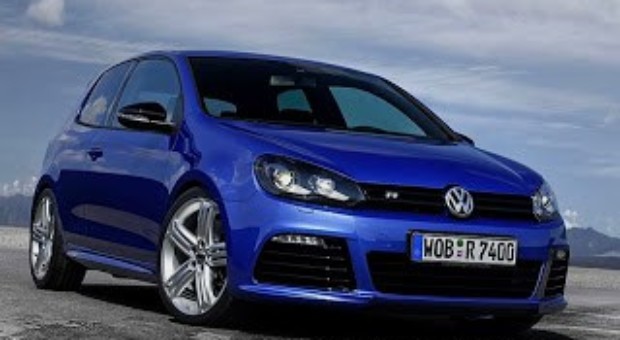
For most VW enthusiasts, we could have ended this article at the headline. For those of you who don’t know and those who want the details, continue reading.
North American VW enthusiasts have been asking for it, and now they’re going to get it. The most powerful production Golf to date is on its way to the shores of America in the form of the Golf R.
And with 50 more horsepower than the award winning 2.0L TSI®, this is the VW a lot of Dub loyalists have been waiting for. Here are a few juicy details to tide you over until its release.
The Golf R is fitted with a turbocharged, 2.0L inline 4, mated to a 6-speed manual transmission.
Power is delivered to all four wheels via the Haldex 4MOTION® all-wheel-drive system and exits the Golf R through a set of dual exhaust tips, centered at the rear.
Drivers will notice right off the line that the turbocharged engine blasts the Golf R from zero to 60 – and the bigger brakes bring it back to zero – faster than ever.
Available in 2-door or 4-door body styles, the R will feature a number of model-specific touches.
On the outside, it’s equipped with unique 18-inch alloy wheels, R badging and body kit, while the interior packs in signature upholstery, doorsills, shift knob and steering wheel.
The Golf R will also come with dual- zone Climatronic® air-conditioning and leather seating surfaces, standard. The Golf R will be released in the U.S. in limited numbers for a very limited time.
Source: Volkswagen
| Browse our latest car database to discover more cars |
Volkswagen of America closes 2010 with best overall year sales since 2003
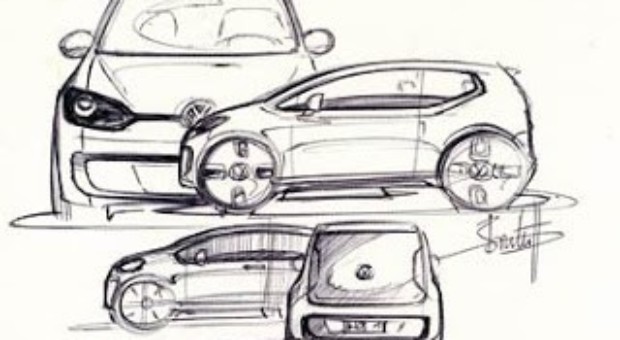
Volkswagen of America closes 2010 with best overall year sales since 2003
— 23,867 Volkswagen Vehicles Sold in December; Best December Sales Month Since 2005
Volkswagen of America, Inc. today reported that December 2010 marked a 17 percent increase over prior year sales for the entire line of vehicles.
In addition, 2010 achieved a 20 percent increase over 2009 total year sales. Increased sales numbers resulted in best annual sales since 2003 and best December sales since 2005.
With the growing popularity of Volkswagen’s SUV models, the Tiguan achieved its best month ever, selling 2,551 vehicles, a 42 percent increase from the same month last year. Bolstered by the all-new model, the Volkswagen Touareg ended the year positively with a 68 percent increase compared to 2009.
Other top selling vehicles included the Jetta with a 34 percent increase, Golf with a 72 percent increase and Routan with a 50 percent increase compared to December 2009.
The all-new Jetta, Touareg and Tiguan along with the Jetta SportWagen, Golf and GTI are the 6 Volkswagen models that earned the prestigious Insurance Institute for Highway Safety’s (IIHS) TOP SAFETY PICK award for 2011, the highest rating possible from the non-profit safety research organization.
Volkswagen’s impressive line-up of TDI Clean Diesels fared well again in December with Golf selling 56 percent of its models as TDI and the all-new Touareg selling 35 percent as TDI.
Overall, 22 percent of Volkswagen models were sold with TDI Clean Diesel engines.
“The Volkswagen team is proud to end 2010 on a positive note, receiving the great IIHS news and achieving record sales numbers not only for specific models but for the best total year sales since 2003,” said Mark Barnes, Chief Operating Officer, Volkswagen of America, Inc.
“As we saw last month, our minivan and SUVs continue to be popular among U.S. consumers as does the all-new Jetta with its long-list of standard features and attractive price. As we move into the 2011, we look forward to continuing this positive sales trend with the introduction of some of the best Volkswagen models ever, including the New Midsize Sedan to be built in Chattanooga, Tennessee, and the all-new 2012 Beetle.”
See finacial result here
| Browse our latest car database to discover more cars |
2011 New Ford Edge

The Ford Edge is a crossover SUV that was launched in mid-2006. It is based on the Ford CD3 platform, which is also used by the Edge’s near-twin Lincoln MKX crossover, two Mazda crossovers, the Mazda CX-7 and Mazda CX-9 and also the Ford Fusion, Mercury Milan, and the Lincoln Zephyr / Lincoln MKZ sedans.
This platform was originally launched on the Mazda6 sedan.
As a crossover vehicle, the Edge bridges the gap that exists between the compact Escape SUV and the 7-passenger Taurus X crossover SUV.
The Edge made its public debut at the 2006 North American International Auto Show in January, with production starting in the fall of 2006 as a 2007 model. The Edge (codename U387) will be built at Ford’s Oakville Assembly Complex in Oakville, Ontario, Canada.
The Ford Edge is expected to compete with other SUV’s in the mid-compact segment such as the Chevrolet Equinox and Honda CR-V, while it is also expected to compete with the new Dodge Nitro. The Edge is Ford’s third mid-size SUV, slotting below the Taurus crossover and the Explorer SUV in the lineup. A hybrid version is expected for the 2010 model year.
The Edge and MKX will be among the first vehicles to use Ford’s new 3.5 L Duratec 35 V6 engine. This new engine produces 265 hp (196 kW) and 250 ft·lbf (339 N·m) and is mated to the new 6F six-speed automatic transmission, which was co-developed with General Motors.
When the Ford Edge was first introduced in 2007 it represented a big step forward design-wise for crossover utility vehicles.
After only three years on the market the current Edge is far from stale, still Ford saw fit to give it a refresh.
Introduced at the 2010 Chicago Auto Show, the 2011 Ford Edge builds on the stylistic progress of the original model, while also benefiting from an improved interior along with a number of advanced technological features
| Browse our latest car database to discover more cars |
Discover more automotive news & videos
2011 New Infiniti QX56
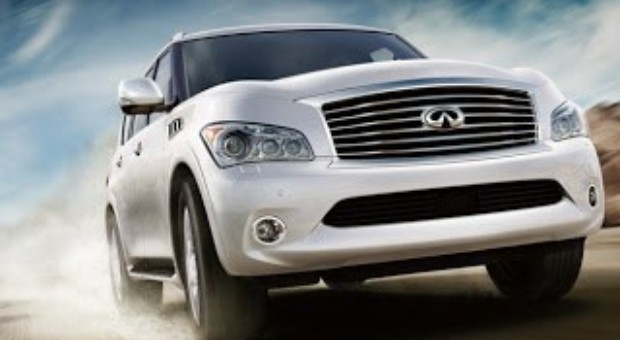
With an eye towards snaring an even larger slice of the premium full-size SUV market, the all-new 2011 Infiniti QX56 made its world debut in New York boasting a new look, new features and enhanced capabilities.
The Infiniti QX is a luxury SUV built by Nissan and originally sold in North America. The first generation received its naming inspiration from the recognized four wheel drive terminology “4×4” with Infiniti adding a “Q” at the beginning to suggest it was a luxurious “4×4”, borrowed from the Q45. The first generation also had a briefly available Japanese version called the Nissan Terrano Regulus.
In addition to smartly stepping up its real-world appeal, Infiniti announced that price points for both the rear- and four-wheel-drive variants of the 7/8-passenger QX56 will carry over at existing 2010 levels.
That means a rear-drive 2011 QX56 will start at $57,565, while the four-wheel-drive model will open at $60,665 when they go on sale this summer.
The QX’s interior design includes a number of the standard and optional amenities featured in the 2010 Infiniti M, such as semi-aniline leather seats, four-zone climate control, a Bose 2-channel, 13-speaker Premium Audio surround sound stereo system with hard drive memory storage, a hard-drive based navigation system, XM satellite radio with NavTraffic is standard, a power liftgate/tailgate, and Infiniti Intuitive Park Assist, a parking assist feature which uses the around view monitor.
Other features include climate controlled front and rear seats, streaming audio via Bluetooth wireless technology, a center console cooler for storage of cold drinks which can be accessed by both front and rear passengers, power sliding rear seats, power third row seats, and a 7-inch DVD rear-seat entertainment system. Curtain Vent, new for this generation, directs air flow from the air conditioning system from above each side window down towards the floor.
A new Around View Monitor system uses a camera mounted on the grill giving a 180 degree view in front and another camera mounted on the passenger side of the vehicle’s side mirror helps eliminate blind spots on the side at low speeds such as when in parking lots or on off-road adventures.
| Browse our latest car database to discover more cars |
2011 Audi RS5 vs. 2010 BMW M3, 2011 Cadillac CTS-V
2011 Audi RS5 vs. 2010 BMW M3, 2011 Cadillac CTS-V
This whole car debate is all the follow the crowd mentality. Only reason people continue to say european cars are better is because of years of reputatoin. I will admit that over the past 30 yrs or so imports have been better, but things are seriously changing. And this caddy is better as a sports coupe, with more room, performance, and at a cheaper price and equal luxury. Looks are subjective
This is a comment grabbed from YouTube‘s post!
| Browse our latest car database to discover more cars |
Discover more automotive news & videos
2011 Volvo V60
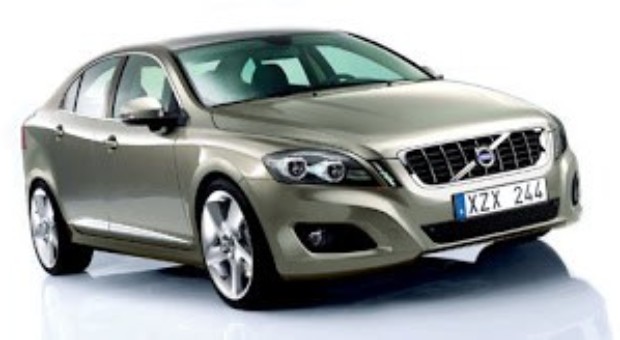
The new Volvo V60 makes its entry onto the car market with its sights firmly set on giving the all-new S60 sedan model a tough match over the title of “The Most Dynamic Volvo Model Ever”.
The initial annual target for the new Volvo V60 is 50,000 cars. Of these, no less than 90 percent will go to European buyers.
The first cars will be delivered to customers in autumn 2010. For this moment the price is unknown.
| Browse our latest car database to discover more cars |
Dakar 2011 preparation in Spain
Red Bull motorsport athletes Carlos Sainz and Marc Coma enjoy a training session to the beat of a Tango.
One more phase in their preparation to what is waiting for them at the Dakar 2011, to be staged in Argentina and Chile.
| Browse our latest car database to discover more cars |
Auto Speed Market Blog: Partners

If you are a webmaster and would you like to add your blog/website into this section, please feel free and send me an email.
First, please add the following code into your partners section. After adding the lines displayed below, please send me an email and your code provided will be added soon.
Here are the online partners of Speed Market Blog:
| Browse our latest car database to discover more cars |
2012 Ford Mustang – Review of Boss 302 model
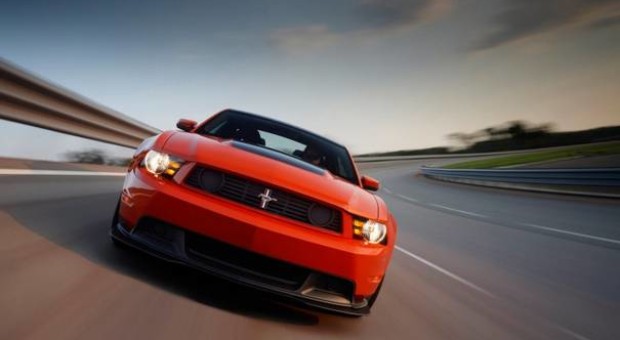
The Ford Mustang is an American automobile, originally based on the Ford Falcon compact. The first production Mustang, a white convertible with red interior rolled off the assembly line in Dearborn, Michigan on March 9, 1964.
Introduced to the public at the New York World’s Fair on April 17, 1964, and via all three American television networks on April 19, it was the most successful product launch in automotive history, setting off near-pandemonium at Ford dealers across the continent.
The original Mustang inspired the term pony car and prompted many imitators. The Mustang’s combination of sporty design, low price, and overall performance allowed it to sell over one million units in its first 18 months on the market.
As one might expect, the Mustang delivers a good deal of power, as well as a tight suspension and anti-lock brakes to help handle that power.
The base model is a 210hp V6, but a 300hp V8 is also available. The ride was improved not only by the addition of new struts, but also by an increase in the width of the car, a much more solidly built frame, and 16″ wheels (or 17″, depending on trim).
After a number of different generations and redesigns, the Mustang remains available today.
In crash tests carried out by the NHTSA, the Mustang performed well, receiving 5/5 stars for front impact and rollover and receiving 4/5 stars for side impact.
2012 Ford Mustang Boss 302
The all new 2012 Mustang Boss 302 has been revealed at the historic Laguna Seca race track in CA. Check out this best-handling straight-production Mustang ever offered by Ford.
| Browse our latest car database to discover more cars |
2011 Kia Sportage
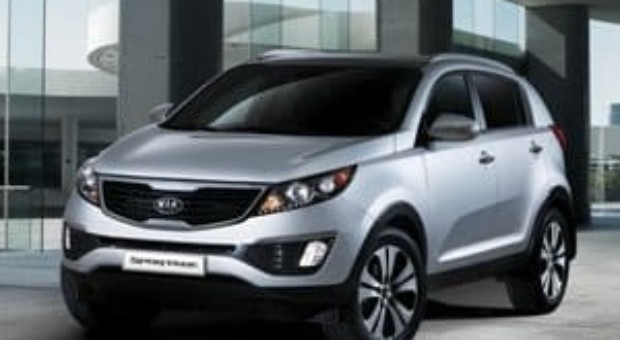
Experience a whole new change by Kia – Kia believes in better technology, performance and design. Experience a whole new change by Kia.
The first generation Sportage was developed with a Mazda Bongo engineering base platform. It shares many mechanical components such as the engine, transmissions (early), and differentials with the Mazda line of vehicles. This was during the alliance of Ford-Mazda-Kia for technology and product sharing in the early to mid-1990s.
Sportage was sold in either a four-door or a two-door soft-top convertible. The four-door version also had a long chassis body (Sportage Grand) in Asian and Australian markets.
The long chasis models came with 10 inches (250 mm) longer boot space in the back. The first-generation Sportage was discontinued in North America for 2002, worldwide for 2003 except for Pakistan (Asia) it continued till 2004, later it was put on hiatus until a second generation model was ready.
The four-door short chassis model measures just a quarter of one inch longer and the same width as the Geo Tracker, but boasts 130 hp (97 kW) and optional four wheel drive. The 1998 Kia Sportage was the world##Q##s first production vehicle to be equipped with a knee airbag.
 This first generation model (1993–2002) sold in low numbers even domestically in South Korea, however, and post-Hyundai takeover models (1997–2002) were recalled twice for rear wheels dismounting while driving.
This first generation model (1993–2002) sold in low numbers even domestically in South Korea, however, and post-Hyundai takeover models (1997–2002) were recalled twice for rear wheels dismounting while driving.
The 2011 will play host to the debut of the Third-generation Peter Schreyer-penned Sportage. Sharing the same platform as the Hyundai Tucson, the new Sportage will have larger overall dimensions than previous iterations.
It is also expected to feature the same powertrain options as the Tucson (and its European tag, iX35).
Related External Links
| Browse our latest car database to discover more cars |
Discover more automotive news & videos
2011 Dacia Duster – virtual concept
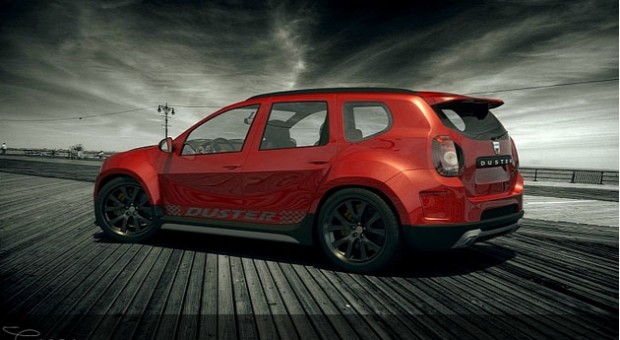
The Dacia Duster project was born out of the simple premise that a real need existed in the world for an affordable, comfortable and rugged 4×4, a class which is currently not well served.
Aware of this gap, the Renault group decided to develop an all-terrain vehicle aimed initially at emerging markets. The needs of European customers were also taken into account from the project outset.
Check now a virtual tuning project –
| Browse our latest car database to discover more cars |
Girls Of Auto Show
| Browse our latest car database to discover more cars |
Pimp my ride, balcanic version fail
| Browse our latest car database to discover more cars |
How to properly carry a car ?

This is the guide! The picture was taken in Romania, in Constanta.
| Browse our latest car database to discover more cars |
2011 Porsche Cayenne – Road test
All new Porsche Cayenne 2011 Driving
Porsche AG is presenting the brand-new generation of the Cayenne Sports Utility at the Geneva Motor Show in early March.
The highlight of this new generation is the world debut of the Cayenne S Hybrid with its parallel full hybrid drive and fuel consumption in the New European Driving Cycle of just 8.2 litres/100 kilometres (equal to 34.4 mpg imp), resulting in CO2 emissions of just 193 g/km.
The Porsche Cayenne S Hybrid combines the performance of an eight-cylinder with the economy of a six-cylinder running on much less fuel.
Led by the Cayenne S Hybrid, all models in the new generation are trendsetters in efficiency and performance in their respective segments. Compared with the former models, fuel consumption is down by up to 23 per cent.
| Browse our latest car database to discover more cars |
Discover more automotive news & videos
2011 Porsche Cayenne 902 Coupe Edition
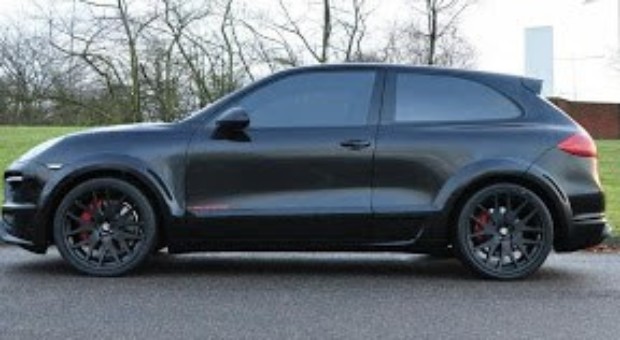
The Porsche Cayenne is a five seat mid-size luxury sport utility vehicle manufactured by the German manufacturer Porsche since 2002, with North American sales beginning in 2003.
Its platform was developed by Porsche and is shared with the Volkswagen Touareg and the Audi Q7. It is the first V8-engined vehicle built by Porsche since 1995, when the Porsche 928 was discontinued.
Since 2008, all engines have featured direct injection technology. The Cayenne’s chassis type numbers are as follows: Type 955 (2002 – 2006), Type 957 (2007 – 2010), and Type 958 (2011+).
The second-generation Cayenne (Type 958) was unveiled at the 2010 Geneva Motor Show in March following an online reveal on February 25, 2010.
The Cayenne’s frame and doors are sourced from Volkswagen, who uses the frames and doors for the Volkswagen Touareg model. All other aspects of vehicle design, tuning, production are done in house at Porsche.
British firm Merdad has announced that it will debut the Cayenne 902 Coupe at the upcoming MPH The Prestige & Performance Motor Show. Power ranges from 550-750 hp.
Starting with the latest generation of the Porsche Cayenne, Merdad chops off the SUV’s rear doors and proceeds with the necessary changes to the rest of the body. A comprehensive styling kit with aero parts and a choice of black or silver colored 22-inch alloy wheels along with an electronic lowering module are then added to the 902 Coupe.
The interior of the two-door Cayenne is swathed in black leather and red Alcantara, plus unique trim and a new steering wheel.
Being a custom build, Medrad also improves the Porsche’s performance offering various upgrades for the Turbo model (550bhp to 750bhp), with the most potent version boasting a 0-60mph sprint time of 4.4 seconds.
| Browse our latest car database to discover more cars |
Discover more automotive news & videos
2011 New Pagani C9 Official Teaser
2011 New Pagani C9 Teaser
Notorious Italian supercar manufacturer Pagani have released a teaser video for the next generation Zonda dubbed C9.
The video shows the likeness of Pagani founder Horatio Pagani sipping a cup of coffee while picking up a small metallic object which appears to be a 1:43 scale model car. Despite the brief glimpse we can make out a very Zonda-esque exhaust system with two centrally mounted exhaust pipes pointing out.
We’ve previously reported that the Pagani C9 would come with a bespoke 6.0 liter V12 AMG engine with around 700 PS (690 bhp / 515 kW) and 1000 Nm of torque. Although the engines comes from AMG, the V12 has little to do with the V12 found in the Mercedes SL65 Black Series.
The Pagani C9 is expected to have its world premiere at the Geneva Motor Show in March 2011.
| Browse our latest car database to discover more cars |
BMW i8 Vision EfficientDynamics – spy photos – BMW’s future is promising
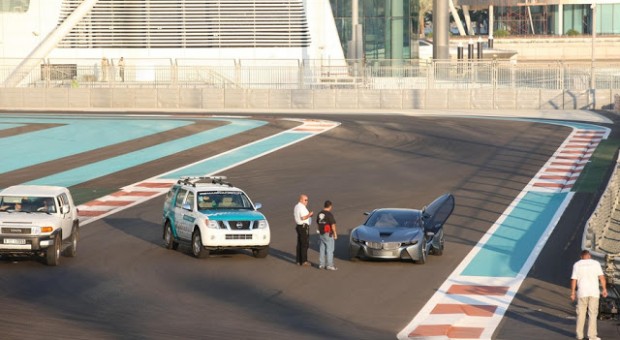
I8 BMW Vision EfficientDynamics – spy photos – BMW‘s future is promising
Some time ago I saw a spot on YouTube’s presentation of a new BMW concept. Brilliant, attractive, futuristic. BMW presents a concept almost incredible that it is not thought feasible anytime soon.
During this time, BMW will bring forth its philosophy with such groundbreaking concepts such as the BMW MegaCity Vehicle and BMW i8. Which is the term for the production car of the Vision Efficient Dynamics concept car.
Below is the spot that I speak, you remember it (New BMW Vision EfficientDynamics Concept Car):
When we say BMW, everything is possible. Below you can admire the new BMW spy photos of I8 taken in Abu Dhabi. BMW car manufacturing company, has already registered designs and trademarks, i1, i2, … i9. Here is the list.
BMW will introduce I8 – spy photos:
Here is the Vision ED with a new coat of paint, this time in a beautiful gray finish that shimmers in natural sunlight, giving the car a more production ready look. Otherwise, true to their word, this car visually seems to be relatively unchanged from the original concept car.
You can see the car’s driver wearing a crisp racing suit and you can see men on the side of the track with cameras in hand as well as a video rig. This means that this car is not out on the track for testing purposes, but rather for a photo shoot. Is this for more promotion of the vision ED concept car, or might this be an actual production version of the VED car (rumored to be named the i8), noone knows at this point.
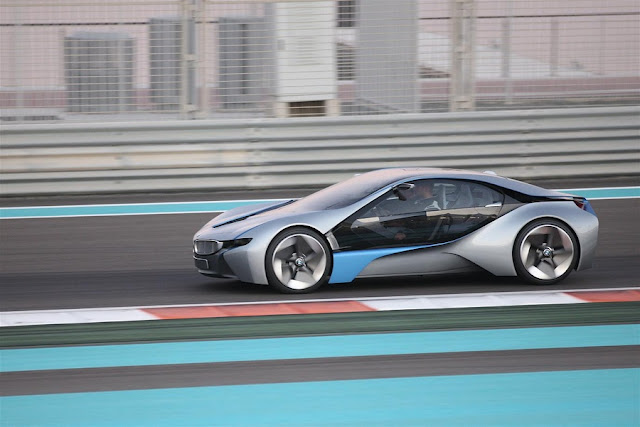
BMW VisionED (i8) spied during photoshoot in Abu Dhabi.
What is known is that the car will have a revolutionary drivetrain featuring a 161-horsepower 1.5-liter 3-cylinder turbo diesel engine mated with a hybrid synchronous motor on the front axle (80HP) and full electric motor on the rear axle (51HP), to give a combined 292HP good for 0-60 in 4.7seconds.
Here you can see other spy photos.
| Browse our latest car database to discover more cars |

